
NWSPORTSMANMAG.COM FISHING • HUNTING • NEWS

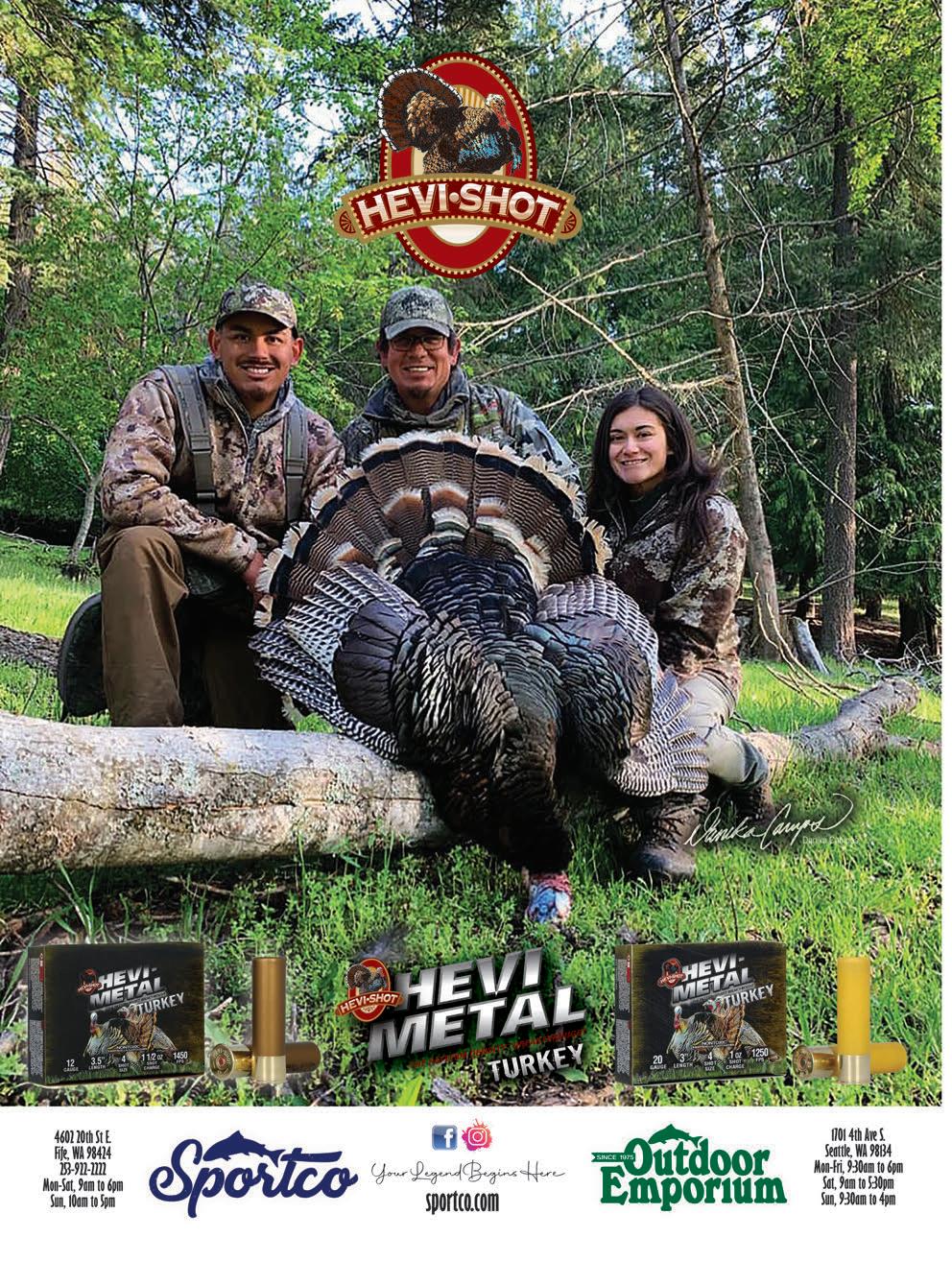



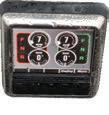


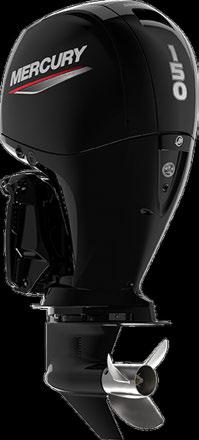

14900 SE STARK ST. • PORTLAND, OR 97233 HOURS: MON-FRI 8AM-6PM • SAT 9AM-3PM MOTORS MUST BE CAPABLE OF ACCEPTING JOYSTICK APPLICATION. CERTAIN LIMITATIONS APPLY. 503-255-8487 • CascadeMarineCenter.com Good Used Boats, Repair Parts, Quality Service, Knowlegeable Staff SALES • SERVICE • ENGINES 8hp and 9.9hp, and Joystick in stock. Call now! Docking and maneuvering your boat in high winds has never been so easy. Let the Joy Stick do it for you. GPS position hold and heading hold is included. Seastar Solutions Optimus EPS steering Subject to approval by Mercury and dealer. Subject to terms. See dealer for details. NO SALES TAX IN OREGON Mercury Marine Outboard Promotion HorsepowerConsumer Rebate 9.9 Pro Kicker $100 15 Pro Kicker $150 40 & 40 Jet $200 50 $250 60 & 65 Jet $400 75 & 80 Jet $500 90 $600 115 & 115 ProXS$1,000 150 $1,250 150 ProXS $1,500 350 $2,000 400 $2,250 GETTING YOU THE RIGHT PART THE FIRST TIME


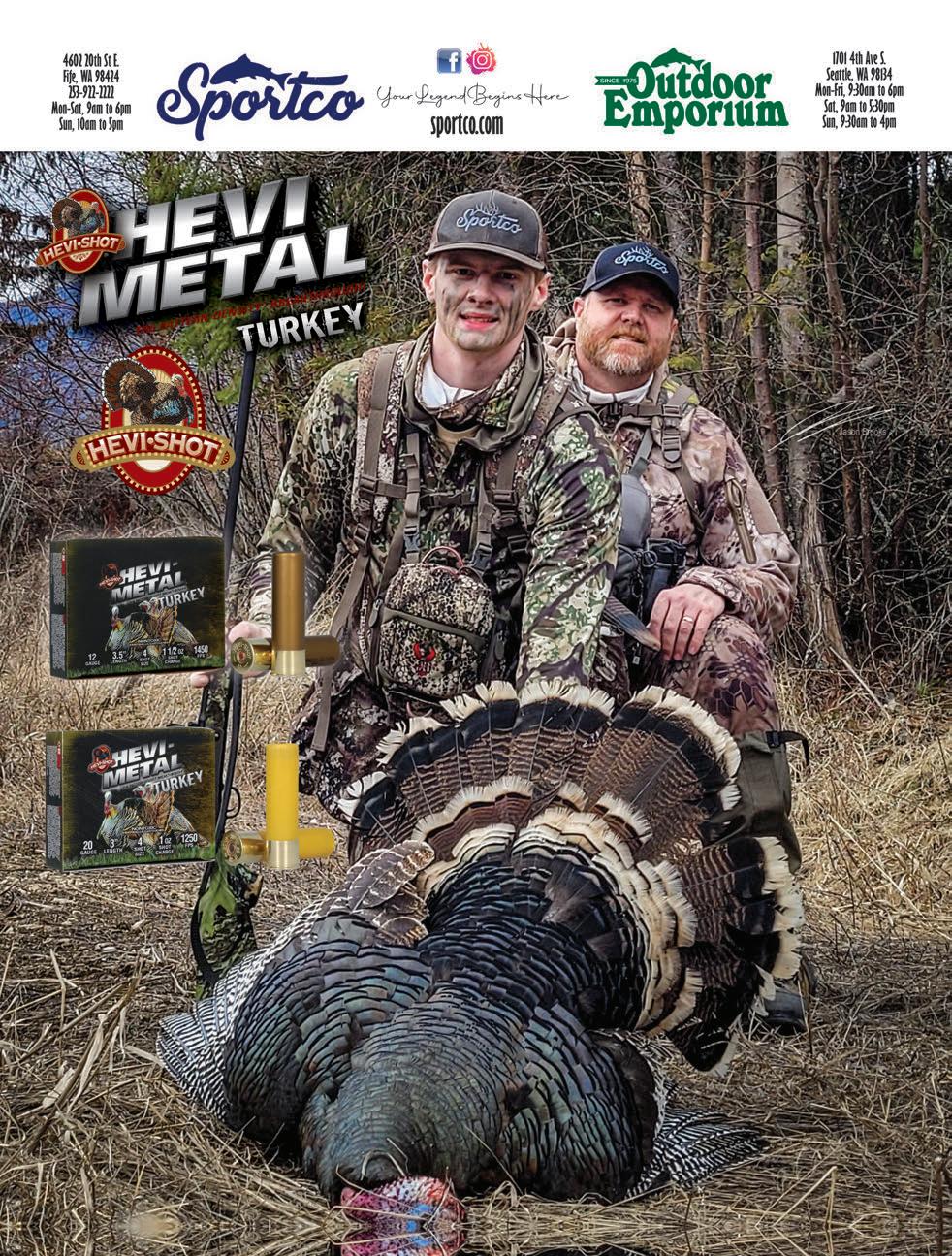

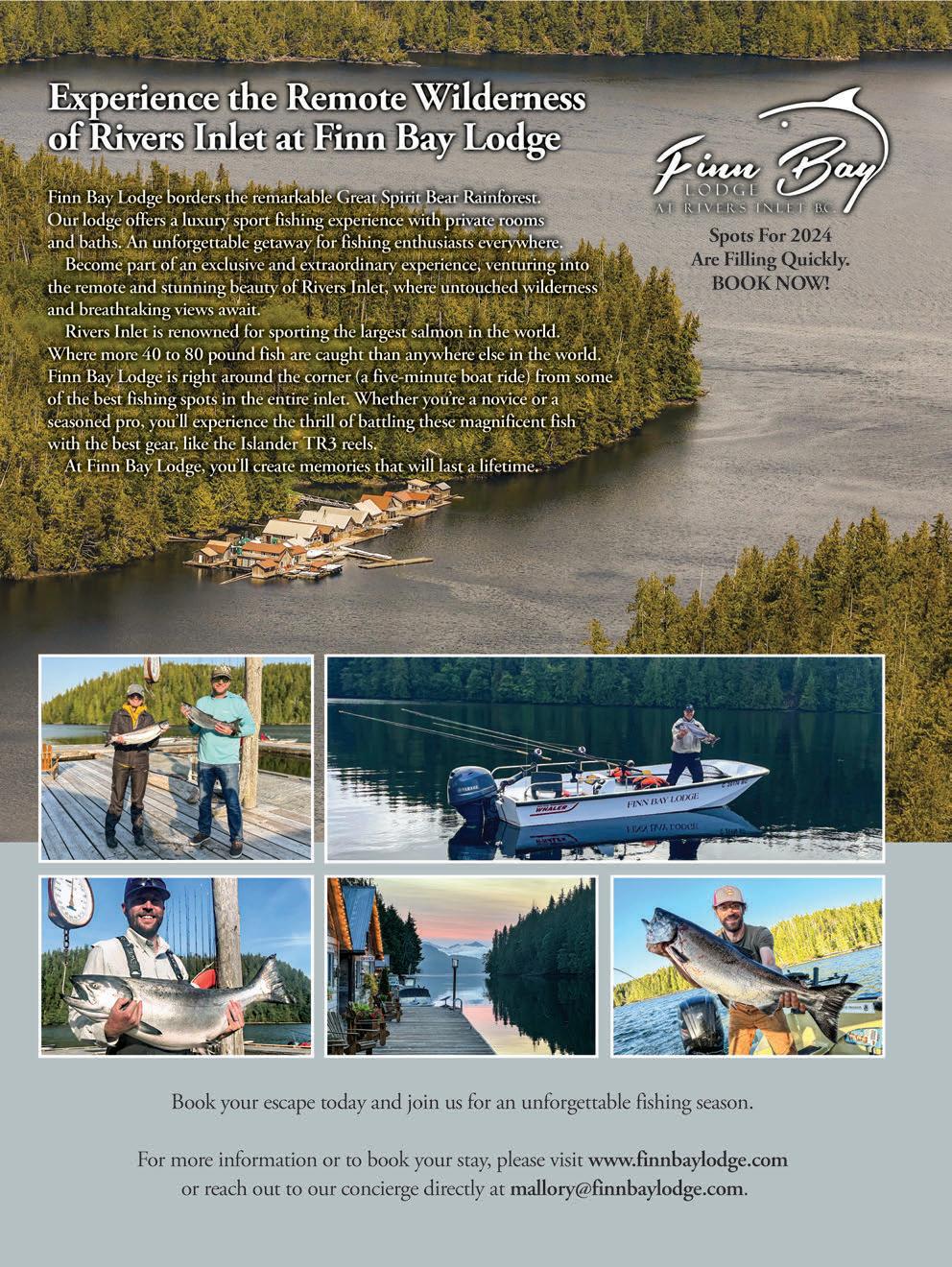


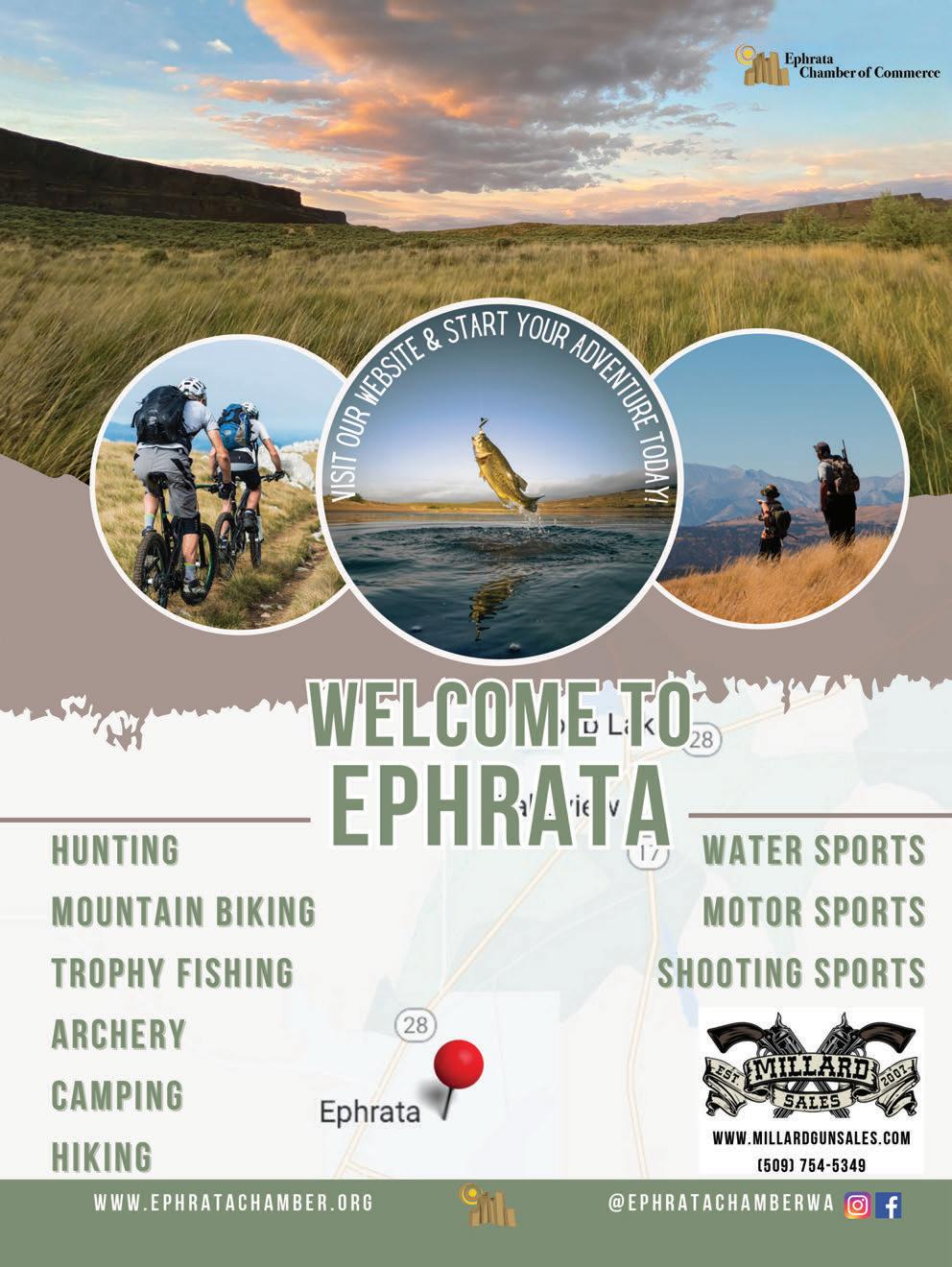
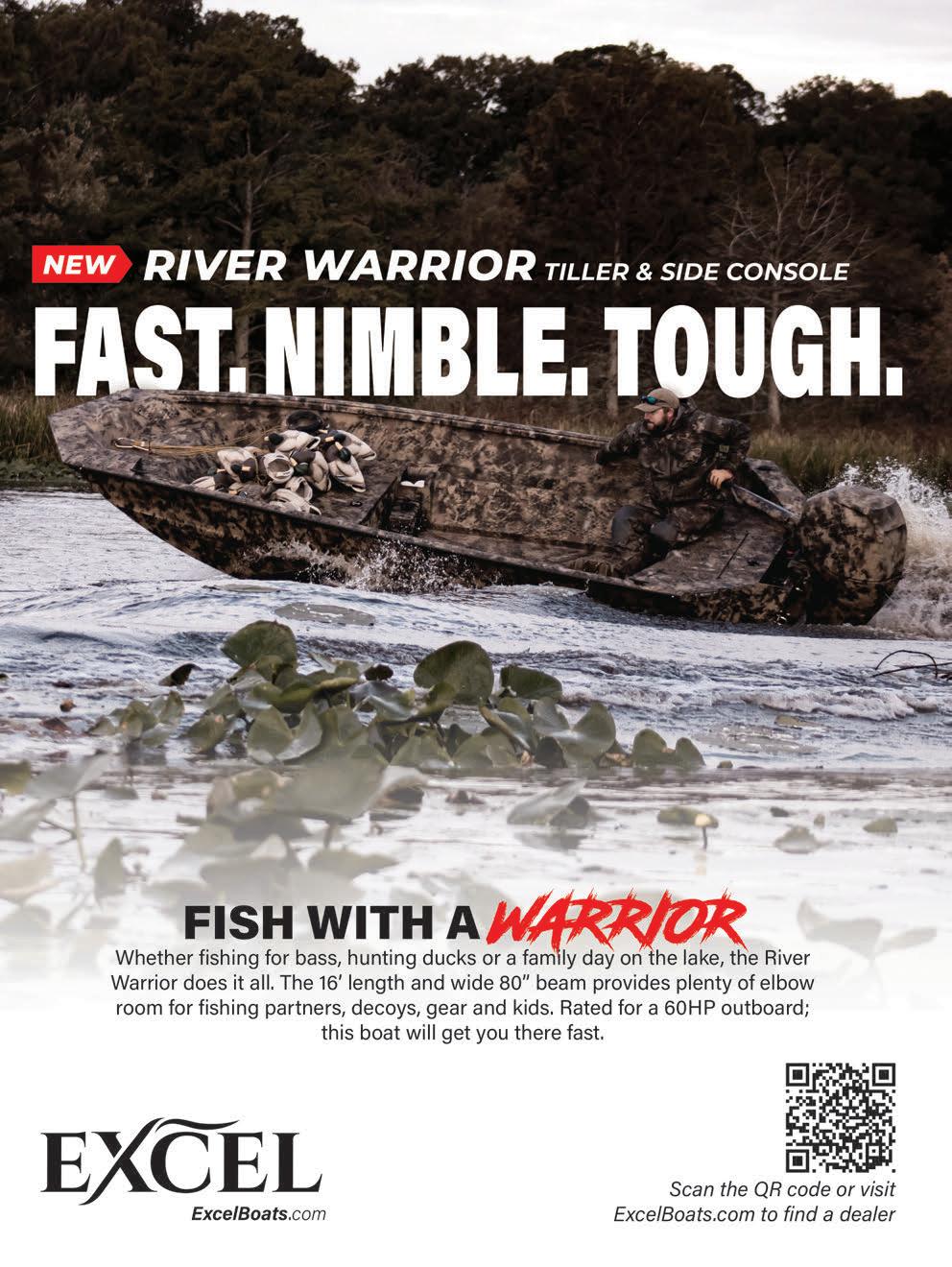



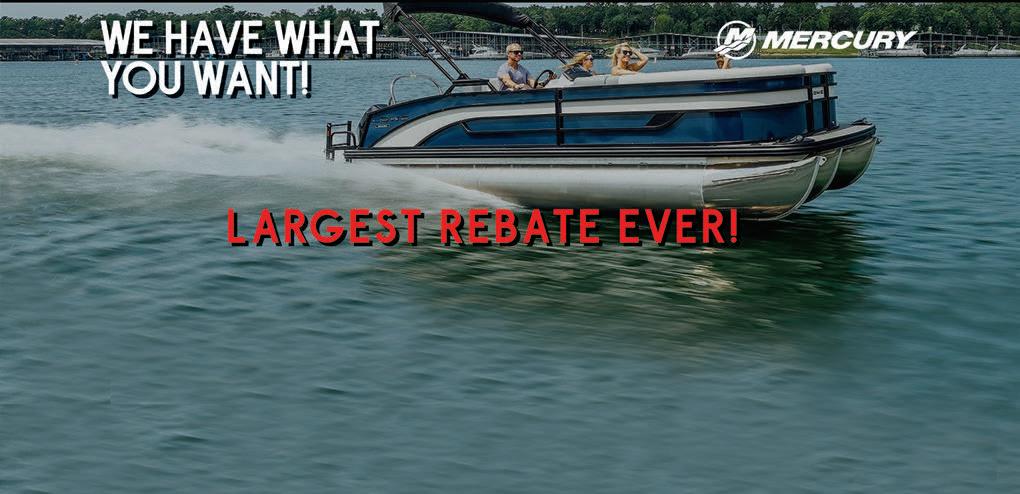










Get 5 Years with a New Mercury Through March 31, 2024, get the standard 3-year limited warranty PLUS 2 years of additional factory-backed Mercury Product Protection Gold coverage




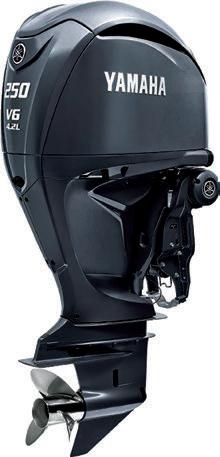
Volume 16 • Issue 6
PUBLISHER
James R. Baker
EDITOR
Andy “Valiant impromptu haikus” Walgamott
THIS ISSUE’S CONTRIBUTORS
Dave Anderson, Jason Brooks, Jillian Garrett, Scott Haugen, Jeff Holmes, MD Johnson, Randy King, Sara Potter, Buzz Ramsey, Troy Rodakowski, Tom Schnell, Dave Workman, Mark Yuasa
GENERAL MANAGER
John Rusnak
SALES MANAGER
Paul Yarnold
ACCOUNT EXECUTIVES
Lucas Hoene, Tom St. Clair
DESIGNERS
Gabrielle Pangilinan, Lesley-Anne Slisko-Cooper
PRODUCTION ASSISTANT
Kelly Baker
OFFICE MANAGER/COPY EDITOR
Katie Aumann
INFORMATION SYSTEMS MANAGER
Lois Sanborn
WEBMASTER/DIGITAL STRATEGIST
Jon Hines
ADVERTISING INQUIRIES
ads@nwsportsmanmag.com
CORRESPONDENCE
Email letters, articles/queries, photos, etc., to awalgamott@media-inc.com, or to the mailing address below.
ON THE COVER
Buzz Ramsey holds a nice lower Rogue River spring Chinook he caught there last spring while fishing with guide Pat Hollinger. (BUZZ RAMSEY)


14 Northwest Sportsman MARCH 2024 | nwsportsmanmag.com
DEPARTMENT OF SOCIAL SERVICES Like us on Facebook, follow us on X, and get daily updates at nwsportsmanmag.com. Your LOCAL Hunting & Fishing Resource MEDIA INDEX PUBLISHING GROUP 941 Powell Ave SW, Suite 120 Renton, WA 98057 (206) 382-9220 • (800) 332-1736 Fax (206) 382-9437 media@media-inc.com mediaindexpublishing.com 1-877-426-0933 verles.com WE OFFER A LARGE INVENTORY OF QUALITY BRANDS 2024 WELDCRAFT 240 MAVERICK


91
BACK TO WESTPORT!
March’s second Saturday marks the start of rockfish and lingcod season out of Washington’s fishiest coastal harbor, and there may be no more excited bottomfisher than our Jeff Holmes. He sets the plate on what to look forward to in 2024 and recalls a bounteous catch from last summer.
101 PREP NOW FOR KOKANEE SEASON
Taking time during the slower months of the now year-round kokanee fishery to catch up on deferred maintenance and other critical things can yield great results later during peak season. Central Oregon sharpie Tom Schnell shares the 17 things to do right now.
112 SERIOUSLY, YOU NEED TO FISH LAKE ROOSEVELT!
Jeff Holmes’ mission on Earth just might be to spread the gospel of how good and easy Lake Roosevelt trout fishing can be. He returns to the banks of the huge Upper Columbia reservoir for a tutorial on using tiny trebles baited with dough for tons of tasty triploids.
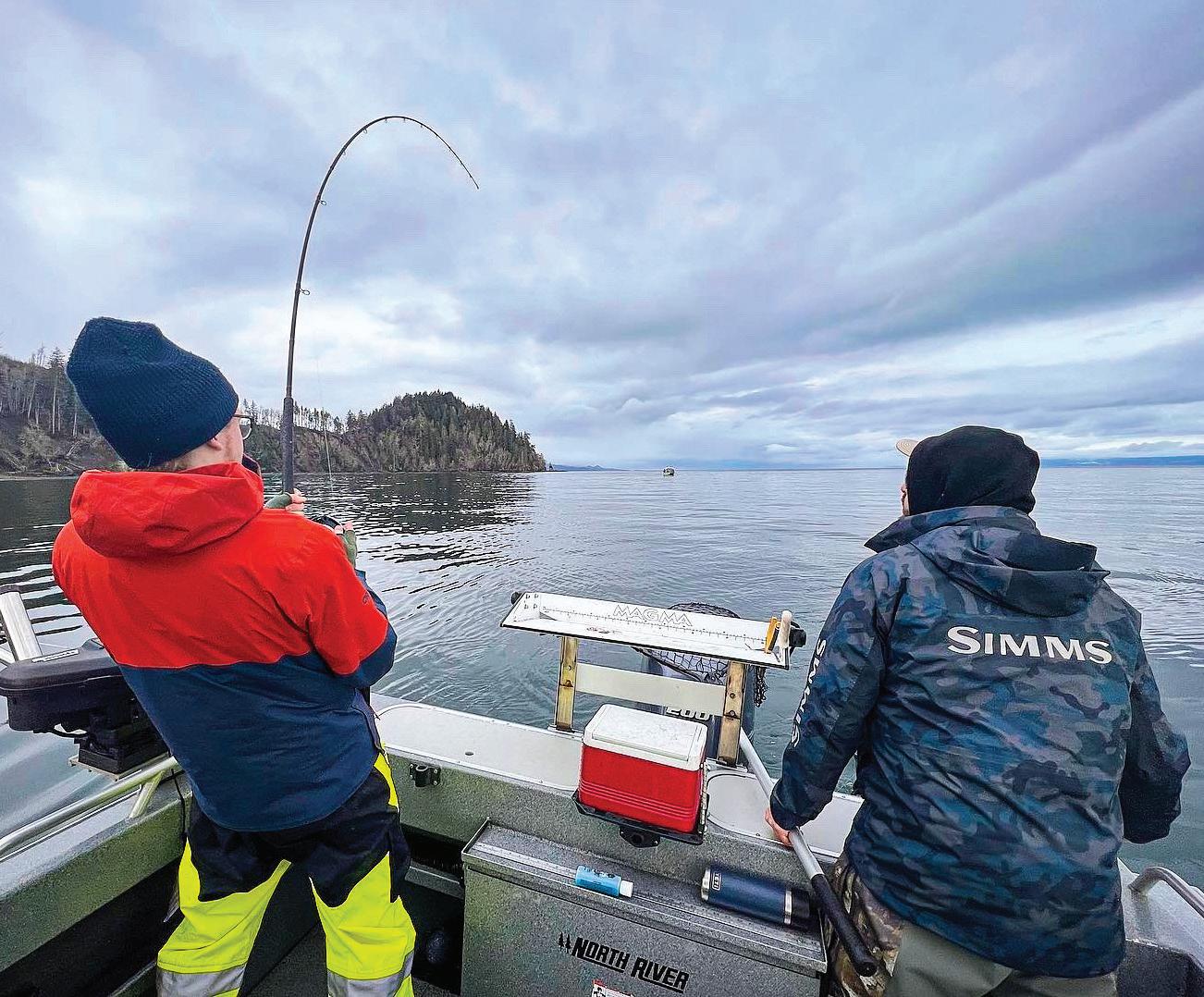
143
10 TIPS FOR SPRING TURKEY SUCCESS
Longbeards are cautious characters, so using “Turkey Troy” Rodakowski’s 10 preseason pointers will be a good start to outfoxing toms during the Northwest’s upcoming spring youth and general seasons.
SALTY CHINOOK
Blackmouth options in Washington’s inside waters are far fewer these days, but this March and April offer chances to catch feeder and early migrating Chinook off Sekiu, Seattle and Tacoma. Mark Yuasa has the wheres and hows of this fishery that could go by fast if you’re not prepared to take advantage of it.
nwsportsmanmag.com | MARCH 2024 Northwest Sportsman 17 NORTHWEST SPORTSMAN is published monthly by Media Index Publishing Group, 941 Powell Ave SW, Suite 120, Renton, WA 98057. Periodical Postage Paid at Portland, OR and at additional mail offices. (USPS 025-251) POSTMASTER: Send address changes to Northwest Sportsman, 941 Powell Ave SW, Suite 120, Renton, WA 98057. Annual subscriptions are $39.95 (12 issues), 2-year subscription are $59.95 (24 issues). Send check or money order to Media Index Publishing Group, or call (206) 382-9220 with VISA or M/C. Back issues may be ordered at Media Index Publishing Group offices at the cost of $5 plus shipping. Display Advertising. Call Media Index Publishing Group for a current rate card. Discounts for frequency advertising. All submitted materials become the property of Media Index Publishing Group and will not be returned. Copyright © 2024 Media Index Publishing Group. All Rights Reserved. No part of this publication may be copied by any means, electronic or mechanical, including photocopying or recording by any information storage or retrieval system, without the express written permission of the publisher. Printed in U.S.A. SUBSCRIBE TODAY! Go to nwsportsmanmag.com for details. ALSO INSIDE
CONTENTS VOLUME 16 • ISSUE 6 79
(CHASE GUNNELL, WDFW)

ON TARGET Spring Turkey Nears And New Shotguns Stand Ready
If you’re in the market for a new gobbler gun, Dave W. has some ideas from Mossberg and Benelli, not to mention a couple tips on where to look for toms!

COLUMNS 149
65
BUZZ RAMSEY Get To Gold Beach For Springer Action
With Southern Oregon’s Rogue River primed to produce good spring Chinook fishing this season following 2023’s closure of the ocean for king salmon retention, Buzz is already planning another trip. He shares what he learned last year to put you in the thick of the best fishing this season!
72 FOR THE LOVE OF THE TUG Thoughts On Umpqua Chinook, Or, What Awaits Us?
Soon, federal overseers will determine whether an Endangered Species Act listing is truly warranted for Umpqua system spring Chinook (and other Oregon Coast king stocks), but Sara feels people are being misled about South Umpqua springers to the detriment of recovering the North’s stronger stocks.
123 NORTHWEST PURSUITS Chironomids, The Itty Bitty Bug Trout Love
The shores of Central Washington’s Lake Lenore taught Jason a thing or two about how to catch Lahontan cutthroat, as well as other trout species. Break out the bug box for a class on chironomid fishing!
137 GUN DOG Upland Estate Hunts: What They Have To Offer
State bird hunting seasons are pretty much wrapped up, but that doesn’t mean you have to put your shotgun down and Buddy in the kennel. Scott shares how upland bird preserves offer a chance to get in a few last blasts, try out new gear and provide a great gun dog training opportunity.
154
CHEF IN THE WILD Where The Wild Things Grow
Early spring is one of Chef Randy’s favorite times to go on the hunt – for greens, that is! From wild onions growing in turkey territory to dandelions, dock and mallow popping up in backyards, he shares what to forage for this time of year!
161
BECOMING A HUNTER Overcoming The Comparison Trap
The success of others can cast a very long shadow for beginning hunters, but comparing yourself to those who may have far more experience just isn’t fair. Dave A. details why and how to seek out happiness in your own hunts and time outdoors.
18 Northwest Sportsman MARCH 2024 | nwsportsmanmag.com
(KNIFE PHOTO CONTEST)


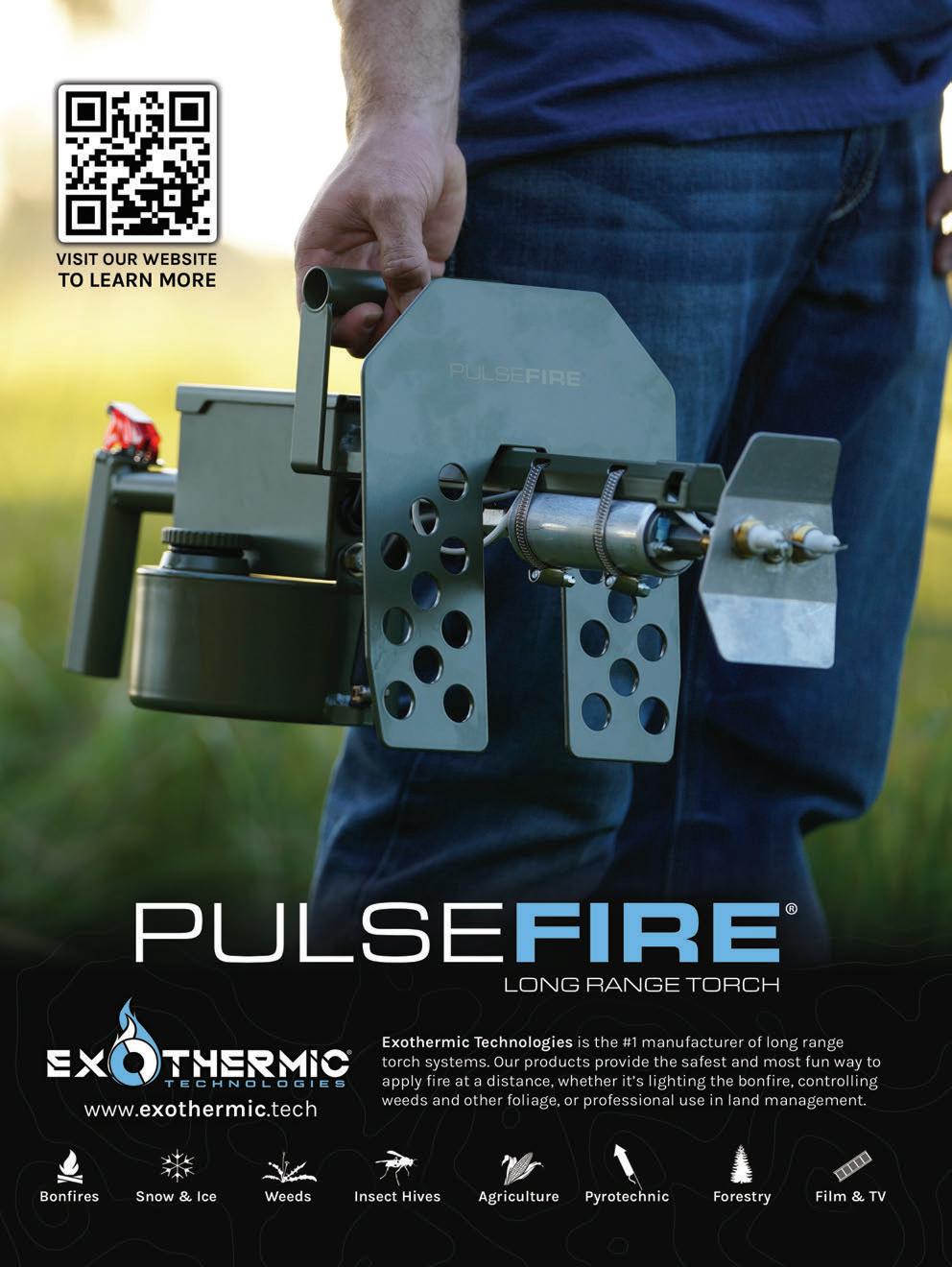



THE BIG PIC 40 Years To Fish And Wildlife
As ODFW Director Curt Melcher heads to retirement at the end of March, he reflects on decades of service to the resource, and his plans to now do a little more springer fishing. MD Johnson has our exit interview.
DEPARTMENTS
25 THE EDITOR’S NOTE
On Boldt’s 50th anniversary
41 NEWS
Washington state report reflects positive trends in hunting and angling
51 READER PHOTOS
Sturgeon, steelies, smelt, junior duck hunters and more!
52 PHOTO CONTEST WINNER
Monthly Coast and Kershaw prize-winning pic
55 THE DISHONOR ROLL
Scappoose Bay sturgeon poacher sentenced; Op-Ed: Time to lower duck limits? 3 Southern Oregon wolves poached; Rare Oregon moose shot, wasted; Chase Cominsky case update; Jackass of the Month
59 OUTDOOR CALENDAR
Upcoming fishing and hunting openers, events, deadlines, more
60 2024 SPORTSMEN’S & BOAT SHOW CALENDAR
Event schedule, show links
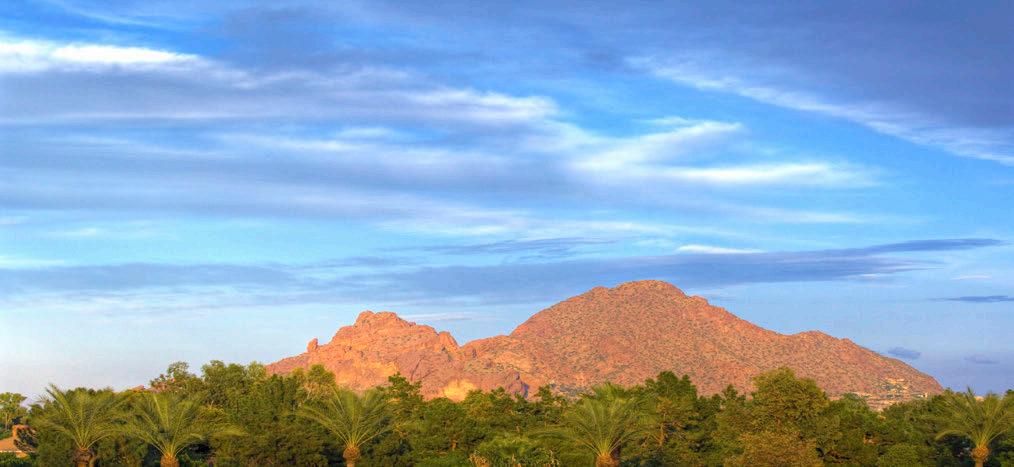
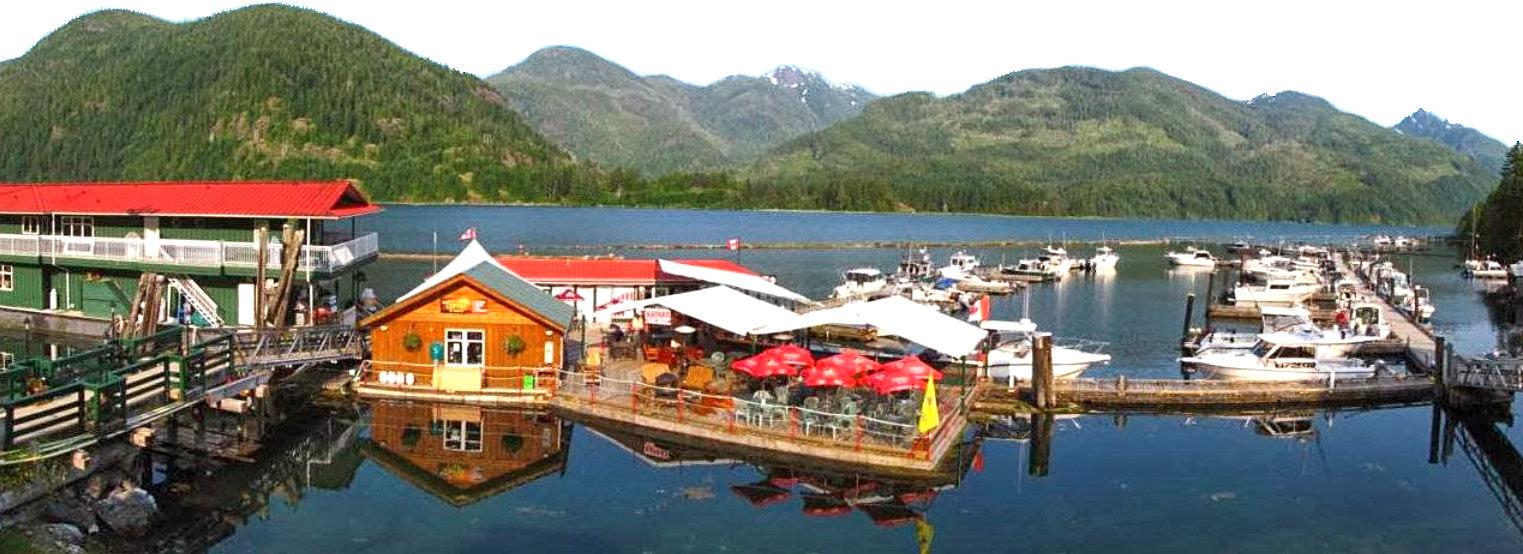


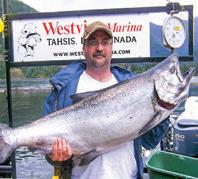
22 Northwest Sportsman MARCH 2024 | nwsportsmanmag.com
30
(ODFW)







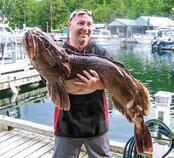


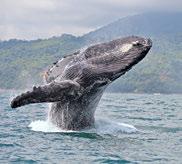



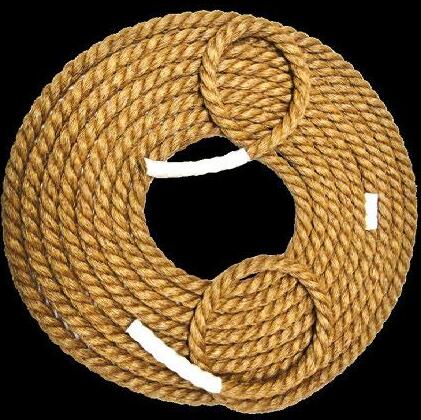
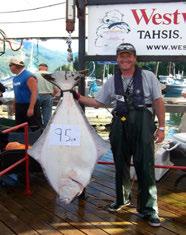
250-934-7672 BOOK YOUR CANADIAN FISHING/CATCHING ADVENTURE NOW! info@westviewmarina.com | westviewmarina.com “BEST KEPT SECRET ON THE WEST COAST OF VANCOUVER ISLAND” “BRING YOUR LARGE COOLERS. YOU WILL NEED THEM WHEN YOU FISH WITH US!” FULL LIMITS ON KINGS, SILVERS, HALIBUT, LINGCOD & MUCH MORE! US DOLLAR IS WORTH $1.30 IN CANADA! GET MORE FOR YOUR MONEY! MAY 1–SEPT 30 ASK FOR AVAILABLITY We are one of the only regions on the west coast of Canada that has FULL LIMITS for SALMON, HALIBUT & LINGCOD BOOK NOW while dates are still available info@westviewmarina.com EARLY BIRD SPECIALS BRING YOU OWN BOAT, FISHING/CATCHING CHARTER & LODGING PKGS SCAN TO SEE OUR VIDEO 4 Nights LODGING, 3 Full Days of GUIDED FISHING + ALL MEALS $1925 US/$2750 CA



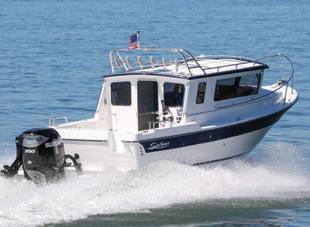

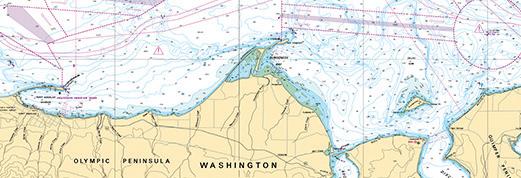
WWW.SEASPORTBOATS.COM
KENAI
26’
KODIAK
26’
EXPLORER ALASKA MINING & DIVING Anchorage, AK 907-277-1741 ALBERNI POWER & MARINE Port Alberni, BC 250-724-5722 MASTER MARINE Mt. Vernon, WA 360-336-2176 Y MARINA, INC. Coos Bay, OR 541-888-5501 Y MARINA, INC. Florence, OR 541-590-3313 WWW.SEASPORTBOATS.COM/DEALERS FIND YOUR NEAREST PACIFIC NORTHWEST DEALER 28’ COMMANDER BUILT DIFFERENT HANDMADE IN THE PACIFIC NORTHWEST CUSTOM BUILT TO FISH ANY CONDITIONS
24’



THE EDITOR’S NOTE
Congrats, fish and wildlife reformists, you somehow managed to align Washington anglers and hunters firmly with the tribes. True, it’s a natural match, but it wasn’t always so. Far from it.
Last month marked the 50th anniversary of the momentous Boldt Decision, when US District Court Judge George Hugo Boldt affirmed tribal treaty-reserved fishing rights to half of Washington’s harvestable salmon and steelhead. It followed the Fish Wars, when the state actively suppressed those rights – “an embarrassing and shameful chapter of my agency’s otherwise proud and rich legacy,” Department of Fish and Wildlife Director Kelly Susewind acknowledged in a special statement on February 12, the actual anniversary.

Boldt was not exactly welcomed with open arms by anglers and others. If I had a nickel for every time I’ve heard or seen someone blame tribal gillnets for the catastrophic, all-encompassing habitat alterations, overharvest and government policies that since the mid-1800s have affected fish numbers far, far more, I would be rich.
BUT THESE DAYS I feel like there’s a far better understanding among us and a burgeoning common purpose around protecting and restoring fish and their habitats, as well as providing and maintaining meaningful harvest opportunities and connections to the resources for all. No, things aren’t all hunky-dory between tribes, WDFW and sportsmen: Access to the Skokomish River. The Point No Point not-ramp. Grays Harbor coho and steelhead.
However, it is the Washington Fish and Wildlife Commission’s Conservation Policy that may have produced the biggest recent shift towards one another. As you’ve read here and on my blog since September 2021, some commissioners want to put in place worrisome overarching policy guidance for how WDFW manages fish and other natural resources, which it does in coordination with the tribes, and come up with a new definition of “conservation.” Despite being advised last fall by agency staff to hold meetings with tribes on the policy before making a final decision – counsel that was called “absolutely absurd” by Commissioner Melanie Rowland – the citizen panel went damn-the-torpedoes-full-speedahead into a late January vote to approve it.
That’s when the attorneys got involved as half a dozen Western Washington tribes formally demanded governmentto-government consultations with the commission on the “unilaterally developed policy,” stating it was “inappropriate for the state to develop an ambiguous definition of conservation without engaging tribal co-managers as sovereigns.”
To be clear, the tribes were acting to protect their treaty rights, but as the dust has settled, another interpretation of the Boldt Decision took hold.

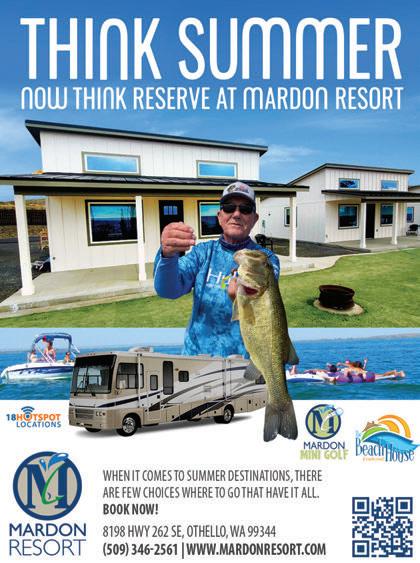
nwsportsmanmag.com | MARCH 2024 Northwest Sportsman 25
US District Court Judge George Hugo Boldt. (WASHINGTON SECRETARY OF STATE)

Tom Nelson, host of The Outdoor Line on Seattle’s 710 ESPN, told Brandi Kruse of the [Un]Divided podcast that the Boldt Decision now “has different implications, because now with this action, the tribes have demonstrated that their Boldt Decision is actually our Boldt Decision now.”
The fish are shared “in common with” state residents.
Tweeted state Representative JT Wilcox (R-Yelm) on the ruling hitting the half-century mark, “I’m from the generation that thought this was a disaster & now many of us recognize that without Boldt & without tribes there would be few fish for any of us. Boldt forced the states to preserve salmon so that tribal & non tribal fishing peoples could express their own cultures.”
On Fish Hunt Northwest, Wilcox said commissioners’ statements “make it plain that they have great scorn for their obligation to consult with tribes and it’s as if they don’t understand that the Boldt Decision is a thing that is binding on them.”
Rowland, a retired federal Endangered Species Act attorney who is one of the commission’s chief proponents of the Conservation Policy, took exception to it being put on pause for consultations with the tribes, a “precedent that is totally open-ended in terms of our workload and how often we will need to do this.” She asked, “Are we going to have independent tribal consultation processes with every policy, rule, guidance – I mean, whatever we vote on?”
A response came the next day from Lisa Wilson of the Lummi Nation: “You’re damn right,” she said to the commission’s face. “If it affects our treaty rights, it has to be consultation.”
Even as a learned observer told me Rowland’s question was “pertinent” in terms of the state’s interests, it felt like a grand rebuke to fish and wildlife reformists, and amounted to a 180 from where sportsmen were at in the 1970s, ’80s and beyond with the tribes.
ON BOLDT’S 46TH anniversary, I did a piece on Ron Garner, state board president of Puget Sound Anglers, who literally waded into the Stillaguamish River to lend his strength and voice to common cause with the Stillaguamish Tribe – restoring the troubled stream’s habitat and its perpetually fishery-constraining salmon runs.
“We’ve been fighting over the last fish for far too long and it hasn’t worked,” Garner said in a WDFW video highlighting how sportfishermen, tribes, farmers and others were working together on the effort. “We used to fight with the tribes constantly. Fingerpointing, blaming. We don’t want to do that anymore, we want to bring our salmon runs back.”
To be clear, that will be harder to do on the Stillaguamish than almost anywhere else, but it set an example by leadership and was illustrative of the overall changing and softening tone critically needed now more than ever to better work together around shared interests and goals.
Flash forward to last month, and The Outdoor Line’s Nelson pointed out how sportsmen and tribes jointly share the “highest regard” for critters and their habitat “because it is part of their culture and part of their heritage, Brandi, and it’s part of mine. I would not know how to exist on this planet if I couldn’t hunt and fish. I wouldn’t know what to eat.”
This camaraderie and good feelings may only last a little while –North of Falcon, which came out of Boldt and is the annual divvying up of the harvestable catch, begins March 1 – but I for one am very interested to see where things go from here and stand at the 60th anniversary of the ruling as we realize more and more the strength in combining forces toward common goals. –Andy Walgamott
26 Northwest Sportsman MARCH 2024 | nwsportsmanmag.com




Visit us today and start planning your next getaway! Embark On Your Next Adventure with a trailer from rodeo city rV! 2502 W. Dolarway Rd. Ellensburg , WA 98926 509.925.9545

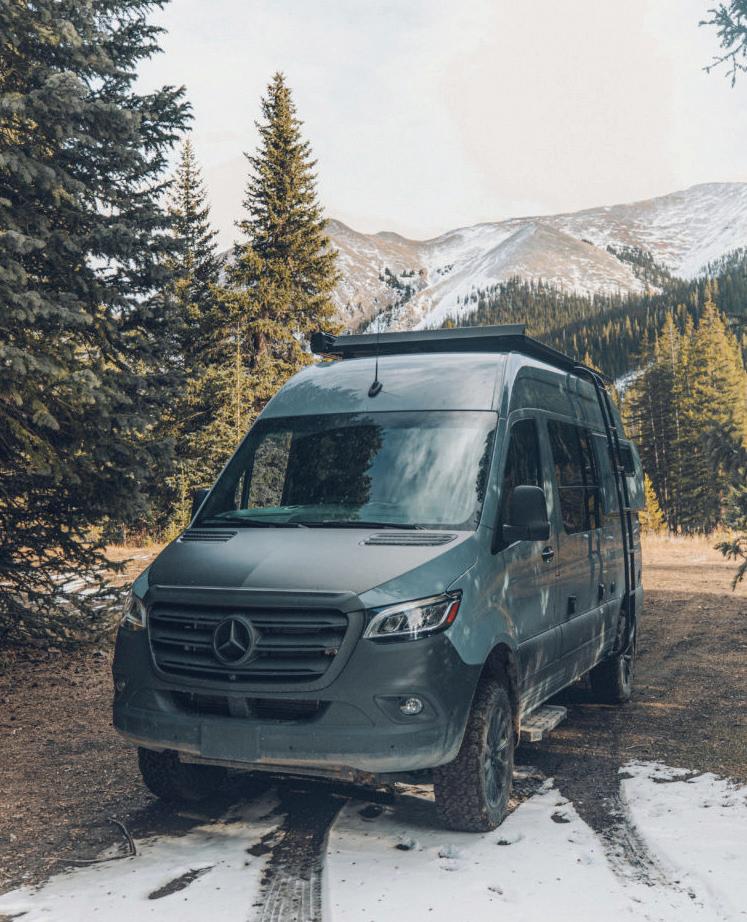
of the pacific northwest the adventure hub 2024 storyteller overland stealth mode awd new sales, collision and repair, and upfit and accessories in sandy, or • medford, or • fife, wa • gilroy, ca johnsonrv.com
40 Years To Fish And
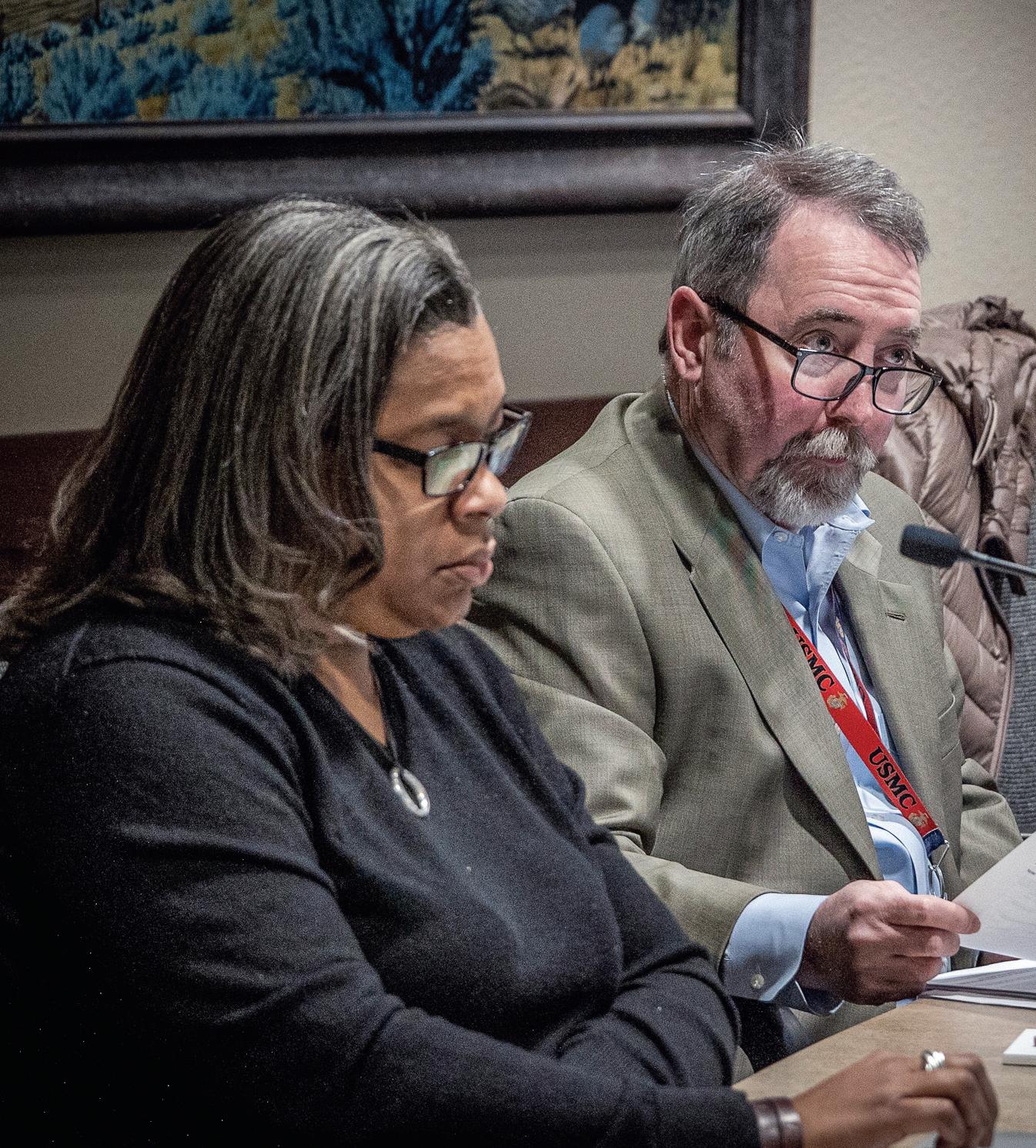
30 Northwest Sportsman MARCH 2024 | nwsportsmanmag.com
Wildlife

As ODFW Director Curt Melcher heads to retirement at the end of March, he reflects on decades of service to the resource, and his plans to now do a little more spring Chinook fishing.
By MD Johnson
Forty years is a long time to do anything, I reckon. My folks both taught high school for damn near 40 years each. I’ve shot the same 16-gauge Remington M1100 since 1979; that’s 44 years. It’s been five decades since I killed my first duck, and Julie and I have been together 30 seasons. No, it ain’t 40, but it’s close.
What I haven’t done for 40 years is working for the same outfit. Oh, no; far from it. The Ohio Department of Natural Resources. The Touch of Class Carwash. Short order cook. Millworker. Bartender. And most recently, wildland firefighter, substitute teacher, and seasonal worker for United Parcel Service. And this writing too. My goal? An eight-page résumé by the time of retirement, which – uhh – ain’t too far off.
Some folks, though, are incredibly content with the same (yet different) scenery. Take Curt Melcher, for instance. Some of you may be familiar with the name; some, perhaps not. Currently, Melcher sits at the helm of the Oregon Department of Fish and Wildlife as the agency’s director, a position he’s held for about 10 years now and one he will retire from on March 31 after almost 40 years with ODFW. See! Now that first sentence makes sense, doesn’t it?
Melcher, now 60, began his stint with the agency in 1985, or the same year, according to everything one reads on Al Gore’s Internet, that The Goonies was released. Great movie, by the way. Following his graduation from the
nwsportsmanmag.com | MARCH 2024 Northwest Sportsman 31
A son of Oregon, Curt Melcher survived three times as long as most directors of state fish and wildlife agencies, but he is hanging up his hat at the end of this month after a 40-year career deeply invested in the resource. (BOB SWINGLE, ODFW)

University of Oregon with a degree in biology, Melcher took a job with ODFW doing, well, a little bit of everything, including stream surveys, roadkill collection and …
But wait a tick. I’m getting ahead of myself here, for I was actually able to spend some time recently with Director Melcher to talk about himself, his career with the agency and how he plans to fill his calendar starting April 1, if he indeed wants to fill his calendar, now that his 9-to5 is a thing of the past.
Northwest Sportsman Family, sir? Married?
Children here in Oregon?
Curt Melcher I’m married, with two grown daughters. Both of the girls work in the healthcare industry; one works at a private medical clinic on the business side, and the other works for the Oregon Health Authority.
NWS Wife’s name, sir?
CM Kevleen.
Author’s note: At this point, I mentioned to the director that I’d not heard the name “Kevleen” before, and that I thought it beautiful. He laughed, and admitted, “That’s a father who wanted a son and got a daughter, so he named her Kevleen.” And
Melcher’s origins as a seasonal Oregon Department of Fish and Wildlife staffer doing creel surveys on the Columbia and Willamette Rivers provided a great opportunity to connect and relate to the public. One of the biggest changes he’s seen is how ODFW relates positively to its “customers” the past two decades. (ODFW)
then I regaled him with my own story. My mom wanted a girl; even picked out the name Amy Elizabeth, but instead got me. She does have pictures of me at age two or three wearing a dress as “Amy Elizabeth.” I’ve seen them. Thanks, Ma. But I digress …
NWS Native Oregonian, sir?
CM I am. I’m a seventh-generation Oregonian, a direct descendant of a member of the Astor Party, the Wilson Price Hunt Overland Party.
NWS First rattle out of the box, sir. Who is Curt Melcher?
CM I would say, MD, that I certainly enjoy the outdoors. I spent my lifetime fishing from a very early age. I really didn’t do much hunting as a kid; I was an adultonset hunter and largely self-taught after high school. Don’t get me wrong. I haven’t done as much (hunting and fishing) over the past 40 years as I will over the next few years, so I’m looking forward to that.
I’d say I’m a pretty humble guy. Not looking for credit, but looking to get things done. And I really have enjoyed a career here where I get to work on issues that are so important to me personally as well as professionally. Too, I’ve had the opportunity to hire and mentor so many great staff here at ODFW, and I get a lot of
pleasure watching them in their careers. Watching them succeed.
NWS How have things changed in our outdoor world over the course of the past 40 years?
CM Obviously, there are ebbs and flows of resources and resource availability. That’s a given, even in the best of times; populations go up, and populations go down based on a whole host of variables. But some of the biggest changes I’ve seen has (centered around) how the agency views our licensebuying public. As customers. I think we realized some 20 or more years ago that our “customers” are truly discretionary customers, and we’re competing for their free time and their income to participate in the activities we manage. And not just in Oregon, but around the country there’s been a watershed moment, if you will, when we recognize that, “Yeah, we truly have customers” and we need to treat them as such.
Author’s note: Here, Melcher offered up a couple examples of this change. The restoration of preference points, he said, is one of these changes. “We’ve had situations over the years,” he said, “where an individual has spent three years or perhaps 20 years accruing points to draw a tag, and then when they draw that tag, something tragic happens (where they’re unable to use that tag). Up until 10 years ago, we (ODFW) just told them, ‘Tough luck.’ We don’t do that anymore. We have a process in place now so folks who suffer through these situations can get their points restored, and we do restore a lot of people’s points. That’s just focusing on them as a ‘customer.’” Working with individuals on tag sale deadline scenarios, Melcher said, has been another customerfocused change.
NWS Earlier, sir, you used the word “mentor.” Did you have a mentor within the agency, a person or persons who helped shape your career?
CM Let me start, MD, saying that when I started with the agency in ’85 and for the first 25 years of my career, I had no aspirations to be the director. I wasn’t thinking mentors who could lead me to the directorship; that just wasn’t an
32 Northwest Sportsman MARCH 2024 | nwsportsmanmag.com

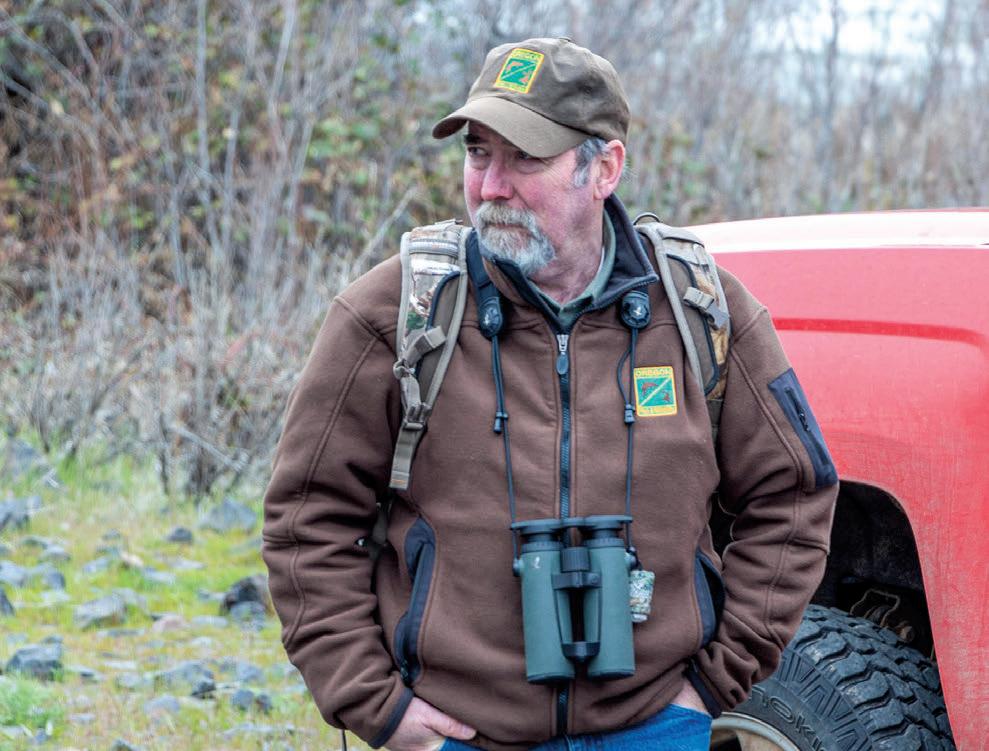
While many Northwest sportsmen are fixated on the threats from anti-hunters, predators, predator activists and others, Melcher sees a very different future concern to the opportunities we all love: the simple availability of water. “You can’t have fish if you don’t have water. And cold water for (many of) Oregon’s native species. Water is going to be a challenge.” (ODFW)
interest of mine at the time. I certainly had mentors early in my career, people I looked up to and helped develop my career; provided me with opportunities. But no … no mentors who would guide me (on the path) to becoming the director.
NWS Talk about the people, sir. Your constituency. The General Public. Has it been a good experience working with them? A challenge?
CM I started my career as a seasonal, like so many people in this field, and as part of that I did creel surveys on the Willamette and the Columbia, both in the spring on the Willamette, as well as on the Columbia (during the) spring, summer and fall. And let me tell you, there’s no better training
ground for dealing with the public than being the face of the agency – one of the lowest-paid employees of the agency and be the face of the agency – out engaging with those constituents. Yeah, I met some cranky people, but I met a whole lot of really good people, too. It was great training, and I’ve always enjoyed working with the public.
NWS Has there been a single high point in your 40-year career with ODFW?
CM I don’t, MD, have a single high point. There’s a lot of good things we’ve done. And it’s not like I’ve been the director for 40 years. For the first 25 years, I was doing the “fun stuff.” I was out in the field on boats and airplanes and helicopters. Some of those were the high points; you
get paid for doing things that other people only dream about, like flying around in a helicopter during surveys. Drift boats. Being out on the ocean.
It’s hard for me to pick a true high point. It was a high point when I got hired as director. And being able to sit here for the better part of 10 years as director, that’s a high point. National average (for a fish/wildlife agency director) is 3.1 years. [Laughs] Figure I’m three times better than average now.
NWS Two parts, sir. One, what’s the biggest challenge facing the ODFW now in 2024? And two, look ahead 20 years to 2044, and what will that challenge be?
CM This is one of those cases where I think it’s easier to look in the crystal ball and tell
34 Northwest Sportsman MARCH 2024 | nwsportsmanmag.com
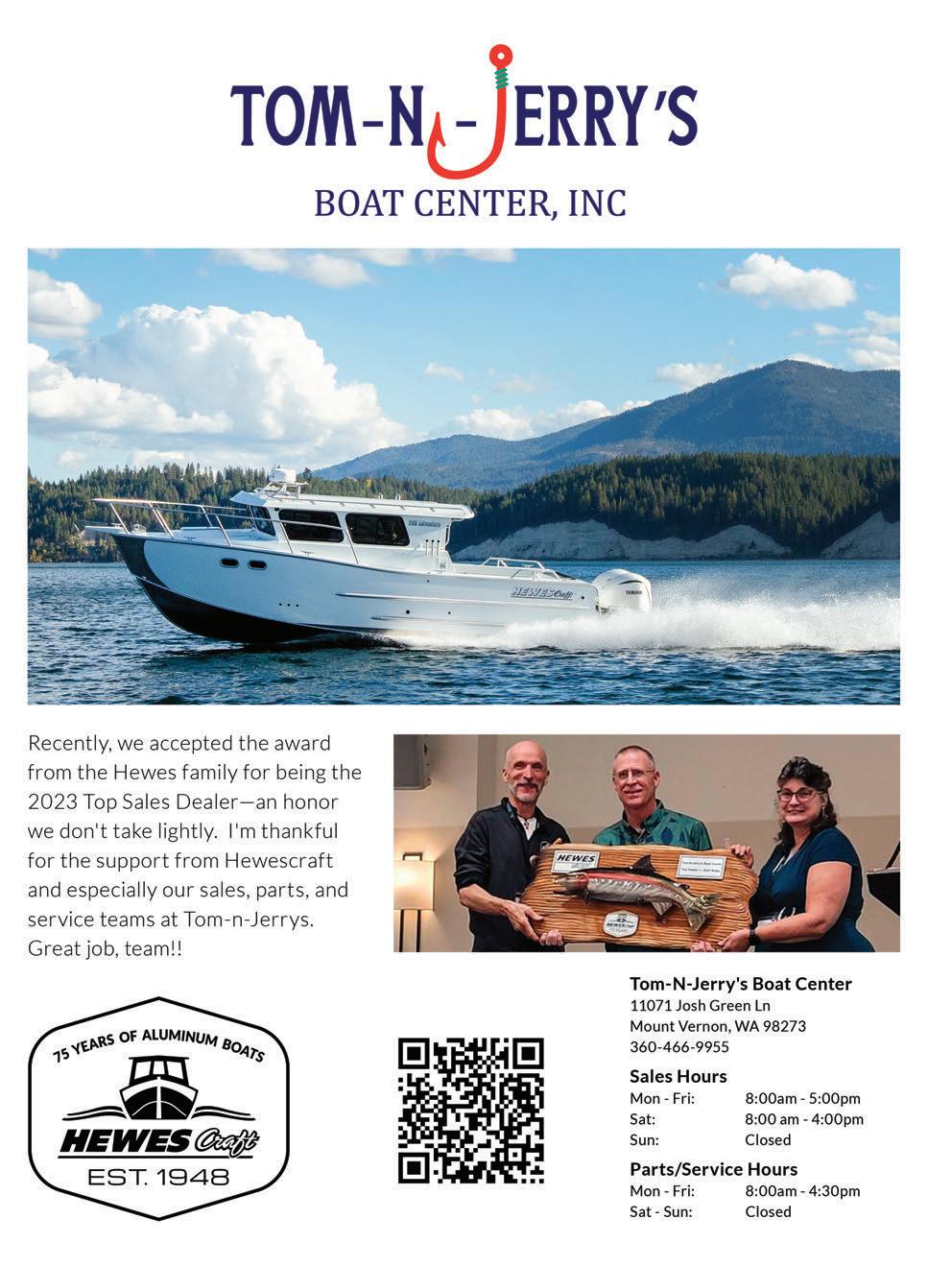

you what those challenges will be in the future. On a large scale, habitat, but on a more finite level, (the challenge will be) water. Availability. Availability for all the things that society wants water for, but also having water for … you can’t have fish if you don’t have water. And cold water for (many of) Oregon’s native species. Water is going to be a challenge.
Water is a challenge already, to a degree, and more so in some systems than in others, but a near-term challenge is going to be dealing with the inflationary pressures we’re (ODFW) feeling. We’ve been 10 years now without a legislative fee (increase) bill, and coming soon, we’re going to be at the point where we have to talk again about fees to ensure our programs remain whole. So shortterm, there’s going to be some funding challenges, to be sure.
NWS You speak very highly of your staff, everyone “from those in the mailroom to the hatcheries to the biologists.” How important have these people been to you as director?
CM It’s incredibly important. I could have retired seven years ago, and I stayed because I like the people. Somebody once said you come to this agency for the

36 Northwest Sportsman MARCH 2024 | nwsportsmanmag.com
The best part of retirement from such a stressful job? The chance to get out more for spring Chinook, sturgeon and other species Melcher has overseen the management of over the years! “I plan to do more fishing. Go turkey hunting somewhere in the spring. Just enjoy myself,” states Melcher. (ODFW)









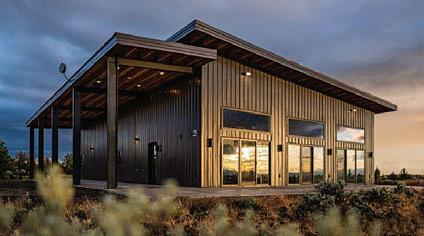
nwsportsmanmag.com | MARCH 2024 Northwest Sportsman 37 503.668.7211 Toll-free: 855.668.7211 www.wsbnw.com Manufactured in Sandy, Oregon More than a building...it’s a solution! PRE-ENGINEERED STEEL FRAME STRUCTURES COST COMPETITIVE | MAINTENANCE FRIENDLY
job, but you stay for the people. I don’t remember who said that first, but I believe there’s a lot of truth to that. I stayed much longer than I ever thought I would because I like the people. We have such a talented staff at all levels.
NWS So where does Curt Melcher go from here? ODFW consultant? Fish bum? Or a stunt double for Tommy Lee Jones?
CM I’ll say this: I’m not going to start a second career. You won’t see me going off to a federal job. If I wanted to work that hard, I’d stay right where I am. I wouldn’t rule out doing some “work-like” thing, if it’s fun, someday, but I don’t have any big plans. I scheduled my retirement so I could have my first month of retirement be essentially the peak of spring Chinook fishing opportunities, hopefully in both the Columbia and Willamette. I plan to do more fishing. Go turkey hunting somewhere in
the spring. Just enjoy myself.
NWS You mentioned spring Chinook, sir. You’re big on springers?
CM I love spring salmon fishing. It’s my favorite – not only the quality of the fish, but they’re the first real salmon (fishery) of the year. You can’t go wrong with spring Chinook. We’ll start in that midriver area when the Columbia is open, from the mouth of the Willamette up to the 205 bridge. And then when the Columbia closes, typically around April 5th or 6th, we’ll fish in the Willamette. We’ll vary our locations depending on the water conditions.
NWS The ’23 springer season, at least around Cathlamet here where we are, seemed to be quite productive for the folks willing to invest the time. You looking at another good spring season in ’24?
CM The runs are down a bit from last year, at least the forecasted runs. Spring salmon fishing is so dependent upon the water conditions, temperature and turbidity in particular. I’m hopeful, but you know you
can’t catch one if you don’t go. And I plan to go a little more.
NWS Final question, sir. You’re marooned on a deserted island. You have a solarpowered – it’s 2024, remember – turntable and one record album. What would that one album be?
CM You should have given me a heads up on this one, MD. I have really diverse musical interests, so only one vinyl album? I’m going to go with – and only because you’re my age – I’m going to go with the very first album I owned, and that’s Frampton Comes Alive. I still have it.
TOUCHÉ, DIRECTOR MELCHER. Well played, sir. And from myself and the readership of Northwest Sportsman, we’d like to say thank you for 40 years of service to the people and wildlife and places of not only Oregon, but the entire Pacific Northwest. Best of luck to you as you step from one realm to another. Be safe, and here’s hoping you land a big fat king overflowing with Omega-3 oils this spring! NS

38 Northwest Sportsman MARCH 2024 | nwsportsmanmag.com

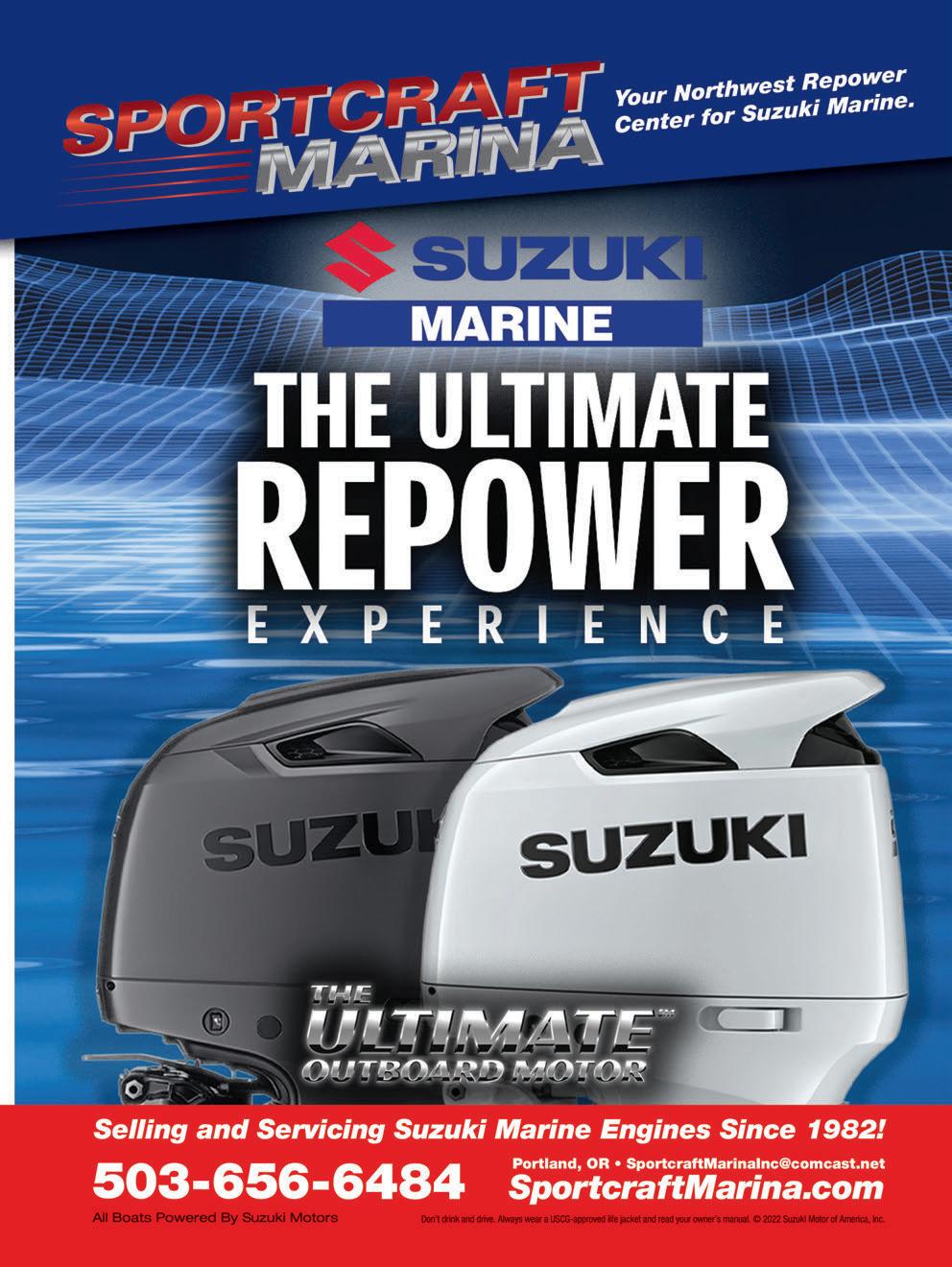
Survey Says
Washington state report reflects positive trends in hunting and angling.
By Jillian Garrett
Times are changing in the world of outdoor recreation, and nowhere more so than when it comes to wildlife. In the most recent edition of Fishing, Hunting, and Wildlife-Associated Recreation in Washington, a sweeping analysis of hunters, anglers and wildlife viewers put out by the Washington Department of Fish & Wildlife, current trends are pointing to some interesting conclusions. Clearly, no matter what side of the aisle you come from, wildliferelated recreation is deeply important to Washington residents, with a whopping 72 percent of the population participating in at least some form. These activities are hugely valuable to both the state and its wild creatures, by providing vital dollars that get funneled into conservation as well as local economies.
Certain special interest groups, citing this recent report, have made the criticism that hunters comprise a much lower portion of the population compared to wildlife viewers, with the implication being that hunters should not have as large of a say in decisions made involving wildlife management. However, what this report shows is that while hunters may account for a small portion of the populace, in terms of dollars spent, they (along with anglers) are the biggest funders of wildlife conservation.
AT FACE VALUE, Recreation in Washington seemed to convey that wildlife watchers made up the biggest group of wildliferelated recreation, followed by anglers, and finally by hunters. With that statement, what is important to keep in
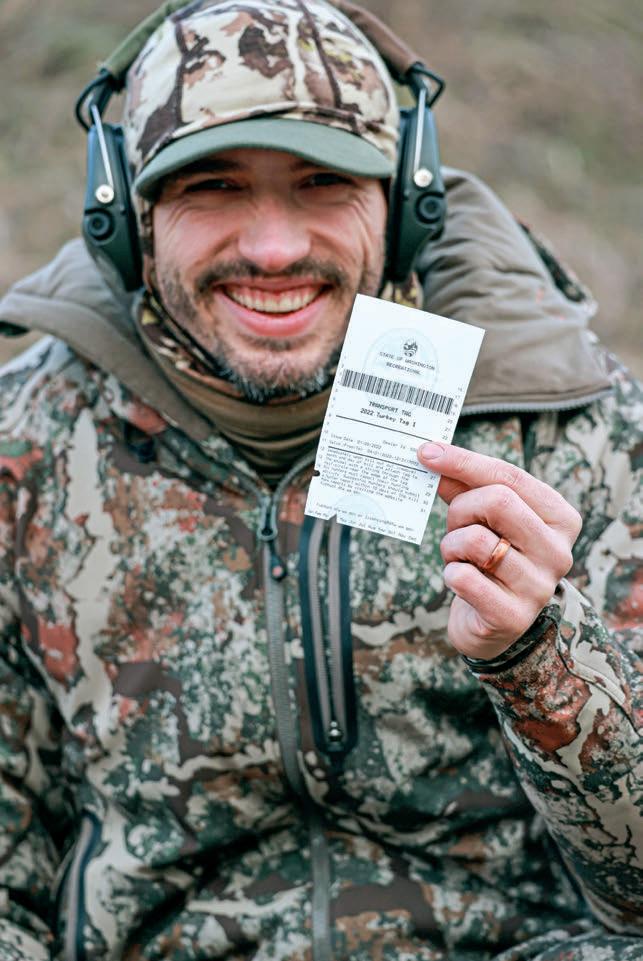
nwsportsmanmag.com | MARCH 2024 Northwest Sportsman 41 MIXED BAG
…
A recent report on wildlife-oriented recreation in Washington showed that while hunters account for a relatively small percentage of the state’s population, when it comes to dollars spent on their activity, they and anglers “are the biggest funders of wildlife conservation,” according to author Jillian Garrett. (JILLIAN GARRETT)
MIXED BAG

mind is that the report’s definition for wildlife viewing was extremely broad, especially when compared to hunting and angling. Wildlife watching, both at home and away on trips, was broken down into the following six general categories: closely observing wildlife, photographing wildlife, feeding wildlife (this could include things such as using birdfeeders), visiting public parks or areas, maintaining plantings, and maintaining natural areas (these last two categories could conceivably be anything from planting a pollinator flower garden to growing a deer food plot). The average annual participation for these nonconsumptive users was around 70 days.
Ironically, according to the report, “scouting for the purposes of hunting or fishing is not included in this definition of wildlife watching,” nor was it included
GARRETT)
We all pay into the General Fund, but excise taxes willingly paid on the purchase of hunting and fishing gear and revenues from our license sales are what set sportsmen apart from passive general public contributions when it comes to funding conservation. (JILLIAN
field, which seems a bit short of reality, and perhaps also feeds into the unintentional bias that hunters and anglers cannot also be wildlife lovers.
THE REPORT CONTAINED a summary of the annual expenses associated with the participation of the three user groups. These expenditures, when broken down, showed that the consumptive use groups (i.e. hunters and anglers) outspent nonconsumptive users by an incredibly wide margin. An important point to keep in mind here is that wildlife watching only contributed to the local economy, whereas hunting and angling contributed to the economy and conservation via Pittman-Robertson and Dingell-Johnson Act excise taxes on gear.
in the number of days spent hunting and fishing (which also begs the question, were scouting-related trip expenditures even counted as part of the annual funding contributions?). This had the effect of limiting the ability of hunters and anglers to count themselves amongst wildlife watchers, and drastically misrepresented the amount of time that they spent outdoors enjoying nature.
This omission seems rather odd, as many wildlife encounters often happen during hunting and angling trips, especially scouting ones. How many hunters have enjoyed the manic activities of squirrels when out in the woods, or how many anglers have reveled in a glimpse of bighorn sheep on the cliffs above the river? As a result, consumptive groups such as big game hunters were only clocked at an average of seven days per year in the
Another interesting aspect to all of this is that hunters in Washington spent approximately twice as much on equipment than hunters in other states, while their trip expenses were about the same as the national average. This is worth noting because it means that Washington hunters contributed more money towards Pittman-Robertson (and therefore conservation) than the national average. Meanwhile, Washington wildlife watchers had average annual trip expenditures that were about half the national average, meaning that they funneled less money into the economy compared to their counterparts in other states. The report interpreted this as possibly being due to the abundant wildlife viewing opportunities that Washington residents have available close to home.
According to the report:
Wildlife watchers spent $937 per year; Anglers spent $1,781 per year; Hunters spent $3,688 per year.
From this, it’s easy to see that consumptive users are important funding contributors. A major criticism leveled at WDFW in recent years is that the money it spends on so-called “R3”efforts – recruiting, retaining and reactivating hunters and anglers, part of a national movement strategically focused on increasing participation – is wasted. However, as the report proves, hunters and anglers spend significantly more money (and therefore
42 Northwest Sportsman MARCH 2024 | nwsportsmanmag.com

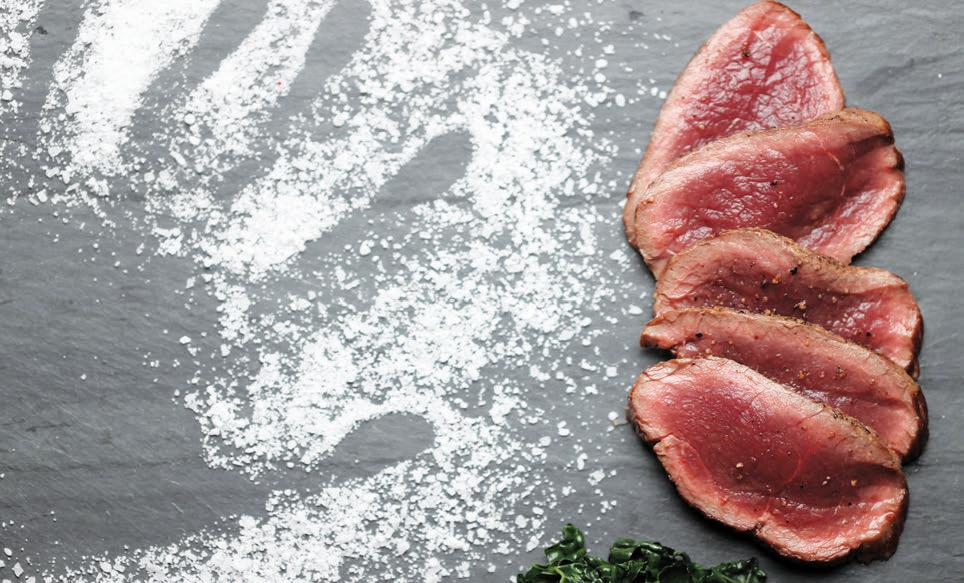
Along with finding that sportsmen fund the “lion’s share” of the Washington Department of Fish and Wildlife’s budget, other positive takeaways from the survey include relatively high female participation in hunting and more ethnic diversity among anglers versus national averages, “and that hunting and angling remain important ways of obtaining food for significant segments of the populace,” says the author.
contribute more funding) than wildlife watchers, meaning that every person who can be converted from a wildlife watcher into a hunter or angler will therefore provide two to four times more funding power to both the state economy and wildlife conservation. In short, R3 funding is deeply important because it translates into an excellent return on investment for both the state and its wildlife.
SPECIAL INTEREST GROUPS try to downplay the importance of funding contributions made by the hunting and angling communities, claiming that the general public pays far more money for conservation in the form of the state’s General Fund. This fund is composed of a wide range of state-tax-generated revenues that can be earmarked for numerous different outlets, not necessarily specifically for wildlife conservation. The
(JILLIAN GARRETT)
General Fund provides about 50 percent of WDFW’s overall annual operating budget. It is worth noting that hunters and anglers also pay into the General Fund alongside the rest of the population, while also contributing to wildlife-conservationspecific funding through tax revenues generated by the Pittman-Robertson and Dingell-Johnson Acts. This additional conservation-specific funding makes up 4 percent of WDFW’s operating budget. Hunters and anglers contributed a further 19 percent to WDFW’s budget through the purchases of licenses and tags, as well as special wildlife-themed license plates, Discover Passes and similar items. Through these two contribution categories alone, hunters and anglers funded a whopping 23 percent of WDFW’s annual budget.
The overall financial contributions of the hunting and angling communities aren’t finished: According to the report,
these two groups make up only 18 percent1 of the state population, paying into the state’s General Fund along with the rest of the populace. While the exact structure of the General Fund is a bit too complex for the focus of this article, it is reasonable to assume that the average state resident contributes the same average dollar amount to the General Fund. Extrapolating from that, if hunters and anglers make up 18 percent of the state population, it is probably safe to suppose that they also contribute 18 percent of the General Fund. With the General Fund supplying 50 percent of WDFW’s annual operating budget, that would mean that consumptive users are providing 9 percent of that figure. Meaning that hunters and anglers, while only comprising 18 percent of the total state population, may conceivably contribute 32 percent of WDFW’s annual
1According to the report, 17 percent of Washington’s population fishes and 4 percent hunts. However, these numbers cannot be added together to encompass the total number of sportsmen due to a great deal of crossover between the two groups (i.e., many hunters also fish and many anglers hunt). When you account for the people who both hunt and fish, it brings the total number of consumptive users closer to 18 percent of the state population.
44 Northwest Sportsman MARCH 2024 | nwsportsmanmag.com MIXED BAG
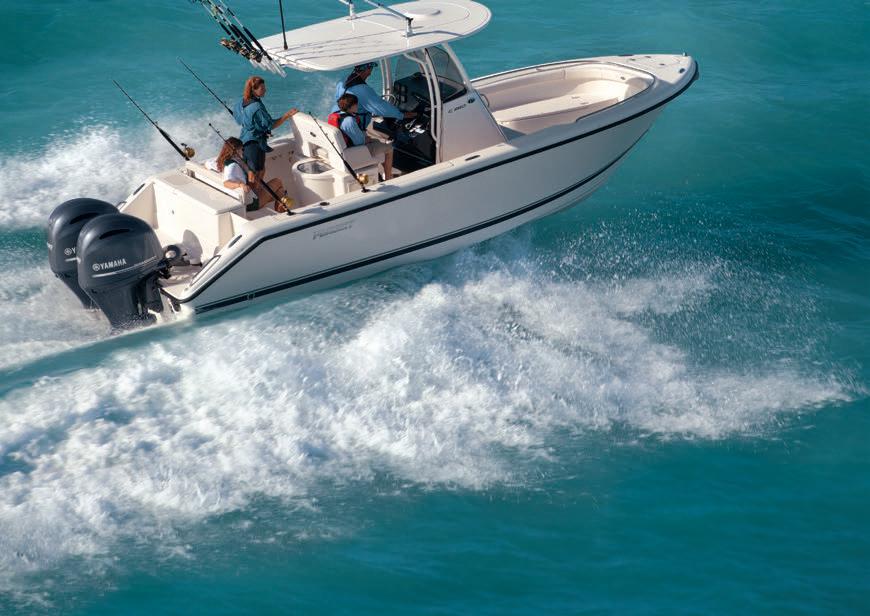



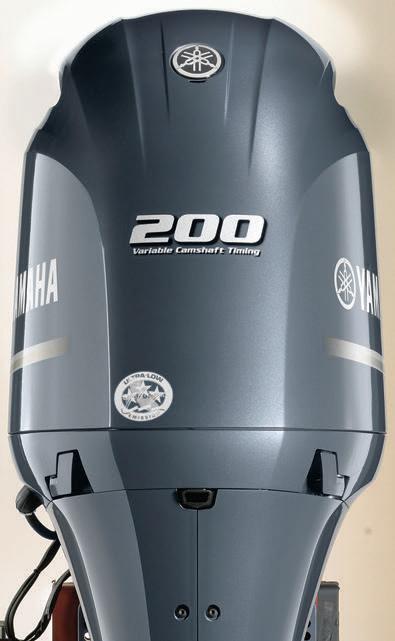
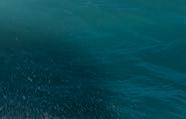

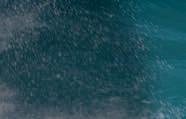


COOS BAY
Y Marina
(541) 888-5501
www.ymarinaboats.com
EUGENE
Maxxum Marine (541) 686-3572
www.maxxummarine.com
MADRAS
Madras Marine
(541) 475-2476
www.madrasmarine.com
CHINOOK
Chinook Marine Repair, Inc. (800) 457-9459
www.chinookmarinerepair.com
EDMONDS
Jacobsen’s Marine (206) 789-7474
www.jacobsensmarine.com
EVERETT
Everett Bayside Marine (425) 252-3088
www.baysidemarine.com
MOUNT VERNON
Master Marine Boat Center, Inc. (360) 336-2176
www.mastermarine.com
MOUNT VERNON
Tom-n-Jerry’s Boat Center, Inc. (360) 466-9955
www.tomnjerrys.net
OLYMPIA
US Marine Sales & Service (800) 455-0818
www.usmarinesales.com


SHELTON
Verle’s Sports Center (877) 426-0933
www.verles.com
nwsportsmanmag.com | MARCH 2024 Northwest Sportsman 45
120 pounds lighter than our four-stroke V6 F200
the
who’s
the F200
it serves up plenty of
to handily propel
that, its
offers the power to add a range of electronics, and its 26-inch
and compatibility with
mechanical or digital controls give you the flexibility to easily upgrade your outboard or
Experience legendary Yamaha reliability and the freedom of forward thinking, with the F200 In-Line Four. THE F200 IN-LINE FOUR. FORWARD THINKIN REMEMBER to always observe all applicable boating laws. Never drink and drive. Dress properly with a USCG-approved personal intended to be an endorsement. © 2013 Yamaha Motor Corporation, U.S.A. All rights reserved. Follow Yamaha on Facebook® and Twitter™ YamahaOutboards.com/F200InLine LIGHTWEIGHT. The lightest 200-hp four stroke on the market POWERFUL. 2.8L displacement and Variable Camshaft Timing give it the best power-to-weight ratio of any 200-hp four stroke COMPACT.
120 pounds lighter than our four-stroke V6 F200
the water who’s boss with the F200 In-Line
it serves up plenty of muscle to handily propel a variety of boats. On top of that, its 50-amp alternator offers the power to add a range of electronics, and its 26-inch mounting centers and compatibility with either mechanical or digital controls give you the flexibility to easily upgrade your outboard or rigging. Experience legendary Yamaha reliability and the freedom of forward thinking, with the F200 In-Line Four. THE F200 IN-LINE FOUR. FORWARD THINKING. REMEMBER to always observe all applicable boating laws. Never drink and drive. Dress properly with a USCG-approved personal intended to be an endorsement. © 2013 Yamaha Motor Corporation, U.S.A.All rights reserved. Follow Yamaha on Facebook® and Twitter™ YamahaOutboards.com/F200InLine
Nearly
Show
water
boss with
In-Line Four. Incredibly light, responsive and fuel efficient,
muscle
a variety of boats. On top of
50-amp alternator
mounting centers
either
rigging.
Nearly
Show
Four. Incredibly light, responsive and fuel efficient,
WASHINGTON OREGON
MIXED BAG
budget. That is an enormous chunk of the operating budget, making hunters and anglers significant contributors to wildlife management, and cementing the conclusion that they absolutely deserve their seat at the negotiation table when it comes to policy decisions.
IT’S WORTH TAKING a moment to note one other significant aspect gleaned from this report, especially in light of recently proposed legislation to amend the state constitution to protect the right to hunt, fish and forage: the importance of hunting and angling as a method of procuring food. While most hunters, anglers and wildlife watchers enjoyed a comfortable annual income of around $50,000 to $75,000, participation in the hunting and angling communities showed a sharp increase for those with an income level of less than $10,000 per year. The assumption is that for lower income residents, hunting and fishing provides an important way of obtaining food, adding value to the
argument that denying hunting and fishing opportunities endangers the ability of people to feed themselves.
Another interesting takeaway for the hunting community from this report may be recognizing the persuasive power of the angling community when it comes to consumptive use issues, as fishermen represent the second largest participation group in wildlife-related recreation. The recent state Senate Bill 6294, prohibiting the unlawful trade of fur products, was roundly defeated in large part due to the uproar it caused in the angling community, as the bill’s language would have hindered the ability to create fly fishing lures with animal fur. This example goes to show that the hunting community could deeply benefit by reaching across the aisle and teaming up with anglers on consumptive use policy issues.
EXAMINING THE COMPOSITION
of the two consumptive user groups is also deeply interesting. Surprisingly, the gender gap
is far narrower in the Washington hunting community than elsewhere in America, with 41 percent of hunters identifying as women. This is something to be celebrated, as it is a much higher percentage than the national average of 22 percent, helping to break the stereotype that hunting is a boysonly club. In the angling community, the gender gap continued to mirror national averages, with only 26 percent of anglers identifying as women. While the hunting community may have a narrower gender gap, both user groups could still benefit from greater recruitment and inclusion of women participants – something to perhaps keep in mind for R3.
When it comes to diversity, trends within the hunting community mirrored national averages, with participation rates being highest among residents who identified as Asian, followed by those identifying as Hispanic and as white. The participation rate was lowest for those identifying as Black, non-Hispanic, and all other non-Hispanic residents. While the elevated participation

46 Northwest Sportsman MARCH 2024 | nwsportsmanmag.com


nwsportsmanmag.com | MARCH 2024 Northwest Sportsman 47
MIXED BAG
rate among Asian residents and lower rate among Black residents is consistent with national patterns, there is still significant room for improvement. These trends show a need to work with organizations such as Hunters of Color and First Hunt Foundation’s Forgotten Rites Initiative to help increase diversity and inclusion within the hunting community, as well as help provide access to hunting areas (which can often be a barrier to entry).
Diversity was higher amongst the angling community: While the majority of people who participated in fishing were white, the composition of the angling community proved to be more racially and ethnically diverse than the state population overall. Anglers demonstrated highest participation rates amongst those identifying as Hispanic and as Asian. Meanwhile, participation in anglers identifying as Black was once again among the lowest state participation rates, as well as being lower than the national average. Thus, the argument continues for a need
to increase diversity and inclusion within the angling community.
AT THE END
of the day, the biggest takeaways from this report are all positive points in favor of Washington’s consumptive user groups: that hunters and anglers fund the lion’s share of WDFW’s annual budget and wildlife conservation; that Washington hunters have a narrower gender gap and Washington anglers have a higher level of ethnic diversity than national averages; and that hunting and angling remain important ways of obtaining food for significant segments of the populace. While there is always room for continued improvement (such as better diversity and inclusion), these are all things to celebrate. They are also important points to utilize as tools in the ongoing debate over consumptive use policy.
While wildlife-related recreation is deeply important to most Washington residents, the funding contributed by the hunting and angling communities
towards conservation means that they have every right to have a major say in how state wildlife is managed. Though hunters and anglers may only represent a minority of the state population, funding provided by these two groups contributes nearly a third of WDFW’s annual operating budget, meaning that while most of Washington may cherish its wildlife, hunters and anglers are the ones who provide the actual dollars to ensure that it remains safe for current and future generations. NS
Editor’s note: Author Jillian Garrett is a hunter, farmer and conservationist living in Northeast Washington. She and her husband operate a regenerative farm with a focus on wildlife conservation through responsible land stewardship.Jillian’s writing and photography have also appeared in Sports Afield, Bear Hunting Magazine and Blue Ridge Farmer Magazine. A member of First Hunt Foundation, she remains passionate about the importance of mentorship within the hunting community.
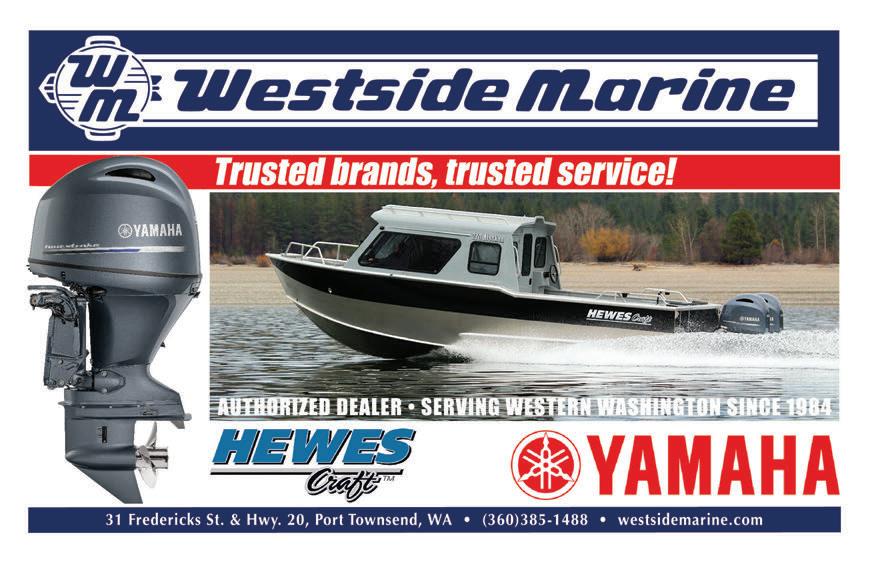
48 Northwest Sportsman MARCH 2024 | nwsportsmanmag.com

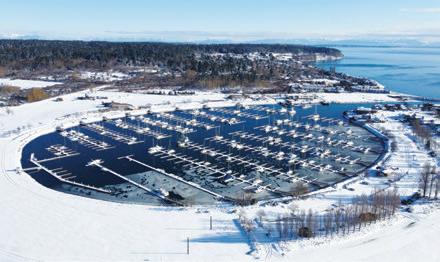
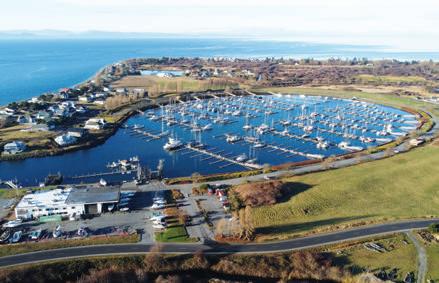


nwsportsmanmag.com | MARCH 2024 Northwest Sportsman 49


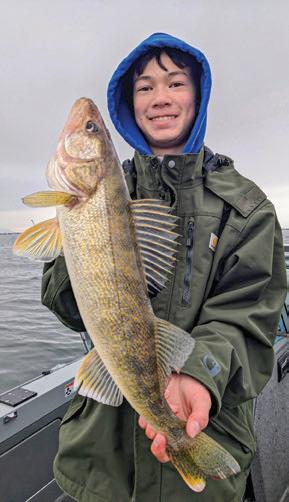
Work, school stuff and more had the Hans pinned down over the holidays and start of the year, but eventually Austin and his dad Jerry were able to get out on the MidColumbia for some walleye early last month. (KNIFE
READER PHOTOS

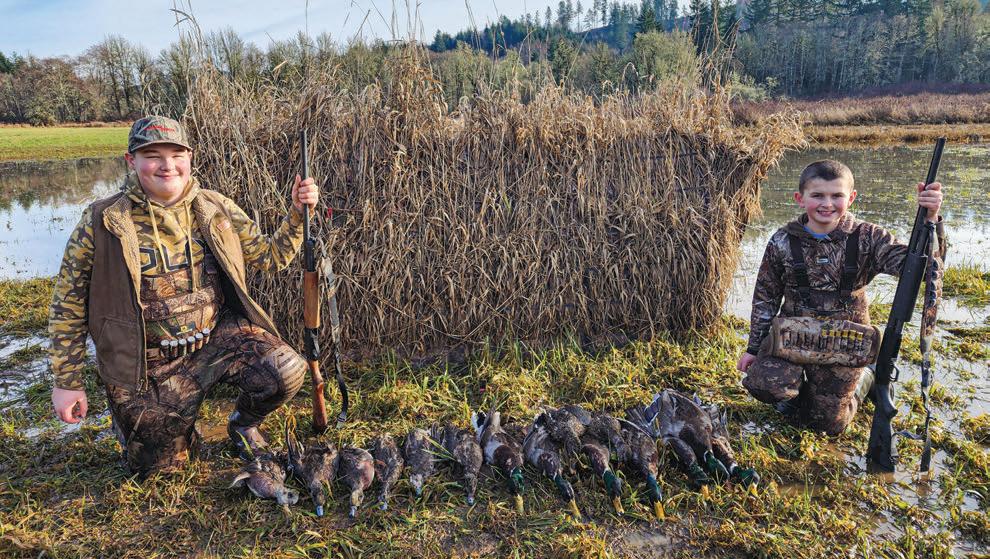
nwsportsmanmag.com | MARCH 2024 Northwest Sportsman 51
For your shot at winning great fishing and hunting knives from Coast and Kershaw in our Knife Photo Contest, send your full-resolution, original images with all the pertinent details – who’s in the pic; when and where they were; what they caught their fish on/weapon they used to bag the game; and any other details you’d like to reveal (the more, the merrier!) – to awalgamott@media-inc.com or Northwest Sportsman, 941 Powell Ave SW, Suite 120, Renton, WA 98057. By sending us photos, you affirm you have the right to distribute them for use in our print and Internet publications.
Last issue’s photo contest winner Chad Smith struck out on deer in 2023, but not so for his buddy Mitch, here with a nice November blacktail. (KNIFE PHOTO CONTEST)
PHOTO CONTEST)
Jack Thompson (left) and Carter Rodway were “inseparable” this past waterfowl season, says Carter’s dad, David. They bagged many mallards, wigeon, teal, geese and more in the Olympia area. It was Carter’s third season of hunting and fifth in the blind, and he also enjoys baseball and fishing. (KNIFE PHOTO CONTEST)
Emmy Nordgaard enjoyed a morning of smelt dipping on the lower Cowlitz River last month. She and her dad Luke were dipnetting near our contributor MD Johnson, who was impressed by the 14-year-old’s determination and big plans to own her own business. (JULIE JOHNSON)

CONTEST MONTHLY Winner!
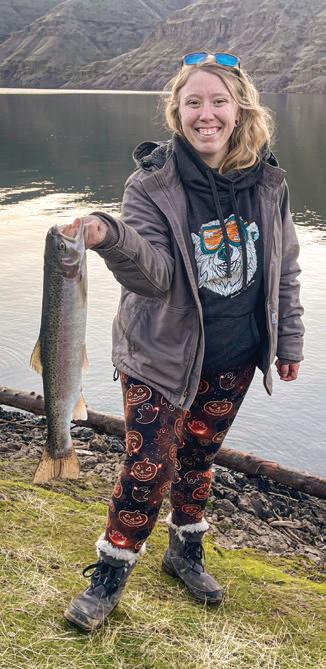

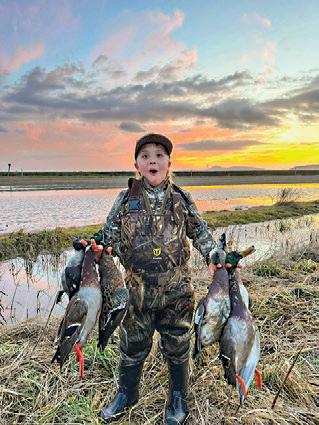


52 Northwest Sportsman MARCH 2024 | nwsportsmanmag.com
READER PHOTOS
Eric Johnson enjoyed a more meaningful duck season by getting his kiddos Tucker (this image) and Jillian (below right), as well as their cousin Sage (below left), on a few North Sound outings. “Although they are not hunting yet themselves, I find it very rewarding to introduce them to the sport and get them out enjoying the hunt,” Johnson writes. (KNIFE PHOTO CONTEST)
It was a here-and-gone opportunity, but Kenny Howard and granddaughters Abby and Alondra Schoonover (left, right) got their sturgeon on the Bonneville Pool on New Year’s Day. “These girls have grown up harvesting fish every year with their amazing grandfather!” writes family friend Dennis Schwartz. (KNIFE PHOTO CONTEST)
With the Bonneville Pool packed, Dustin Melius (left) and Nathan Craig decided to hit The Dalles Pool and found it pretty busy too, but they squeezed in amongst the fleet and picked up a pair of keeper sturgeon on squid. (KNIFE PHOTO CONTEST)
Cory Hovanec is an absolute diehard shore-based Snake River steelheader. “I love the harsh challenges of bank fishing for these monster fish. Freezing cold. Harsh wind and rain and snow. I sit next to the water with my fishing dog Ohana and wait for the bobber to go down,” says Hovanec, who was taught by fellow Northwest Sportsman reader Bill Stanley and says he’s caught 40 big steelhead over the years. He’s passing the skills along to daughter Kaiha Brooke Hovanec, here with her first. (KNIFE PHOTO CONTEST)
PHOTO
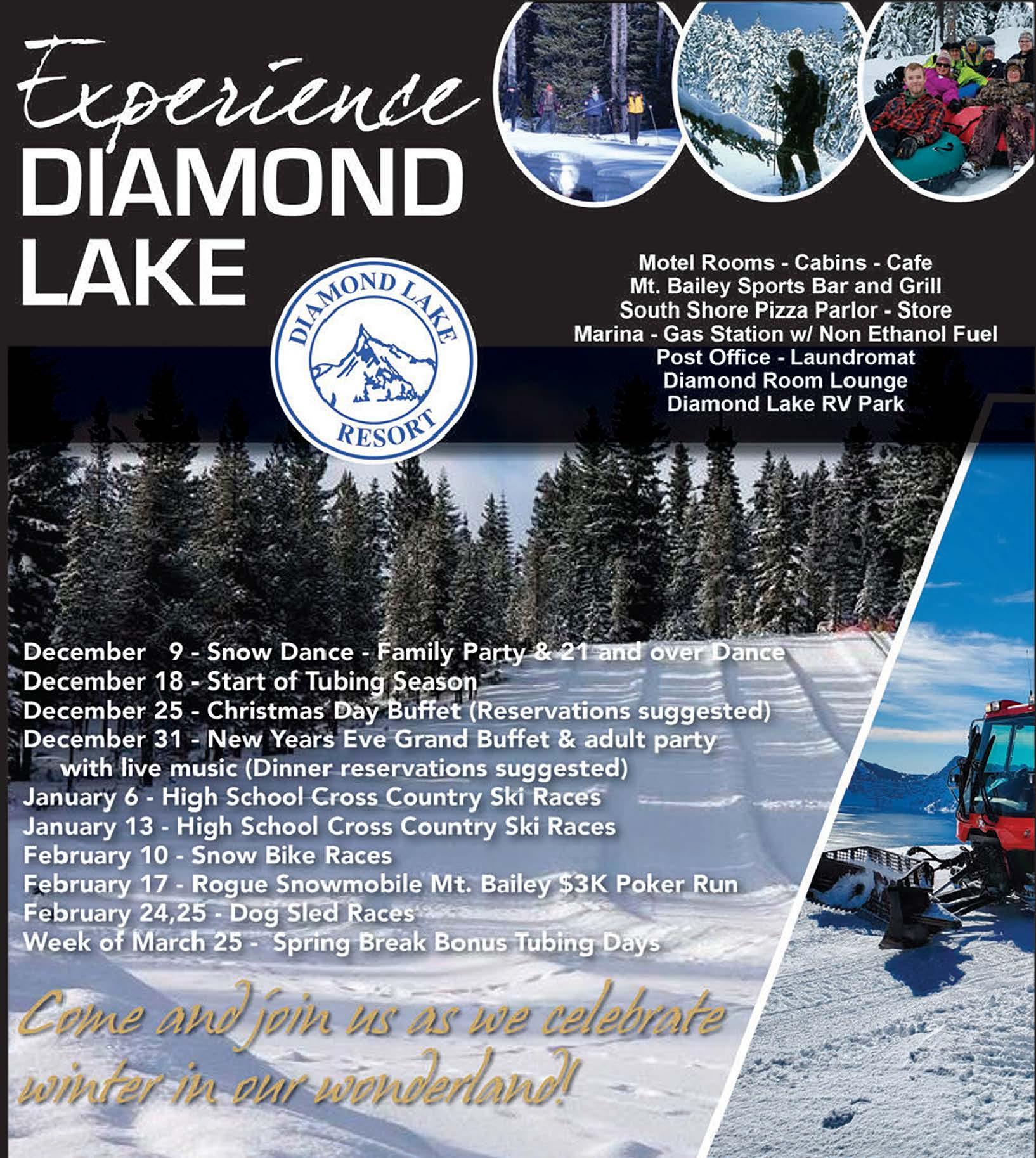
Diamond Lake Resortis located at the summit of the Southern Oregon Cascade Mountains On Hwy 138 just 5 miles North ofCrater Lake National Park We are the hub of300 miles ofgroomed Snowmobile trails and the only snowmobile access to Crater Lake National Park
541.793.3333Iwww.diamondlake.net



MIXED BAG
Scappoose Bay Sturgeon Poacher Sentenced
It took awhile, but a Lower Columbia sturgeon poacher was sentenced to jail, fined and had his fishing license suspended for three years for killing an oversize fish, among other violations.
Oregon State Police Fish and Wildlife Division troopers report that when he pled guilty this past December, Julio Duran of Salem was immediately taken into custody to serve 20 days, ordered to pay the Department of Fish and Wildlife $5,000 in restitution and contribute another $500 to the statewide anti-poaching fund, and put on probation for 36 months.
The case made local news in March 2022 when fish and wildlife troopers received a tip that some fishermen had illegally retained a sturgeon on Scappoose Bay, where the fish had gathered in some numbers. Setting up surveillance, the troopers watched as three people in a boat pulled up a rope holding a sturgeon, and then they moved in.
Upon contact, troopers discovered none of the trio had fishing licenses and they were using barbed hooks, which aren’t allowed for sturgeon. After initially denying they had any fish, a consent search yielded five sturgeon hidden on three ropes, including a 7-plus-footer.
There was no sturgeon retention
Ifishery open there at the time – nor will there be in 2024 for a second straight year due to a cratering population and declining keeper numbers – but in past seasons below Bonneville, the maximum size has been 50 inches fork length.
Illegally possessing an oversize fish is a class C felony in Oregon. Doran pled guilty to that, unlawful take of the other four sturgeon and not having a fishing license. The barbed hooks charge was dismissed.
JACKASS OF THE MONTH
By Andy Walgamott

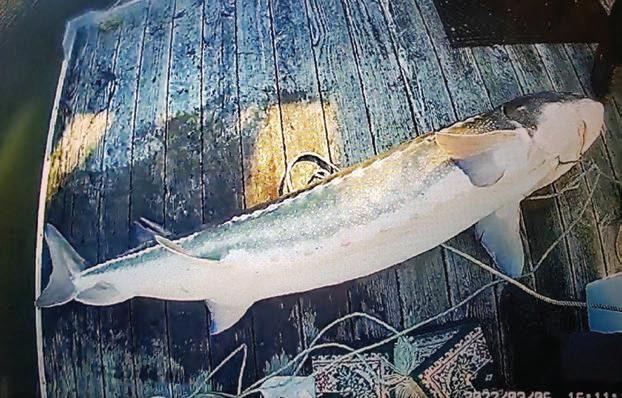
As for the other two defendants, Jose Plascencia of Dayton previously pled guilty to not having a license and was sentenced to 10 days on the Columbia County work crew or 80 hours of community service, while Axel Guell of St. Helens received two years probation and a $500 fine payable to ODFW. Both of their licenses were also suspended three years.
The wheels of justice can turn slow, but they do turn.
t’s astonishing sometimes how much effort people will go to to circumvent the rules. Such is the case with two New York men who were part of “a larger scheme where the subjects conspired with a network of poachers, using hunting and wildlife photography posts on social media to target large bucks in suburban and urban areas closed to hunting.”
One of the men, Jayson Zorda, put up a fake Facebook profile and pretended to be a female wildlife photog to contact others about the locations of large city bucks to hunt them, according to the state Department of Environmental Conservation. While that is more unsavory and unethical than illegal, what got Zorda and buddy Kevin Butler busted was shooting an eight-pointer behind an apartment complex in a no-hunting area and which ran into an attentive hunter’s yard before dying. Trail camera images helped identify the two and led to a search warrant of their homes. DEC said Zorda and Butler would dress up as hikers, with their bows and arrows hidden in backpacks and walking sticks. Zorda and Butler both pled guilty to illegally killing two whitetails, were fined $1,075 and will also spend the next five years watching critters rather than hunting them after having their licenses suspended.
nwsportsmanmag.com | MARCH 2024 Northwest Sportsman 55
A sturgeon poaching case from March 2022 wrapped up this past December with the sentencing of Julio Doran of Salem for illegally retaining this oversize fish and four other smaller diamondsides on a Multnomah Channel backwater. (OSP)
MIXED BAG
Op-Ed: Time To Lower Duck Limits?
What the hell’s the deal with people killing big numbers of waterfowl and wasting them?
It happened in January when a Wazzu student shot 19 ducks and a goose off a Connell dairy’s poop pond and then decided they didn’t smell good and he didn’t want anything more to do with them, so he threw them all in a campus dumpster.
A state game warden had a chat with him about Washington’s wildlife waste laws and charges were forwarded to the county prosecutor. Fingers crossed the case is taken up, but at the very least, I hope the stench of his wastage clings to his vehicle for a good damn long time.
Cougs are better than this.
Somehow, that wasn’t even the worst case from this past duck season. Last month, the Idaho Department of Fish and Game reported that 49 mallards – mostly greenheads – were found dumped south of Lake Lowell in late January, and none had a lick of meat taken off of them.
“Seeing this number of ducks go to waste is a travesty. It amounts to seven legal limits of ducks that countless waterfowl hunters would have been thrilled to harvest and to eat,” stated Conservation Officer Craig Mickelson.
The overharvest wastage of waterfowl we’re starting to see more and more of is
really starting to piss me off.
Freezer’s already full … didn’t want to clean a bunch of birds … got in late … it’s about the hits/critter pile, bruh …
Unpopular opinion: Is it time to reduce the bag limit from seven ducks a day to two, three or four, the limit of snows and other white geese from 10 to 20 a day to a handful instead of a trunkful?
Maybe high limits are giving some folks the wrong impression that waterfowl numbers are limitless, so why not blaze a bunch and then, hell, just throw ’em away on the side of a canal or in the dumpster back at campus after getting the day’s pics.
I know reducing daily limits would unfairly impact real Northwest sportsmen, but would it really? Two longtime duck hunters who I really respect emailed to say four or five a day is plenty. Both reacted very negatively to the late-season wastage, and one was scornful of the new breed in the marsh who are “pile pic and ditch dumping.”
That is not how any of this works. None of it. To quote myself in a 2021 article on this problem, “If you are not going to eat what you kill, don’t kill. If you are throwing out dead ducks to make room to kill more, stop. We didn’t rebuild North American duck populations and raise untold hundreds of millions of dollars to restore their habitat for them to be treated as Pop-Its.”
3 OR Wolves Poached
The U.S. Fish and Wildlife Service reported three wolves were killed in Southern Oregon in late December and said that a $50,000 reward is being offered to help solve the crime.
USFWS says that on December 29, the collars of two Gearhart Mountain Pack wolves sent out mortality signals and that when state fish and wildlife troopers and a biologist responded to the scene east of Bly, they found that pair and a third dead wolf.
The animals were described as the pack’s
breeding female, OR115, a subadult known as OR142 and another subadult. No details were available about the cause of death, but the close proximity in time and location suggests shooting or poison.
The pack was documented in 2022 and committed four livestock depredations that year. State officials last month said seven wolves remain in the pack. They roam Lake and Klamath Counties, in the still federally listed portion of Oregon. Wolves also remain protected under Oregon state law.
Rare Oregon Moose Shot, Wasted
There’s only about 50 moose in all of Oregon, but someone illegally shot and wasted one in midwinter between Ontario and the Snake River in mid-January, and a $2,000 reward is being offered for info leading to an arrest or citation.
State officials say the cow moose was killed in a snowy field 1 mile east of town on January 16. It had probably crossed over from Idaho, but there is a small population in the area, one of two regions in Oregon with moose. (The other is in the Blue Mountains.)
“We have historically held a very small Shiras moose population in Malheur County on the order of maybe a few verified sightings per year,” said Tucker Freeman, a state wildlife biologist based in Ontario. “The majority of these sightings occur in the Snake River drainage and most everyone we speak with is very pleased with the opportunity to have seen a moose in the area.”
While moose are not native to Oregon, Freeman still expressed disappointment over the poaching of the cow and made a point to note that tipsters could score five preference points for the controlled draw in lieu of the cash reward. Contact Senior Trooper Casey Hunter at (800) 452-7888 or by dialing *OSP on your smartphone, and reference case number SP24017131.
CASE UPDATE
Chase E. Cominsky, the infamous Lake Erie walleye tournament angler who was set to be arraigned on a weighty slate of big game violations in January, which we reported on here last November, saw the charges suddenly dropped by prosecutors. No word on why, but Cominsky is currently doing six to 12 months for forgery related to trying to pass off $100 bills at a bowling alley.
56 Northwest Sportsman MARCH 2024 | nwsportsmanmag.com



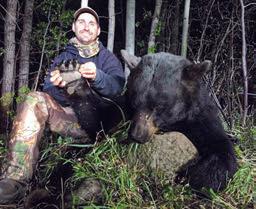

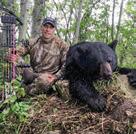




nwsportsmanmag.com | MARCH 2024 Northwest Sportsman 57 Bear hunts cost is $4000 USD + taxes for a 6 day hunt, options to extend your hunt will be at extra cost. Food accommodations, guide and trophy preparation are all included in this price. These hunts will operate in the last week of April, May and October. SASKATCHEWAN, CANADA BLACK BEAR HUNTS 306-380-6204 noflyzone.info@gmail.com nfzwaterfowl.com SPRING & FALL
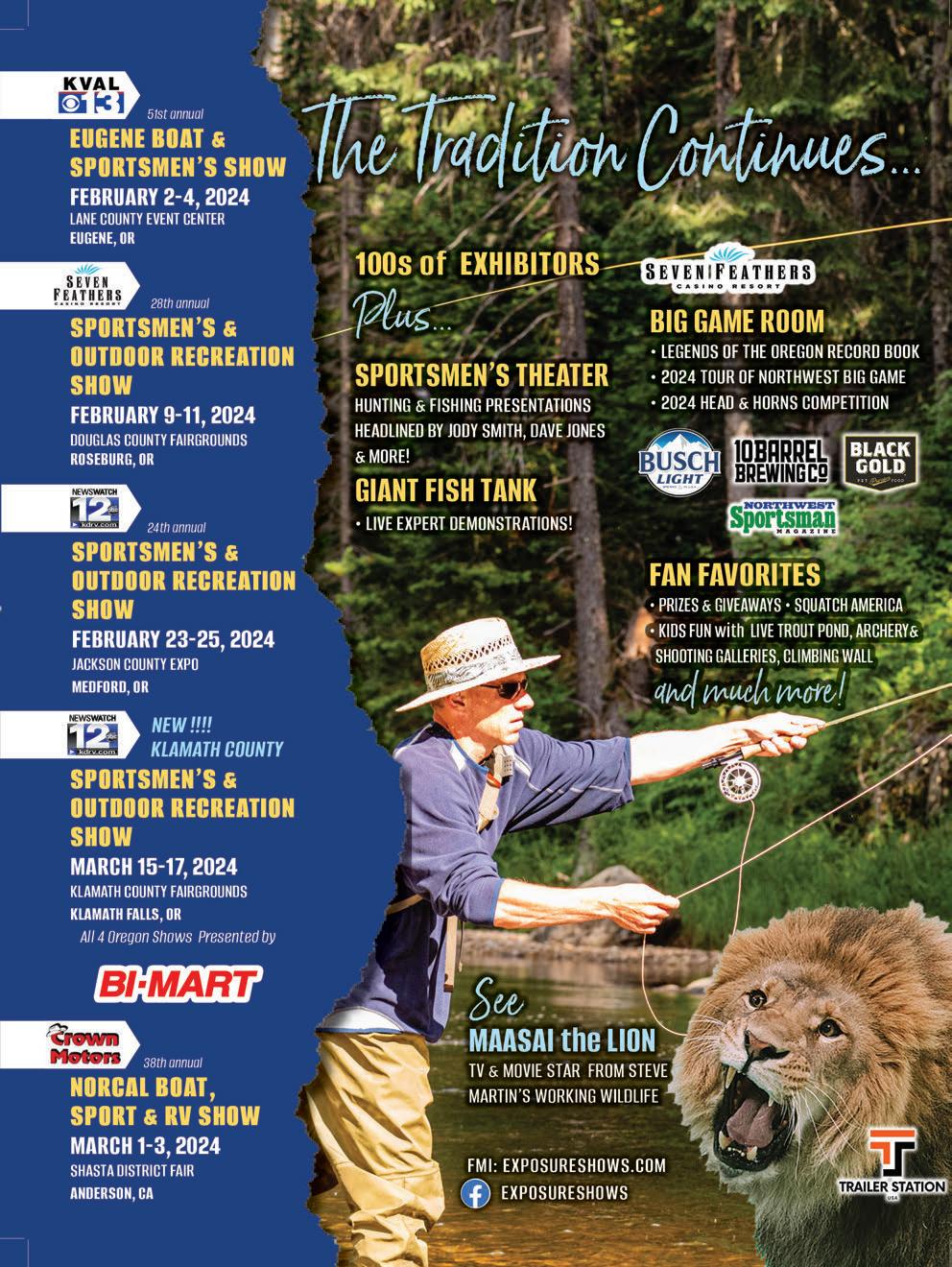
CALENDAR OUTDOOR
MARCH
1 WDFW North of Falcon Forecast Kickoff meeting, Olympia and online – info: wdfw.wa.gov/fishing/management/north-falcon; Numerous Eastern Washington lakes open for fishing; Blackmouth opener on Washington Marine Areas 10 and 11; Lake Billy Chinook’s Metolius Arm opens for fishing
3 Last day of Washington Goose Management Area 4 late white goose season
6 Last day of Washington GMA 2 Coast and Inland Units late goose seasons; ODFW Intro To Hunting In Oregon ($, registration), Portland Sportsman’s Warehouse – info: myodfw.com/workshops-and-events
7-17 Tentative razor clam digs scheduled on select Washington Coast beaches, dependent on marine toxin levels – info: wdfw.wa.gov
9 Bottomfish, lingcod, rockfish and cabezon season openers on Marine Areas 1-3 and Area 4 west of Bonilla-Tatoosh line
10 Last day of Oregon Northwest Permit and South Coast Zones goose seasons, and High Desert and Blue Mountains Zone white and whitefronted goose seasons
13 WDFW North of Falcon No. 1: Statewide Proposals meeting, Olympia and online – info above
14 ODFW Intro To Hunting In Oregon ($, registration), Newport – info above
15 Last day of bobcat, fox, raccoon, rabbit and hare seasons in Washington; Leftover Oregon spring black bear tags go on sale at 10 a.m.
15-17 Ocean Shores Razor Clam and Seafood Festival – info: facebook.com/ RazorClamFestival
19 WDFW North of Falcon Coastal Freshwater and Puget Sound Recreational Fisheries meeting, online – info above
20 Washington sea duck, Southwest Canada goose, snow goose and brant harvest reports dues
20-21 ODFW Intro To Hunting In Oregon ($, registration), Hood River Library, Portland Sportsman’s Warehouse, Tualatin Cabela’s – info above
21 WDFW North of Falcon Mid- and Lower Columbia River and Puget Sound Freshwater and Marine Fisheries meeting, Ridgefield and online – info above
23 Turkey Success workshop and gear raffle with Jason Brooks and Richy Harrod, Sportco, Fife, Washington – info: sportco.com
26-31 Tentative razor clam digs scheduled on select Washington Coast beaches, dependent on marine toxin levels – info above
27 WDFW North of Falcon No. 2 Statewide Proposals, Upper Columbia and Snake River Fisheries meetings, Lynnwood, Clarkston and online – info above
Razor clam season on the Washington Coast switches to morning low tide digs starting March 12. Brad Dailey and son Filson made this haul last season at Long Beach. (KNIFE PHOTO CONTEST)

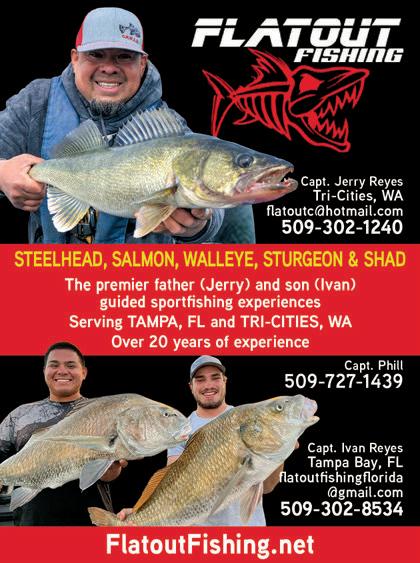

nwsportsmanmag.com | MARCH 2024 Northwest Sportsman 59

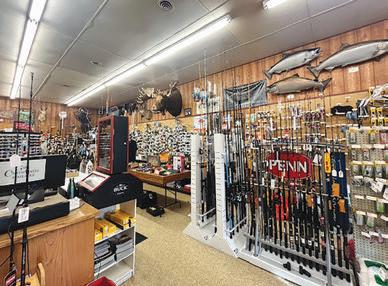

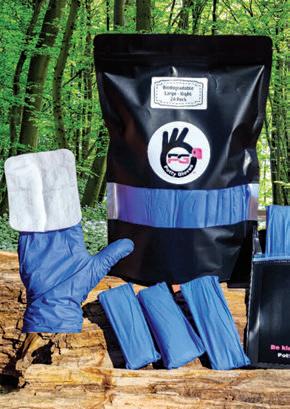

MARCH (continued)
28 WDFW North of Falcon Willapa Bay/Grays Harbor Fisheries meeting, online – info above
31 Last day 2023-24 Washington fishing and hunting licenses valid; Last scheduled day of winter steelhead season on Washington Coast; Washington small game, Westside pheasant and migratory bird reporting deadline
1 New Washington fishing, hunting licenses required; Opening day of spring black bear hunts in select Idaho and all controlled Oregon units
1-7 Washington youth turkey hunting week
6 ODFW Youth Turkey Clinic ($, registration), Tygh Valley – info above
6-11 Pacific Fishery Management Council West Coast salmon season setting meetings – info: pcouncil.org/council-meetings/upcoming-meeting/
8-14 Idaho youth turkey hunting week
13-14 Oregon youth turkey hunting weekend; 47th Annual Oregon Knife Show, Lane Events Center, Eugene – info: oregonknifecollectors.com
15 General spring turkey season opener in Idaho, Oregon and Washington; Opening day of black bear hunts in most remaining Idaho units
17 Last day of wild steelhead catch-and-release fishing on portions of Washington’s Skagit and Sauk Rivers (open Saturdays-Wednesdays only)
22 Fishing or bait opener on select Oregon waters
27 Opening day of lowland lake fishing season in Washington; Start of Washington Trout Derby at select lakes – info: wdfw.wa.gov/fishing/ contests/trout-derby
30 Last day of Washington late cougar season – quota info: wdfw.wa.gov/ hunting/regulations/big-game/cougar
MAY
1 2024 Northern Pikeminnow Sport-Reward Program fishery begins on Columbia and Snake Rivers – info: pikeminnow.org
15 Oregon fall controlled big game permit purchase application deadline
25 Last day to hunt turkeys in Idaho
31 Last day of Oregon and Washington spring turkey seasons; Last day of Oregon spring bear season
2024 BOAT AND SPORTSMEN’S SHOW
CALENDAR
Feb. 29-March 3 The Idaho Sportsman Show, Expo Idaho,
60 Northwest Sportsman MARCH 2024 | nwsportsmanmag.com
Boise; idahosportsmanshow.com 1-3 BC Sportsmen’s Show, Tradex, Abbotsford, BC; bcsportsmenshow.ca 7-10 Central Oregon Sportsmen’s Show, Deschutes County Fair & Expo Center, Redmond; otshows.com 8-9 Northwest Fly Tyer & Fly Fishing Expo, Linn County Fairgrounds, Albany; nwexpo.com 8-10 Victoria Boat and Fishing Show, Pearkes Recreation Centre, Victoria, BC; victoriaboatshow.com 14-17 Big Horn Outdoor Adventure Show, Spokane Fair & Expo Center, Spokane; bighornshow.com 15-17 Klamath Falls Sportsmen’s & Outdoor Recreation Show, Klamath County Fairgrounds, Klamath Falls; exposureshows.com MARCH MAY 4 Fly Casting Fair, Ballinger Park, Mountlake Terrace, Washington; flyfishersinternational.org 16-18 Anacortes Boat & Yacht Show, Cap Sante Marina, Anacortes; anacortesboatandyachtshow.com APRIL ORDER AT POTTYGLOVES.COM The Perfect Solution For Wiping And Packing Out When Enjoying Nature. Say goodbye to awkward squatting and fumbling with TP and hello to a hassle-free bathroom break in the great outdoors. These nitrile gloves come with an attached cotton pad, providing a convenient and hygienic way to wipe. Potty Gloves ensure a clean and comfortable experience. 604-273-5901 service@berrysbait.com use code: NWSM on www.berrysbait.com 10% OFF The best stocked sport fishing tackle store in British Columbia since 1973

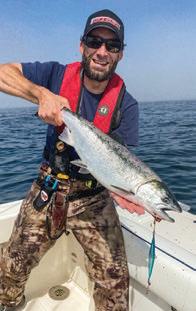




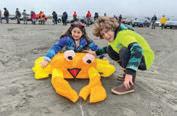
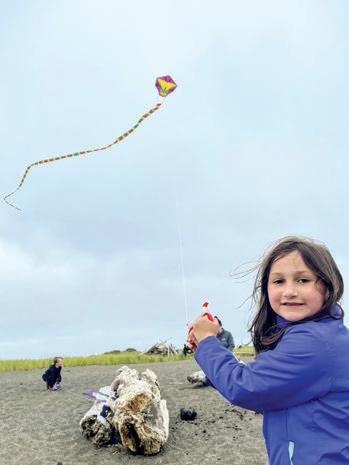

nwsportsmanmag.com | MARCH 2024 Northwest Sportsman 61 westporthookersandblow.com westporthookersandblow@gmail.com We specialize in slow pitch jigging and of course kites. The only tackle and kite shop in Westport

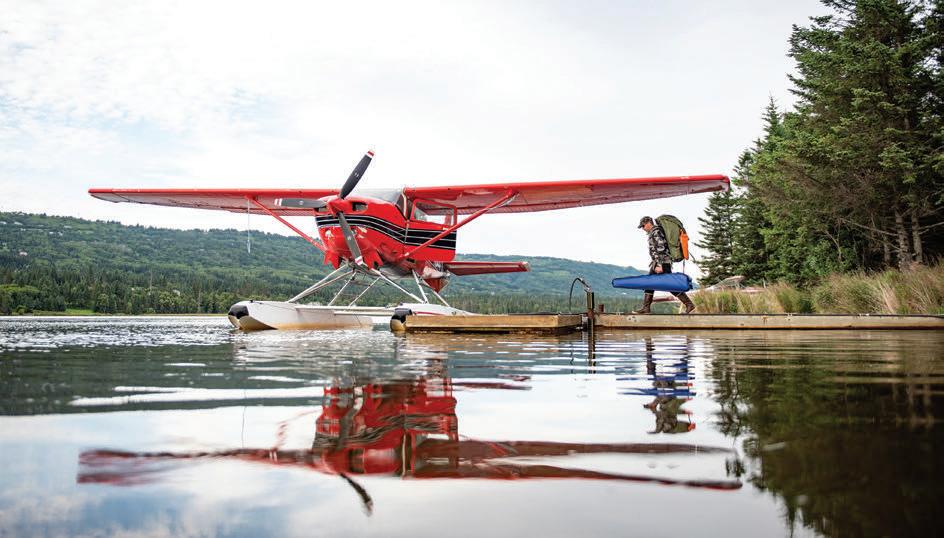


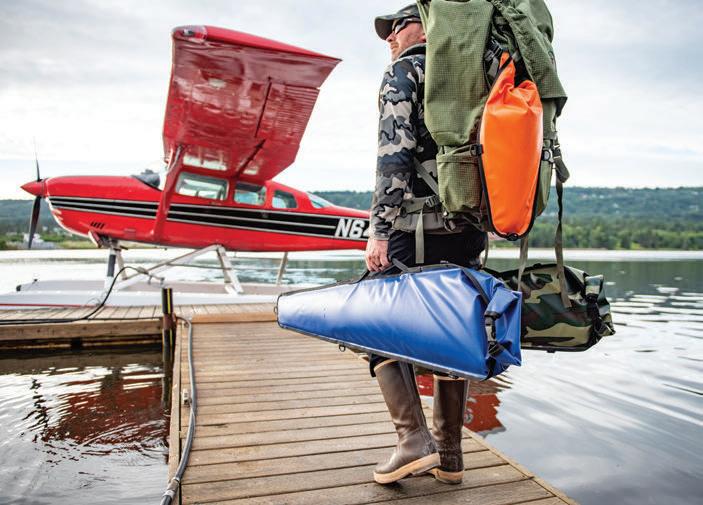
Choose quality Alaskan-made gear when planning your next adventure. GUN SCABBARD waterproof gun bag Homer, Alaska • 800-478-8364 • nomaralaska.com ATTENTION NORTHWEST SPORTSMAN READERS Mention this ad for a FREE carry strap with purchase of the gun scabbard. Shop nomaralaska.com to see all the gear we make for outdoor adventures.


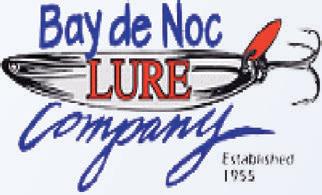


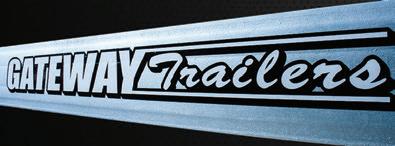









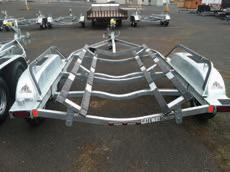
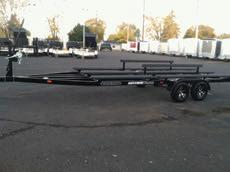

64 Northwest Sportsman MARCH 2024 | nwsportsmanmag.com WWW.BAYDENOCLURE.COM Fishing for Walleye, Trout, Pike, Pan Fish, Bass, Stripers, Salmon and Whitefish with Bay de Noc Lures Dealer Inquires Welcome! Reliable Quality Service & Craftsmanship For Over 50 Years! • NMMA Certified • All Steel Weld Frame, Fenders & Bunks • 2 YEAR WARRANTY Custom Boat Trailers 343 Thain Rd., Lewiston, Idaho • www.gateway-materials.com • 208-743-0720
Get To Gold Beach For Springer Action
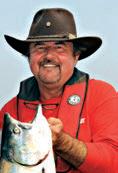
Yep, I know, the Lower Columbia as well as Willamette and its slough will be starting to produce a few more spring Chinook as you read this, and the catching should only improve as we near the last week of this month and through April and May. As of this writing, the states have yet to forecast how long the sport fishing on the big river might last. But my (wild) guess is that the sport season will terminate sometime in early April, at which time nearly everyone wanting a taste of these scrumptious fish will switch their fishing effort to the Willamette and Multnomah Channel.
Of course, there are other places in the Northwest to catch a spring Chinook, with the lower Rogue River being an excellent choice, especially for anglers who haven’t experienced what can be hot fishing. The Southern Oregon fishery offers a two-fish daily limit for thick-bodied springers that average 20 pounds and can tip the scale at 30 pounds or more.
LAST YEAR I jumped at the chance to fish the Rogue when Dave Eng of Eng Products and I received invitations from Fred Contaoi of Douglas Outdoors fishing rods and local fishing guide Pat Hollinger, owner of Eagle Bay Lodge (541-556-5128). After all, it had been more than a couple years since I’d last fished the area.
Rogue springers pass the Highway 101 bridge at Gold Beach at a dead run, as they are in a hurry to reach their upstream spawning grounds or hatchery that produced them. You see, they’re programmed to travel quickly through the lower river before summertime temperatures begin to

nwsportsmanmag.com | MARCH 2024 Northwest Sportsman 65 COLUMN
BUZZ RAMSEY
Guide Pat Hollinger (right) and Dave Eng pose for a quick photo with a lower Rogue River spring Chinook Eng hooked last year. The Southern Oregon system is primed to produce good catches this season following 2023’s closure of the ocean for king salmon retention. (BUZZ RAMSEY)
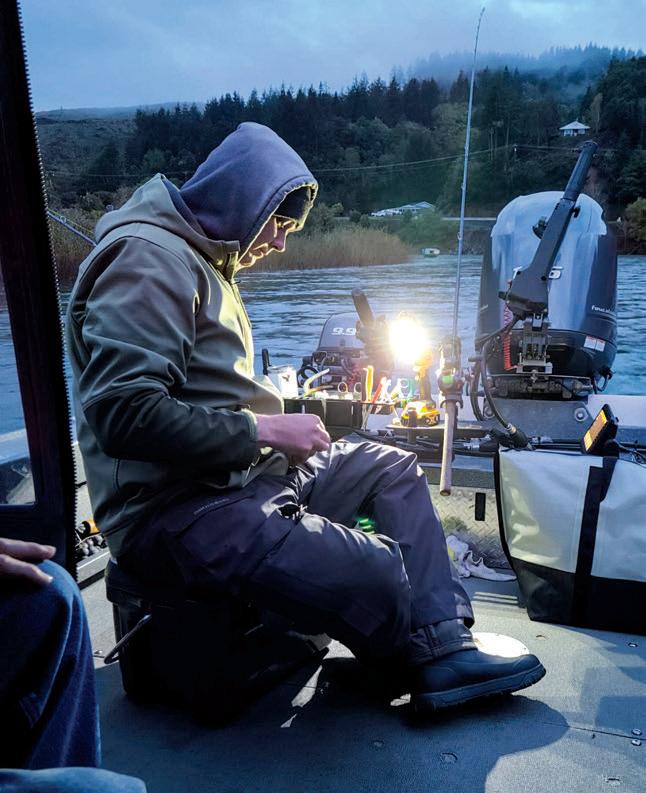
warm the Rogue, which can stall migration.
Because you’re targeting moving spring Chinook, plunking/still fishing is the most productive angling method on the lower river. High runoff years, like last season, provide the best action. If the water is high or if it’s overcast, the fish will move all day long. If the water is low and clear, the best bite will likely occur during the low light periods of morning and evening.
FIRST BLOOD
Since it’s important to get a good anchor spot, our guide Hollinger had Eng and I meet him at 5 a.m. We passed under the bridge at nearly full speed using the moon,
boat headlights and Hollinger’s experience to guide us upstream. We’d gone no more than a few miles before we came off plane and anchored near shore in 5 feet of water.
It wasn’t long before a fat salmon yanked my rod down and streaked downstream as if he knew reaching the ocean was his best bet. Eng and Hollinger cleared the lines while Contaoi threw off the anchor buoy. Downstream and around the corner we went with the hefty Chinook determined to reach the Pacific and showing no signs of tiring. It did finally wear down, of course, enough for Hollinger to net the adipose fin-clipped keeper.
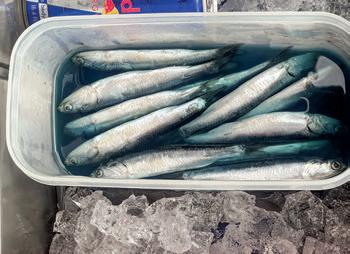
WHERE TO FIND THEM
Your best success for spring Chinook as they move through the lower Rogue will be found by anchoring in 4 to 6 feet of water. Seeking the path of least resistance, these fish travel along current edges and are known to cut across inside corners in areas where the river bends. Anchoring along current edges often means the current will be a flowing eddy on one side of your boat and run straight on the other.
If the water is high and off-color, fish will move even closer to shore and may be found in as little as 3 feet of water. If the water’s clear, try anchoring in 6 to 7 feet of water. Low water conditions can make the area just above tidewater the place to be. Likewise, high water will spread fish throughout the lower stretches.
WHAT TO USE
Without question, the top-producing setup for spring Chinook as they navigate the lower Rogue is an anchovy fished in combination with a small spinner blade. Our anchovies were rigged behind a 48-inch leader and held near bottom via a 17-inch weight dropper line extending down to a sinker.
The popular way to rig up consists of a trailing treble hook half-hitched on the end of a 30-pound-test leader via a figure-eight loop. A wire threader is then used to pull the looped leader end through the bait before reattaching the size 2 treble and placing it into the bait.
A size 2 single hook is snelled onto the leader via a slip-tie and placed up through the chin of the bait with the point of the hook embedded into the bait’s forehead before drawing the slip-tie up enough to place a bend in the bait so that it will spin.
Spinners and spinner/anchovy com-
66 Northwest Sportsman MARCH 2024 | nwsportsmanmag.com COLUMN
Hollinger rigs up freshly brined anchovy (top) in the early morning hours of author Buzz Ramsey’s trip to the Rogue last April. Anchoring in 4 to 6 feet of water next to shore is key for catching shortcutting springers. (BUZZ RAMSEY)

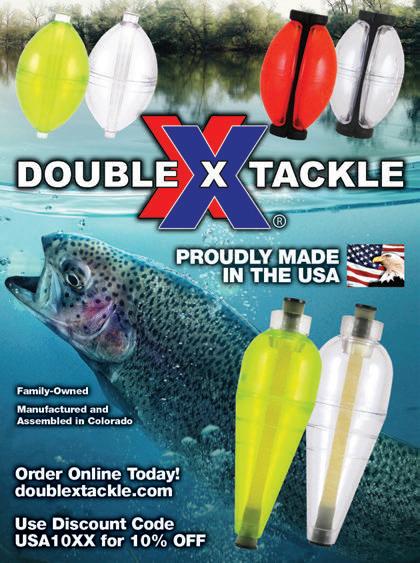
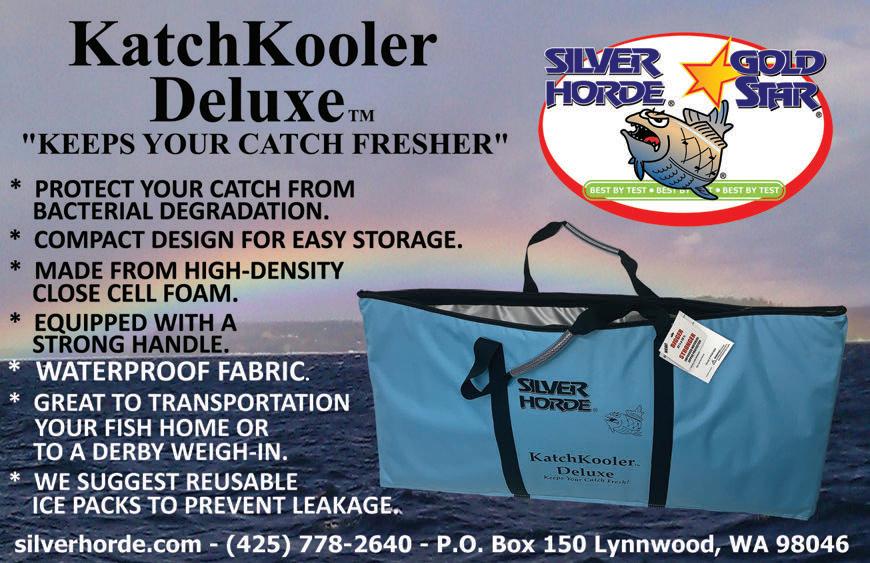
nwsportsmanmag.com | MARCH 2024 Northwest Sportsman 67


binations work best where there is straight-running current, while plugs might be the ticket when salmon are found navigating a flowing eddy. On one past trip to the Rogue, we found success by using a salmon-size Kwikfish on the flowing-eddy side of the boat and inside corners where the softer water wasn’t fast enough to make our blades vibrate.
Generally speaking, both spinner and anchovy setups are rigged using a spreader and 12- to 18-inch weight dropper line. Leaders vary from 24 to 36 inches for spinners to 40 to 50 inches with anchovy rigs.
To prevent leader twist, try rigging a swivel or swivel chain midway up your leader. Most anglers back bounce their outfits downstream from their craft 25 to 40 feet before placing them in a rod holder. Sinkers can range in size from 1½ to 6 ounces – it all depends on the speed of the current.
DROPPING THE PICK
If you take your own jet boat, keep in mind that you will need an anchor capable of holding your craft in what can be fast-moving water. A stainless steel kedge (rocking-chair style) anchor is what most anglers employ on the Rogue.
It’s critical to be able to position your boat in the migration lane the fish are using, so being able to chock over via bow cleats is important. Some veteran guides and anglers will set two anchors the same distance out in combination, positioning them 20 to 40 feet apart so that they have total control over the diagonal position of their craft. Doing this will allow you to
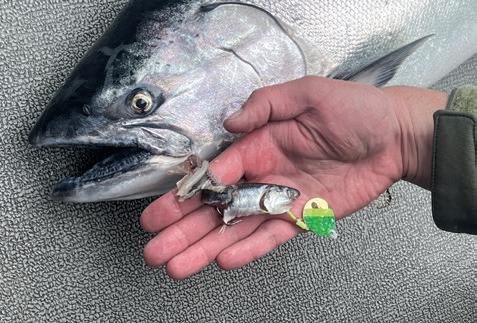
68 Northwest Sportsman MARCH 2024 | nwsportsmanmag.com COLUMN
Fred Contaoi of Douglas Outdoors fishing rod fame gets ready to bonk one of the hatchery fin-clipped Chinook he caught. (BUZZ RAMSEY)
An anchovy rigged to spin in combination with a spinner blade is what is popular on the lower Rogue. Popular blade colors include genuine gold, copper, 50/50 brass/nickel, and combinations of mostly chartreuse and fluorescent green, sometimes painted with some amount of nickel, gold or copper visible on the front of the blade. (BUZZ RAMSEY)
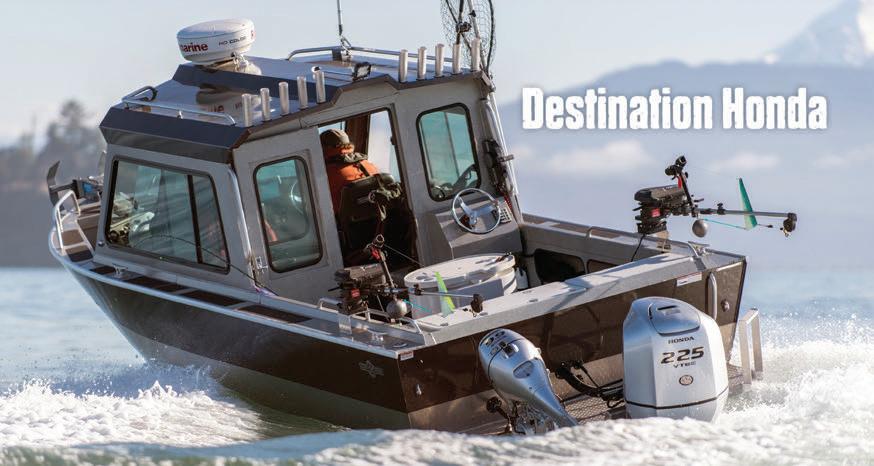


OREGON
CULVER
Culver Marine (541) 546-3354
www.culvermarine.com
FLORENCE
Y Marina
(541) 590-3313
www.ymarinaboats.com
PORTLAND Sportcraft Marina, Inc. (503) 656-6484
www.sportcraftmarina.com
WASHINGTON
CHINOOK
Chinook Marine Repair, Inc. (800) 457-9459 (360) 777-8361
www.chinookmarinerepair.com
MOUNT VERNON
Tom-n-Jerry’s Boat Center, Inc. (360) 466-9955
www.tomnjerrys.net
TACOMA
Tacoma Boat Sales & Service (253) 301-4013
www.tacomaboatsales.com
nwsportsmanmag.com | MARCH 2024 Northwest Sportsman 69
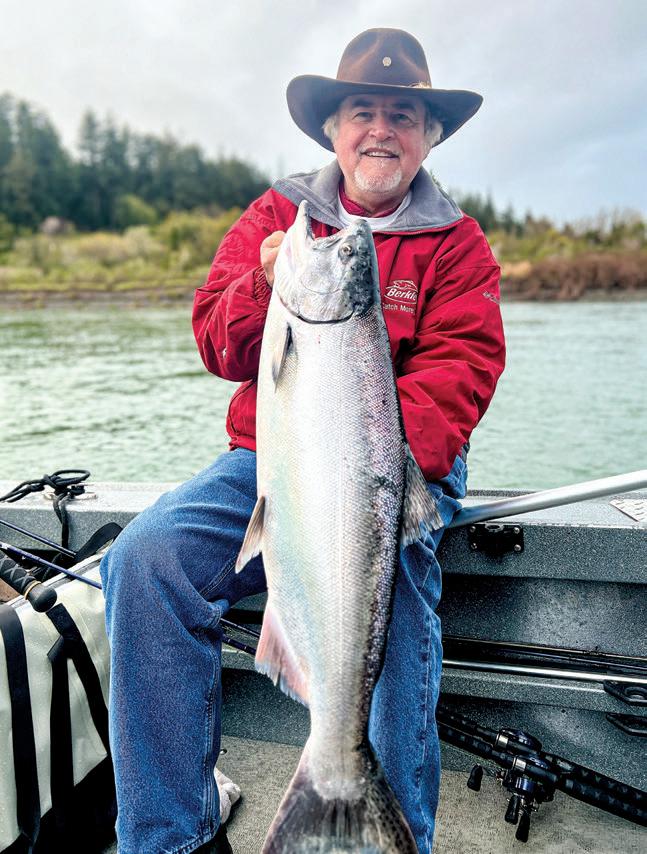
TACKLE & INFO
Rogue Outdoor Store (541-247-7142) is the main fishing tackle store in Gold Beach, located at the mouth of the river, and offers fishing tackle and advice. And here is a list of a few guides you might try:
Pat Hollinger: (541) 556-5128
Codie Paul: (541) 660-0504
Brandon Hiatt: (541) 539-1001
Phil Tripp: (541) 613-8754
Bill Divens: (530) 941-2398
reposition without reanchoring until you find the migration lane the fish are using.
BANK FISHING
If you’re a bank angler, the lower Rogue offers access and decent opportunity for success. Try plunking along one of the numerous gravel bars along the lower river.
The most popular lure is a size 4 Spin-NGlo rigged on a 24- to 27-inch leader. You’ll need a selection of 3- to 6-ounce sinkers to hold bottom. You can fish anchovies in combination with a spinner blade by hold-
ing your offering off the bottom by rigging a small cork float 12 inches up the leader from your bait.
TIMING A TRIP
Although the fishing won’t really take off until mid-April (our trip last year was during the third week of April), with the fishery peaking in May, now is the time to plan a trip to the Rogue, which, unless you take your own boat, might involve booking a date with a fishing guide, along with a place to stay. Keep in mind that it takes about six and a half hours to drive from Portland to Gold Beach.
What might make this already great two-hatchery-fish-daily-limit fishery especially good this year is the fact that the Pacific south of Cape Falcon was mostly closed to the catching of Chinook last season. As you might guess, reduced ocean harvest can mean more fish returning to rivers.
You should also know that since 2017, a portion of the Rogue spring Chinook produced at Lost Creek Hatchery are now released into the lower river and, as such, enjoy better survival, according to state fisheries biologist John Weber (541-247-7605). In addition, what many anglers believe and biologists think is possible is that the hatchery fish from these releases are lingering in the lower river for a longer time period when returning. If true, this increases their exposure to the lower river sport fishery.
May is the peak month for catching springers on the lower river. And although the fishery near Gold Beach will taper off in June, there is less competition from other anglers during the later portion of the run, as many will follow the fish as they migrate into the upper river, near Grants Pass and Medford, where back bouncing salmon egg clusters in the deeper holes is the dominant fishing method.
As of this writing, I’m already planning another visit to the lower Rogue and you should too, which is why I’m writing about this spring Chinook fishery well before it starts. NS
Editor’s note: Buzz Ramsey is regarded as a sport fishing authority, outdoor writer and proficient lure and fishing rod designer. As such, fishing rod manufacturer Douglas Outdoors has added Buzz to their pro staff.


70 Northwest Sportsman MARCH 2024 | nwsportsmanmag.com COLUMN COLUMN
Ramsey shows off the first of two hatchery springers he was able to keep on the first day of his two-day fishing adventure. (BUZZ RAMSEY)





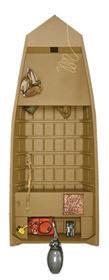

Thoughts On Umpqua Spring Kings, Or, What Awaits Us?
FOR THE LOVE OF THE TUG
By Sara Potter

Iam baffled at the uncertainty spring Chinook in my watershed face. I question some folks’ perspectives – how they see things, how they share it, as well as the light of day these narratives are given!
That’s what really blows my mind! I honestly feel like a false light is being used in order to shade the true light that we should be seeing. I feel that many people nationally and locally are unaware of the actual history of our Umpqua springers.
The heart of these fish is the North Umpqua. That river is as strong as it is cold, historically providing the right water temperatures to not only house returning adult springers for months upon months before they spawn, but to incubate the fertile eggs these incredible fish lay as well.
Considering the massive destruction that 2020’s Archie Creek Fire caused to the core spawning grounds of spring Chinook, I can’t fathom how we can say we are closing retention of wild fish on the North Umpqua in the same breath as we point to low runs on the South. If we are going to do so, let us be real about the fact
the habitat and the hatchery on the North have been decimated and South Umpqua springers are limited by other factors.
Mother Nature is hard at work purging herself of what remains after the fire and she will not stop until she has a clean slate. This winter’s massive rains are proof she’s tired of waiting for us to clean her up. But even if, say, she does flush out all that rubble, the silt is still widespread, the trees are gone and the fish will need a healthy creek bed, just as they need a healthy flow, just as they need the shade of the trees. This is the habitat that is in dire need of some federal grants and manpower.
Habitat restoration is literally critical to the survival of all Umpqua spring Chinook, and yet light is dishonestly being cast upon South Umpqua springers. Why? Is it that they don’t want us to focus on what’s really happening to this one-of-a-kind run? Not only did Pacific Power torch our watershed’s vital forest, they burned our entire spawning grounds and hatchery to the ground. Why didn’t the Oregon Department of Fish and Wildlife join in the lawsuit against Pacific Power when they were responsible? Look away from the real problems and create illusions of problems instead. Then sick the activists

At some point early this
72 Northwest Sportsman MARCH 2024 | nwsportsmanmag.com
year, the National Marine Fisheries Service will make a determination about whether an Endangered Species Act listing is truly warranted for Umpqua spring Chinook (and other king stocks along the Oregon and Northern California Coasts), but author Sara Potter feels that people are being misled about South Umpqua springers, which have never been a strong run, long-term snorkel survey data shows. (SARA POTTER)

nwsportsmanmag.com | MARCH 2024 Northwest Sportsman 73 COLUMN
COLUMN

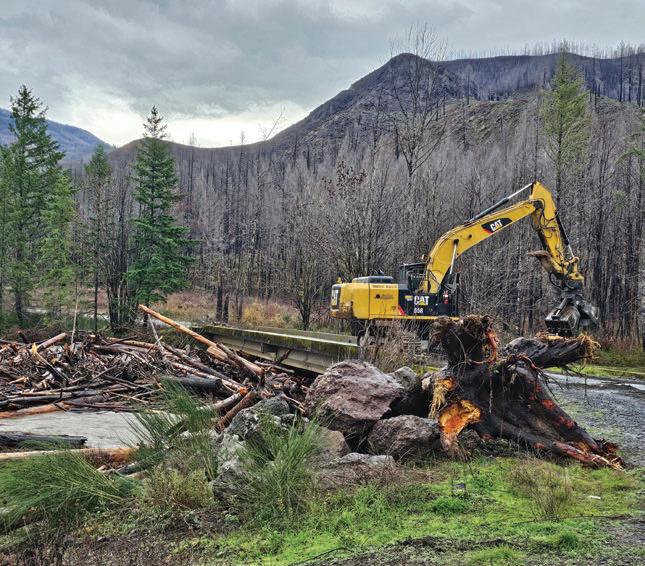
on it; that’s easier.
WITH THOSE THOUGHTS
running through my head, I thought about things some more. And the more I thought about a small return of springers on the South Umpqua, the more I realized I better research this mysterious stock because, honestly, I had never heard of them until reading last December’s ODFW news release announcing the 2024 Umpqua wild spring Chinook harvest closure and a fall article from Jefferson Public Radio headlined “Very few spring Chinook salmon returning to South Umpqua River.”
Considering that I won’t even let my children stick their toes in the South Umpqua past June – just like my parents before me with my sisters and I – I was shocked to learn that that semistagnant, pond-like water could provide what is needed for Oncorhynchus tshawytscha, period! The South Umpqua has never been cold.
But from what else I have been able to find, I see the fish do exist there and what’s more, biologists have been performing snorkel counts on this small stock since at least 1973. Between 1973 and 1984 there was never more than 100 South Umpqua springers, even with 11,431 wild fish returning to the North Umpqua in 1973. Some years in the late ’70s and early ’90s saw fewer than 50 wilds. In the 51 years we have been counting these fish, the biggest run was about 700, a spike seen once in the mid-’90s.
When I look at the data and know the rivers like I do, it’s clear that the South Umqpua springer run is intended to be small. As for the North, at least prior to the fire, it always returned a fair amount of both wild and hatchery spring Chinook – thousands of fish. The hatchery program began in 1950 and year after year, both wild and hatchery fish have returned. The North’s cold river is meant to house a plentiful run. It had the habitat those fish need.
Of those I’ve spoken to recently regarding these elusive South Umpqua springers, none had ever heard of them, but after learning about them they had their theories as to why the fish wandered up the wrong river in the first place. No

74 Northwest Sportsman MARCH 2024 | nwsportsmanmag.com
The North Umpqua boils through basalt before 2020’s massive Archie Creek Fire destroyed huge swaths of the watershed. Potter reports that this bridge over Rock Creek (below) is usually 30 feet above the water, but as the tributary “purges” itself of debris, it might have been wiped out had it not been for crews and their heavy equipment. “The forest is just letting go on a massive level this winter,” she reports. (SARA POTTER)
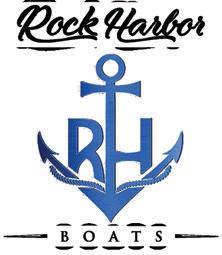

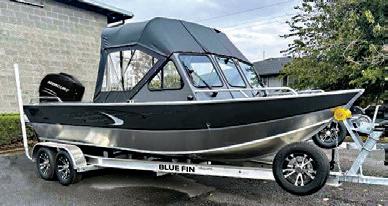






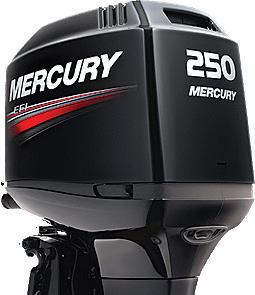


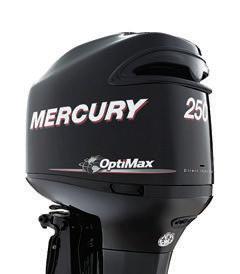
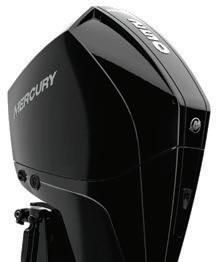

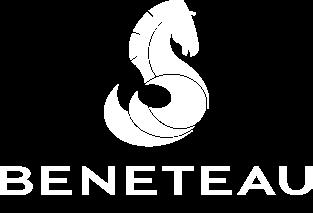
 Antares 7 Fishing
Antares 7 Fishing
Call or visit our website (425) 481-6934 rockharborboats.com Rock Harbor Boats 13410 NE 175th Street • Woodinville, WA SERVICE • SALES • PARTS NEW • USED • CONSIGNMENT
Boulton Navigator
Boulton Sentinel Pro
Boulton Hook
— FINANCING AVAILABLE — PACIFIC NORTHWEST MERCURY REPOWER CENTER
Antares 8
matter how much water we shut down, that habitat was never intended to house a massive run, nor do I believe it will see much more than a couple hundred fish on average, given the long-term counts.
Yet if you read the JPR article and had no true knowledge of this watershed or spring salmon in general, it would be easy to feel sorrow for the illusion of a oncethriving run of South Umpqua springers and hop on board the endangered species bandwagon. Sadly, I think that’s why such articles are published – to shed light in the wrong direction. To promote agendas more so than truth. If the National Marine Fisheries Service is going to add Oregon Coast Chinook as well as those in Northern California to the list of federally endangered species – a decision on whether that is truly warranted is expected any day – then they need a stronger narrative. This one isn’t sticking. I pray whoever is in charge is not bought out behind closed doors, because there is no good merit behind such rash and unreasonable requests.
THESE FISH ARE resilient, but with such a loss up the North Umpqua’s Rock Creek and no major restoration efforts taking place, we sadly will see a true decline of these fish. The grade of fish and their numbers have declined significantly over the past 20 years. Just in the past 10 years that I have been fishing the rivers, the banks have sadly gone from a get-thereat-2:45-a.m.-to-get-your-spot sh*t show springer rodeo to now you can basically show up at daylight because there are so few fishermen anymore. It’s sad to see the loss of love so many once felt for these fish. It’s almost like North Umpqua springers have been forgotten by most in the last handful of years.
My brother-in-law Kyle Anderson was a devoted spring Chinook fisherman through the ’90s and early 2000s and I was always so intrigued by the fish he brought home. I would hold his light as he fileted his massive harvest, not realizing what I was missing. I would skip school and head upriver, sitting on the rocks watching them catch giants, not knowing then that I too was a fisherman.
Kyle Anderson, Potter’s brother-in-law, holds a pair of nice spring Chinook he caught from the Umpqua system before quitting the fishery as it began to decline.
“It was a good time to be a fisherman,” she notes of Anderson’s days on the river. Only hatchery springers may be retained on the mainstem and North Umpqua this season due to a low wild forecast, state managers announced back in December. (SARA
POTTER)
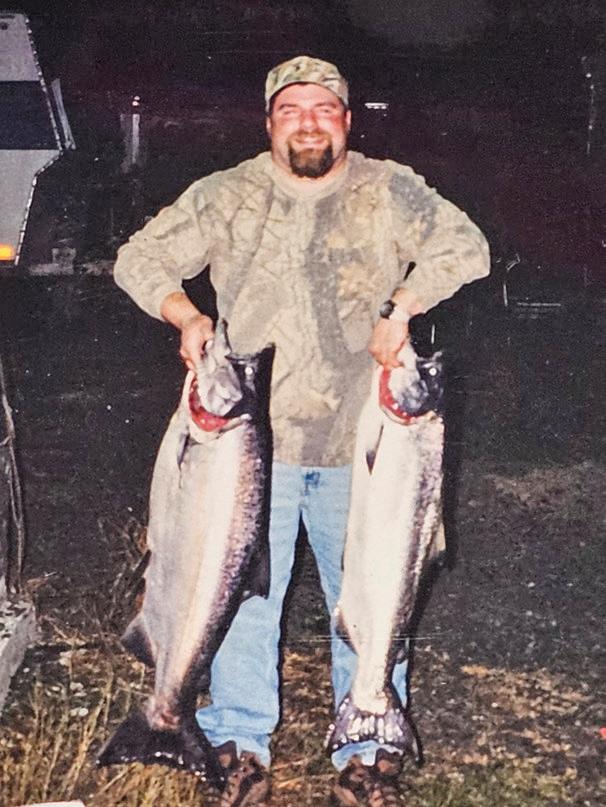
But by golly, watching he, his friends and those springers stack up was impressive.
As numbers declined and the grade of fish changed, Kyle accepted it. He didn’t want to let the fishery go, but he felt he really didn’t have much choice. When he hung up his rods, there still were miles of men trying to fight their way to the banks in pursuit of these fish. He said it took the joy out of fishing and he eventually stopped going.
I have never been blessed enough to catch fish of that magnitude in this past decade, but I remember them. They were huge and men tagged out regularly. It
was a good time to be a fisherman. When I think back to that era I can’t help but cringe, as I know what I have witnessed this past decade and feel mildly ill as I wonder what awaits us.
Simply taking away fishing won’t bring the fish back. Nor will adding all Oregon Coast Chinook to the Endangered Species Act. It takes work to bring the fish back. Highlighting the supposed story of South Umpqua springer “decline” is too easy and has no merit. Put in some real work and spare us of this hypocritical nonsense. My heart is on the river and I couldn’t change it, even if I tried. NS

76 Northwest Sportsman MARCH 2024 | nwsportsmanmag.com
COLUMN


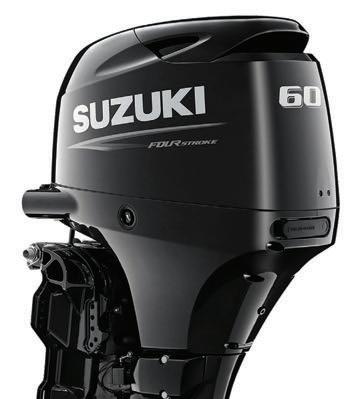
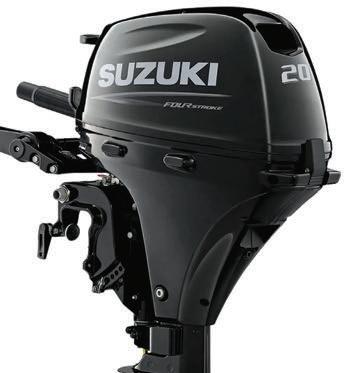






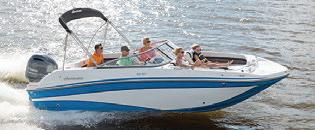

SALES & SERVICE LOCATED RIGHT ON THE WATER — 8141 WALNUT ROAD NE • OLYMPIA, WA 98516 360-491-7388 • PUGETMARINA.COM QUALITY BOAT SALES AND SERVICE EXCELLENCE FOR OVER 50 YEARS! SERVING OLYMPIA, LACEY, TUMWATER, SHELTON, TACOMA, SEATTLE AND BEYOND ALL MODELS ON SALE NOW! SUZUKI REPOWER SALE CALL FOR PRICING ON YOUR BOAT Winner of Suzuki’s Top Service Award 7 Years In A Row!

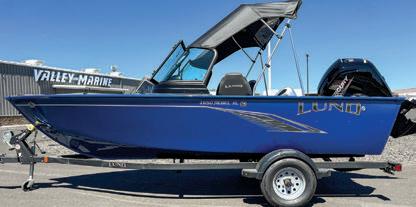


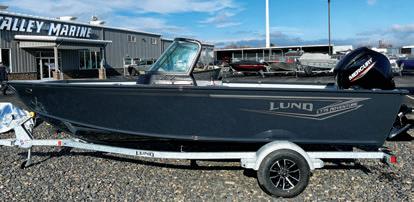

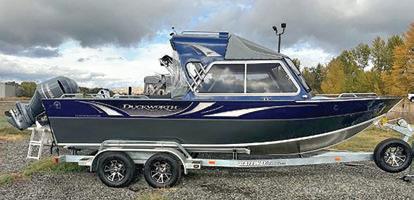

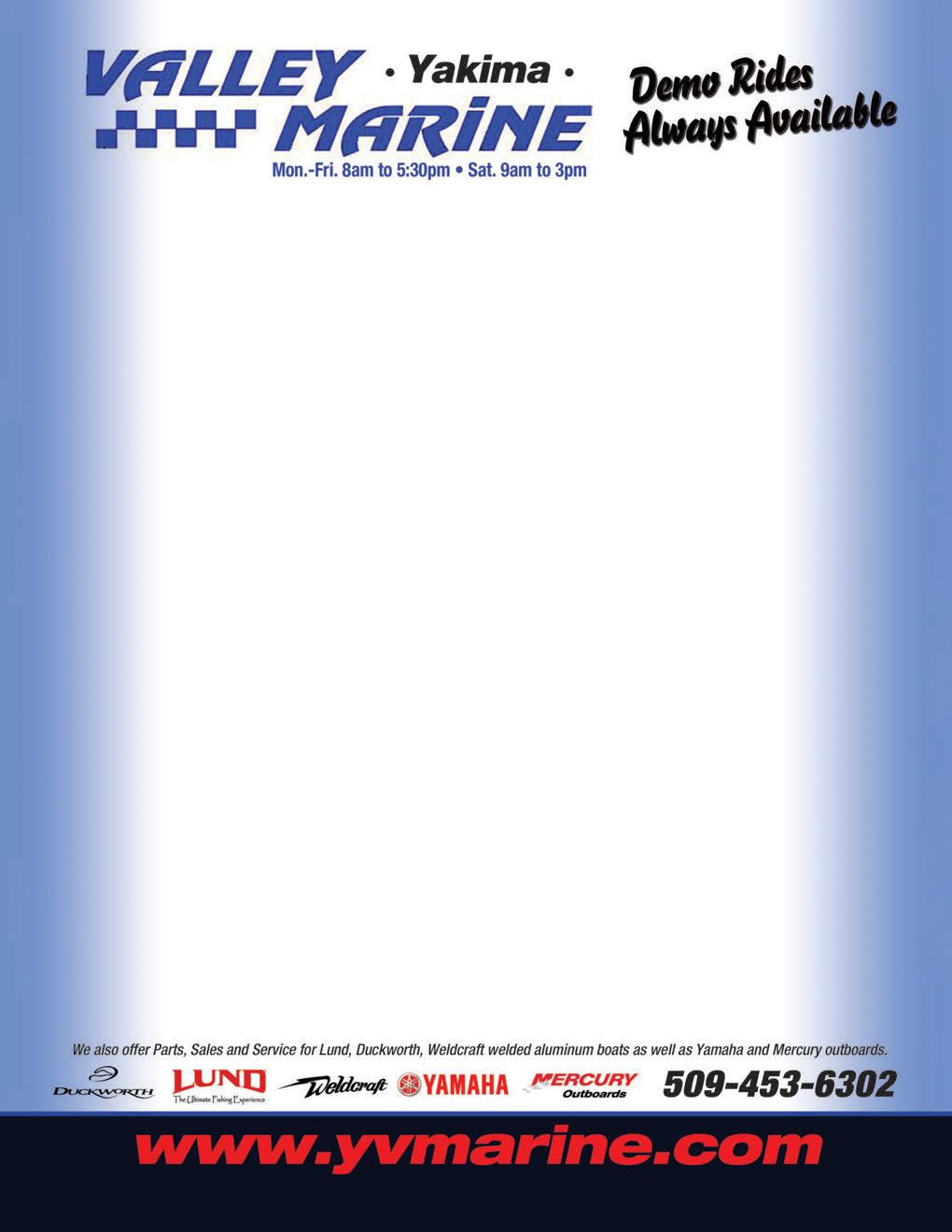





UNION GAP Demo Rides Always Available! 2024 North River 228 Pursuit New model for 2024. Mercury 300 XL Pro XS Motor, Hydraulic Steering System, Boarding Ladder, welded 2 step with welded grab handle vertical (starboard), Deluxe Top Gun canvas folding top with side and back drop curtains, storage boot and bag, wash down with spigot, hose, thru-hull pick up and valve, Plus lots more. Call, text or email for current pricing and availability. 2023 Duckworth 18 Advantage XT Powered by Yamaha 115hp, bow box with livewell, integrated tiller kicker bracket, bow mount pre rig, and more. 2023 Weldcraft 210 Revolution Yamaha 200hp 4-stroke, Partial Hard Top with Gullwing Door, Washdown, Dual Wipers, Boarding Ladder, Suspension Seats, Rear Bench to Bed Seats, and More. CONTACT US FOR SPECIAL CLOSEOUT PRICE! 2023 Duckworth 22 Pacific Navigator Hard Top Yamaha 250hp 4-Stroke Motor Yamaha 9.9hp Kicker with Controls at Helm, Two Tone Paint Daytona Blue/Storm Gray, Full Fisherman Interior, Transom Livewell, Full Hardtop with Gullwing Door, Rear Facing LED Lights, Washdown System, Plus More. 2023 Lund 1650 Rebel XL All Cobalt Blue Boat, Complete Vinyl Floor, Mercury 90elpt, Aluminum Prop, Bunk Trailer Lundguard Black, Tilt Steering Upgrade With Seat Slider, Boarding Ladder With Platform - Starboard, Sport Top w/walkway Curtain, 24v Upgrade 2024 Lund 1775 Adventure Sport Complete wood-free construction, Mercury 90HP Motor, New consoles, backlit switches, Tilt Steering, Pro Ride Seats, Redesigned port side tackle storage, 2-tier center rod locker, livewell, Multifunction Gauges, Bunk Trailer Galvanized, Wheel Upgrade, Top Hider, Sport Top. $29,995 1 ONLY! $4000 REBATE! $49,995 1 ONLY! Newly Redesigned


Salty Chinook
Late winter and early spring still offer opportunities to fish for blackmouth off Seattle, Tacoma and Sekiu, and here’s where to go – just don’t delay.
By Mark Yuasa
As the days get longer and winter fades away, March and April mark the beginning of several marine salmon fisheries in the western Strait of Juan de Fuca and Puget Sound.
The first waters scheduled to
open for winter Chinook, commonly referred to as blackmouth for their dark gumline, are central Puget Sound’s Marine Area 10 and South Sound’s Area 11 on March 1. Word on the street is that if you intend to go fishing, be sure to do it sooner than later.
You may ask, what’s up with the
urgency?
That is because the Washington Department of Fish and Wildlife manages these fisheries by Chinook catch quotas, guidelines related to impacts of wild unmarked fish encounters or sublegal catch rates. As seen in past seasons, this can lead to a marine area shutting down sooner
nwsportsmanmag.com | MARCH 2024 Northwest Sportsman 79 FISHING
Blackmouth options in Washington’s inside waters are far fewer than in days not far gone by, but this March and April offer chances to catch feeder and early migrating Chinook, including off Sekiu, where this one was landed in early spring 2022. (CHASE GUNNELL, WDFW)
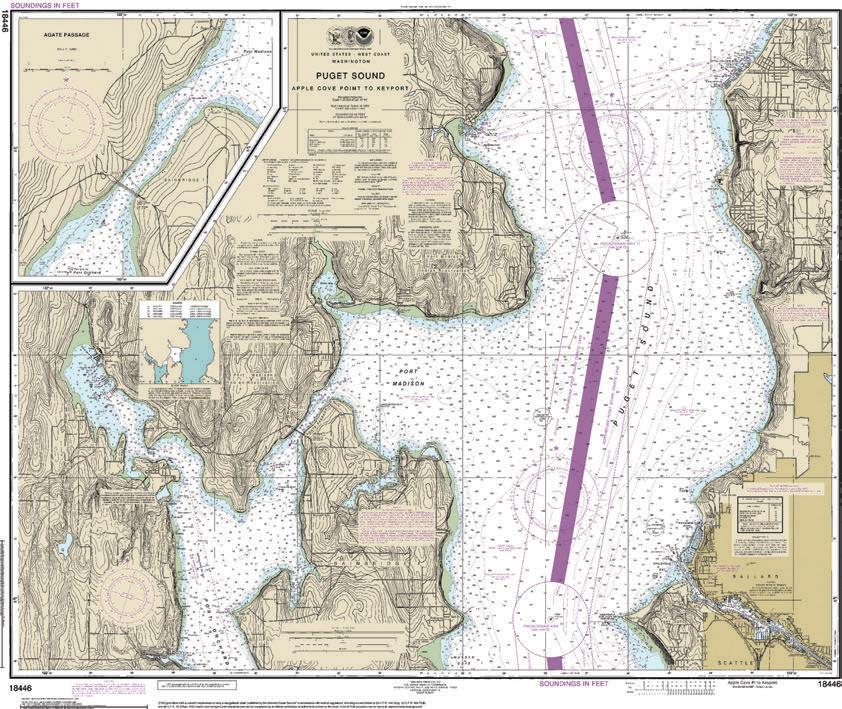
Working the bottom along Jeff Head, President Point and Richmond Beach on either side of tide change are good plays for Area 10 kings in winter. (NOAA)
than expected.
With that in mind, as of print deadline for this publication, Areas 10 and 11, which stretch from the Apple Cove-Point Edwards line south to the northernmost Tacoma Narrows Bridge, are set to be open through mid-April.
However, WDFW’s Puget Sound sportfishing advisory board in early February made a recommendation to go to four- (Wednesdays through Saturdays) or three-days-per-week (Thursdays through Saturdays) format to slow down the harvest and encounter rates and extend the season as long as possible. This change

would also allow fishery managers to assess catch on a weekly basis to gauge what remains in the pot to reopen a given area. Anglers should check the emergency rules section on WDFW’s website (wdfw.wa.gov) for the final season structure.
In Area 10, the cutoff criteria are 4,953 total Chinook encounters, 953 unmarked encounters and 4,181 sublegal encounters. In Area 11, those marks are 1,191 total Chinook encounters, 259 unmarked encounters and 816 sublegal encounters. You can find the seasonal Puget Sound salmon fishery guidelines and quotas at
wdfw.wa.gov/fishing/reports/creel/ seasonal#ps-winter-chinook.
In the past, these fisheries used to be open daily starting in early January, when an abundance of sublegal fish – Chinook under the 22-inch minimum size limit – were caught and released. This eventually led to areas closing much sooner than anticipated. Smaller fish were commonplace in January, especially at Jefferson Head and other northern portions of Area 10.
To help reduce sublegal Chinook encounters, fishery managers shifted the opener into March or April, when many of the smaller-sized
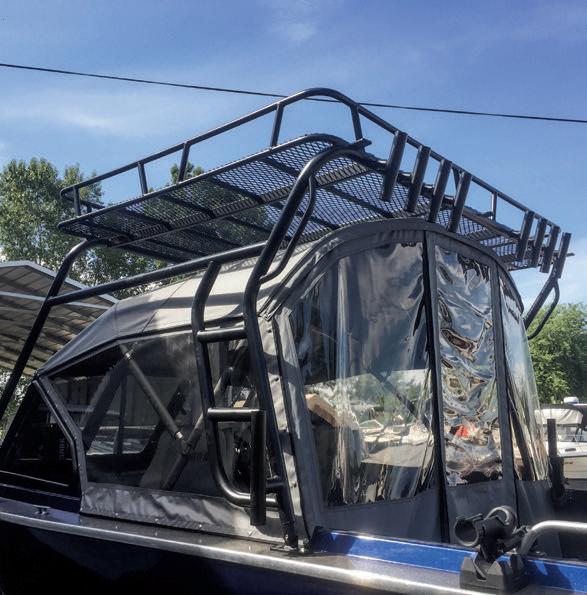
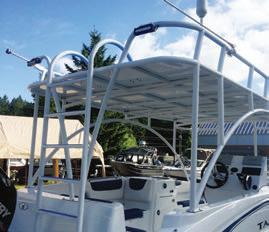
80 Northwest Sportsman MARCH 2024 | nwsportsmanmag.com FISHING




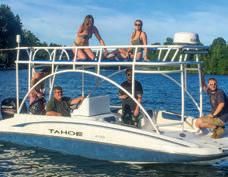
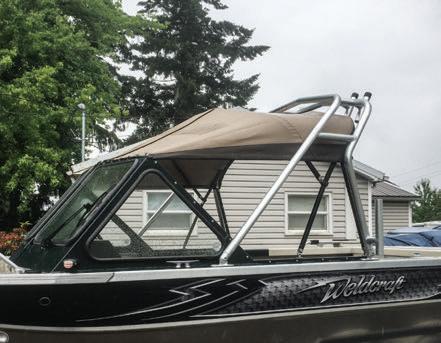
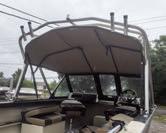

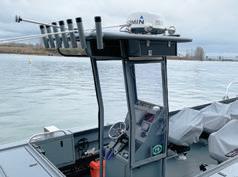
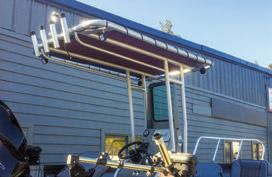
Transform your boat. T8 UTILITY TOWER T6 FISH & WAKE TOWER T7 FISH & WAKE TOWER BAREWEST HAS EXPANDED OUR CUSTOM PROJECT CAPACITY WWW.BAREWEST.COM (503) 620-2195 18707 HWY 99E, HUBBARD, OR 97032
fish had moved out to other areas of Puget Sound.
FROM NORTH TO south, here are top spots in Marine Areas 10 and 11: Jefferson Head/Kingston: The vast underwater sandy shelf at “Jeff Head” is about 2 miles wide and wraps around two key landmarks known as President Point to the north end and Point Jefferson to the south. Look for baitfish on the sandy bottom in water 90 to 200-plus feet deep. Kingston has a deep underwater bowl that extends out about a mile from the shoreline just east of the ferry landing. By boat it is about 4 to 8 miles from the Shilshole Bay and Edmonds Marinas.
Edmonds Oil Dock to West Point: The Meadow Point green buoy area located just north of the Shilshole Bay Marina and West Point to the south are two prime locations. Areas along the northeast side of the
West Point Lighthouse can be good at depths of 80 to 150 feet. With its gentle-sloping, mostly sandy bottom, the entire shoreline from Richmond Beach south to Carkeek Park can be worthwhile if baitfish are present. Also, don’t overlook the Edmonds Oil Dock just north of Richmond Beach.
East side of Bainbridge Island: There are a fair number of areas to try around “the rock,” including Point Monroe on the northeastern side of the island, off Fay Bainbridge Park, Skiff Point, Yeomalt Point, Wing Point and Restoration Point. Numerous nameless dropoffs and shelves also dot the entire east side of the island, so be willing to try out unchartered waters.
Allen Bank near Blake Island: This is a relatively easy place to fish and the outgoing tide is the best period. The dropoff ledge (90 to 250 feet
deep) starts on the southeast side of Blake Island and extends south to the northwestern tip of Vashon Island near the black and white channel marker. The area right off the Vashon Island ferry landing is another place to wet a line.
Southworth and Manchester area: The outgoing tide is best at Southworth and the dropoff (90 to 250 feet) starts near the ferry landing and heads in a northerly direction along the row of houses dotting the shore. On a flood tide, work south of the ferry landing while drifting into Colvos Passage’s eastern shoreline. At Manchester, try off the fuel dock in 90 to 150 feet of water; the sandy bottom gently slopes off with no distinct ledge or dropoff points.
Point Defiance Park in Tacoma, south side of Vashon Island and Gig Harbor: The Clay Banks off Point Defiance Park’s northwest side to Owen Beach

82 Northwest Sportsman MARCH 2024 | nwsportsmanmag.com
FISHING
April might present Washington Chinook chasers with a conundrum: Battle the fleet on the Lower Columbia for springers, or slip out to Sekiu for similar-sized salmon and less competition? (CHASE GUNNELL, WDFW)
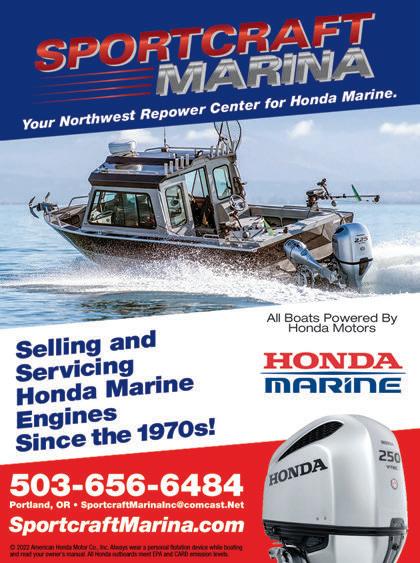
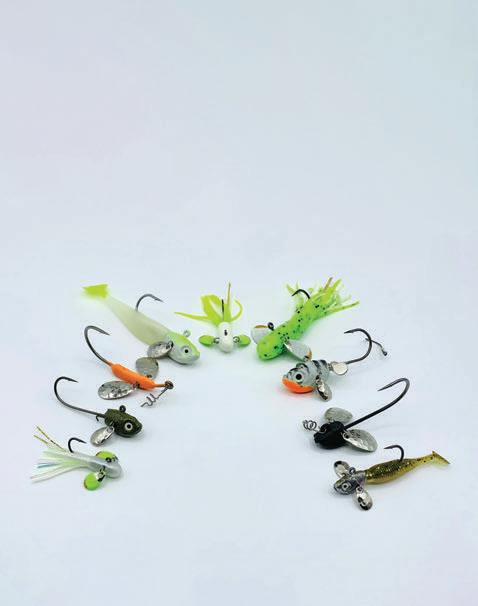






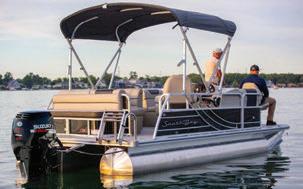



nwsportsmanmag.com | MARCH 2024 Northwest Sportsman 83 sculpin tubes and jigs generate bites from creating subtle flashes and movements from the jig’s innovative pectoral fins opening the fins by dropping the jig only a few inches keeps you in the zone and stimulates strikes made in palmer, alaska, these jigs are designed to be alaska tough ColumbiaRiverTackle.com 111 N. Kittitas St. Ellensburg, WA 509-925-1758 • M-F 9-5pm inlandboatsandmotors.com INLAND BOATS & MOTORS SERVING YOU SINCE 1975

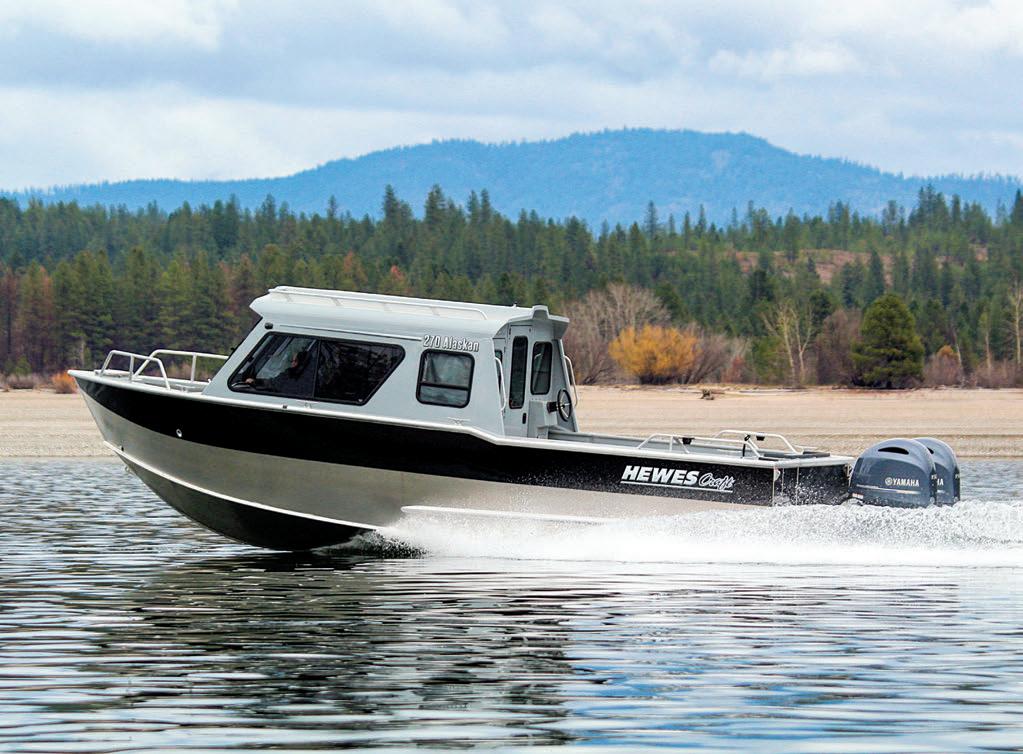
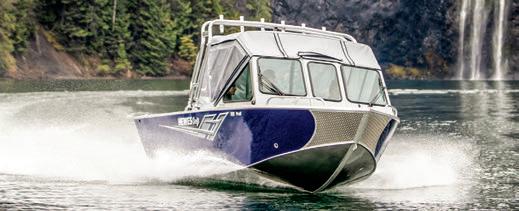
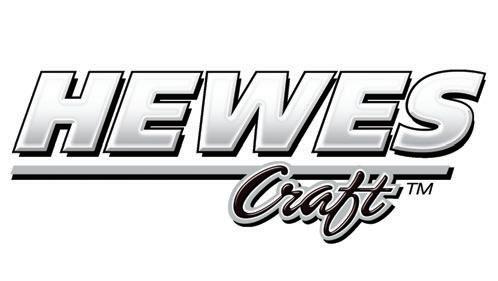





Your Complete Hunting, Boating, Fishing and Repair Destination Since 1948. 5TOP DEALER 2023 1-877-426-0933VERLES.COM
















VERLES.COM WE OFFER A LARGE INVENTORY OF QUALITY BRANDS 1-877-426-0933
is usually where anglers head on an outgoing tide. On the incoming, run across to Point Dalco on the southwest side of Vashon or just outside of Quartermaster Harbor. The “flats area” outside of Gig Harbor is another favored location.
FURTHER AFIELD, SEKIU opens on – no foolin’ – April 1 for winter Chinook. The Marine Area 5 season is expected to remain open daily through April 30, but could close sooner if the 3,707 sublegal Chinook encounter
guideline is achieved.
This delayed opener for Sekiu occurs at a time when larger-sized Chinook are known to be present. Fish range from 5 to 13 pounds, with a few hitting 15 to 20-plus pounds. Inside this mix of different size Chinook, it’s not uncommon to find bigger 3- and 4-year-old fish, including a few migratory fish.
One reason for a Chinook’s speedy weight gain is the species’ ability to gorge on abundant schools of candlefish and herring, and in
late winter/spring, these salmon are known to move in from their ocean feeding pastures or shift out from Puget Sound into the western Strait of Juan de Fuca. This is a period when Chinook begin to sexually mature and migrate back to natal waters later in summer and fall.
Access to the salmon fishing grounds off Sekiu is relatively close, starting at the place called the “Caves,” which is located around the corner of the Mason’s Resort breakwater.
Start off of the breakwater’s
TOP WINTER CHINOOK FISHING TIPS
Find the forage, find the kings: Many winter Chinook are delay-released from hatcheries and spend their entire lives in Puget Sound or the Strait of Juan de Fuca, feeding on herring and candlefish (also known as sandlance), two of their primary food sources. Locating baitfish schools is key to finding Chinook, as they’re voracious feeders and tend to follow the parade of herring and candlefish.
Target the tides: Unlike with their migrating cousins in summer, the winter Chinook bite centers around outgoing or incoming tides. This means you don’t need to be out fishing at first light like you’d normally do in the summer. Time your efforts to the hour before and after tide changes. Winter Chinook are a little more predictable location-wise, so knowing where they’ll be at a certain time of the day during a specific tidal exchange will raise the bar on success.
Best fishing tactics: There are three main techniques when it comes to winter Chinook fishing.
Downrigger trolling allows you to cover a lot of area, especially when schools of baitfish can be sparse or scattered. Deploy a plastic squid, plug, spoon or cut-plug or whole herring (be sure to add scent attractant) with a flasher or dodger and clip your mainline in so it runs 8 to 20 feet behind a 10- to 15-pound downrigger ball. The weight

of the ball is dictated by the current and how deep you plan to fish, but should be heavy enough to get your presentation bouncing right off or near the bottom.
Drift or motor mooching with herring, anchovy or a candlefish is the old-school method developed right here in Puget Sound more than a century ago. It involves using a cut-plug or whole herring and working it up and down the entire water column. A 6- to 10-foot leader tied to two 2/0 or 3/0 barbless hooks is attached to a 3- to 6-ounce banana weight. The weight size depends on the wind and current, but keeping a 45-degree line angle is critical. Those who mooch will often back up their boat to keep the right line angle.
Jigging has caught on and is a proven technique. Jig weight size depends on current and wind, but keeping a variety of jigs from 2 to 6 ounces should cover all aspects. Without keying in on brandspecific names, pack along jigs that simulate candlefish or herring. Color is personal preference, although white/glo is the top pattern to keep in the tackle box. As a reminder, take off the storebought illegal treble hooks and add 2/0 and 3/0 barbless-style hooks to your jig.
Stick to the deck: Winter Chinook often stay near or right on the bottom to prey on their feed, so bouncing your presentation right in front of them will likely lead to more hookups. This doesn’t necessarily mean you won’t find fish in all areas of the
water column. Depending on the location of baitfish, moochers or jiggers should be sure to keep their jig or bait moving from bottom to top, while downrigger trollers need to try a variety of depths.
Map it: Be sure to invest in bathymetric maps to know where dropoffs, ledges and underwater structures are located around Puget Sound. A tidal chart is also a good investment.
Ask for help: When you’re out on the water, keep an eye on what other anglers are doing or even ask them for tips and advice, as anglers are usually friendly and this could provide benefits in the long run.
Don’t overlook Area 13: Deep South Puget Sound, the waters south of the northernmost Tacoma Narrows Bridge, are open year-round for salmon. Fishing can be off and on during the first part of the winter season, but as we edge closer to March and April, action can pick up, especially when baitfish schools are present. Effort is usually centered around Fox Island off Point Gibson near the “Big Rock” during the incoming tide. Also head to Fox Point on the island’s northeast side during the outgoing; the bottom drops off sharply from 90 to 150 feet and Chinook can be found along the deeper ledges. The Fox Island public fishing pier – referred to as the “concrete dock” and located on the eastern shoreline – can be decent on a flood tide. –MY
86 Northwest Sportsman MARCH 2024 | nwsportsmanmag.com FISHING



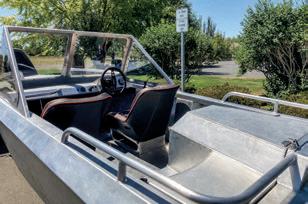




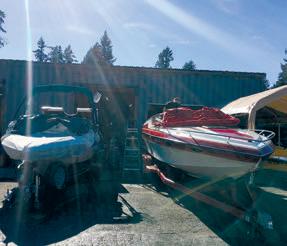
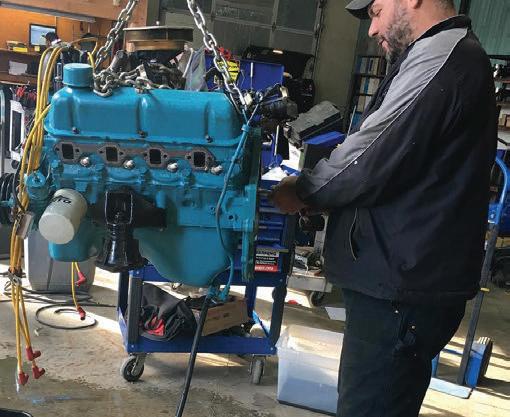
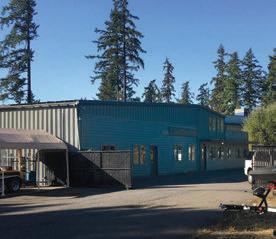
18707 OR-99E, Suite B Hubbard, Oregon 97032 We services all varieties of motors, engines & drive types with particular expertise in early model I/O’s. vulcanmarineservice.com 503-635-3626 FULL SERVICE BOAT & MOTOR REPAIR • MAINTENANCE • QUALITY SERVICE • COMPETITIVE PRICING Only 18 Minutes from Lake Oswego. BAREWEST BUILDS CUSTOM MINI JET BOATS USING JETSTREAM & SITKA ENGINEERING HULLS WE CAN WELD A BASIC HULL OR DELIVER A COMPLETE CUSTOM MINI JET BOAT - WHATEVER YOU CAN DREAM, WE CAN BUILD! CONTACT US FOR OPTIONS & PRICING 503-620-2195 • www.barewestminijetboats.com/mini-jet-boats BAREWEST IS NOW OFFERING CUSTOM BUILT MINI JET BOATS.
eastern edge in 90 to 180 feet of water during an outgoing tide. Depth is usually dictated by where the baitfish schools are congregating, and if you don’t find any feed, move to another spot. As is often the case, salmon can be found hanging near or right off the bottom, so keep your presentation bouncing off the deck.
Other options to the west include off Eagle Bay west to the Hoko River mouth near Kydaka Point. If the bite isn’t happening, head east around the green buoy off Slip Point, Mussolini Rock, the Coal Mine and Slide areas, or further east to Cod Fish Bay and Pillar Point.
CHINOOK AREN’T THE only choice around Sekiu. When the salmon bite wanes, switch over to targeting halibut, lingcod, black rockfish, kelp greenling and other bottomfish.
To the west of Sekiu, Marine Area 4 east of Bonilla-Tatoosh to the Sekiu
LONGTIME DERBY RETURNS
The Tengu Blackmouth Derby Board, which puts on one of the West Coast’s oldest salmon fishing tournaments, will host four to five “cracker derbies” on Saturdays in March or until Chinook season closes on Puget Sound.
Cost is $20 per person. Fishing runs from daybreak until 12 p.m. and marine areas that are open for salmon fishing are fair game.
There will be a shotgun start and the weigh-in will occur at the Armeni boat ramp in West Seattle. –MY
River mouth is open year-round for bottomfish, and from March 9 to October 19 for lingcod this year.
The western Strait in Marine Area 5 is set to be open daily for halibut from April 4 through June 30, and could be extended to late summer if enough remains in the catch quota.
Some boats based out of Sekiu will make the roughly 20-mile trek west to Neah Bay (Area 4), where halibut fishing is planned to be open May 2-4, 9-11, 16-18, 24, 26 and 30-31; and June 1-2, 6-9, 13-16, 20-23 and
27-30. The halibut season could close sooner if the catch quota is achieved before any of the end dates.
Check the WDFW regulation pamphlet or website for catch limits and restrictions for rockfish (including yelloweye) and other fish species. You can find rockfish info at wdfw.wa.gov/species-habitats/atrisk/species-recovery/rockfish. NS
Editor’s note: Mark Yuasa is a Washington Department of Fish and Wildlife communications manager and longtime local fishing and outdoor writer.

88 Northwest Sportsman MARCH 2024 | nwsportsmanmag.com
FISHING

OREGON
EUGENE
Maxxum Marine
(541) 686-3572
www.maxxummarine.com
PORTLAND
Sportcraft Marina
(503) 656-6484
sportcraftmarina.com
WASHINGTON
EVERETT
Performance Marine
(425) 258-9292
perform-marine.com
MOUNT VERNON
Master Marine Boat Center, Inc.
(360) 336-2176
mastermarine.com
SHELTON
Verle’s Sports Center
(877) 426-0933 verles.com
nwsportsmanmag.com | MARCH 2024 Northwest Sportsman 89



90 Northwest Sportsman MARCH 2024 | nwsportsmanmag.com ULTIMATE HALIBUT FISHING ADVENTURE! DIVE INTO THE BOOK YOUR ADVENTURE NOW 907-435-1600 HALIBUTCHARTERS.COM BEST OF CHARTERS
Back To Westport!
March’s second Saturday marks the start of rockfish and lingcod season out of Washington’s fishiest coastal harbor.
Story and captions by Jeff Holmes
In the 1970s, Washington’s commercial salmon fishery followed in the footsteps of all the world’s salmon fisheries since the 16th century (witness Alaska right now) and ate itself out of house and home. In response, many of the 700 or so commercial salmon boats in Puget Sound refitted with dragging gear and robbed the Salish Sea of its food chain. A robust bottom fishery comprised of pollock, diverse rockfish species and much more went from abundant to nearly completely gone. This sad story is one that endures. The Sound has still not recovered completely despite a decades-long closure on rockfish and conservative seasons and bag limits on lingcod and halibut. Ratfish and dogfish are the weeds that filled the empty lot created by dragging the inland seas.
The Sound’s fisheries have surely improved since the ’70s, and we are on a recovery trend, but Washington’s great remaining saltwater fisheries are mostly accessed out of our ocean ports. When the Sound crashed, most charter customers and many private boaters flocked to the coast and never left. To this day, thanks to the immensity of the ocean and mostly excellent management, Washington’s ocean ports offer excellent bottomfishing, salmon fishing and tuna fishing. On March 9, lingcod and rockfish reopens up and down Marine Areas 1-4.
Of the four amazing ocean fishing ports in Washington – Neah Bay, La Push, Westport and Ilwaco – nothing touches Westport in terms of its accessibility and excellent charter
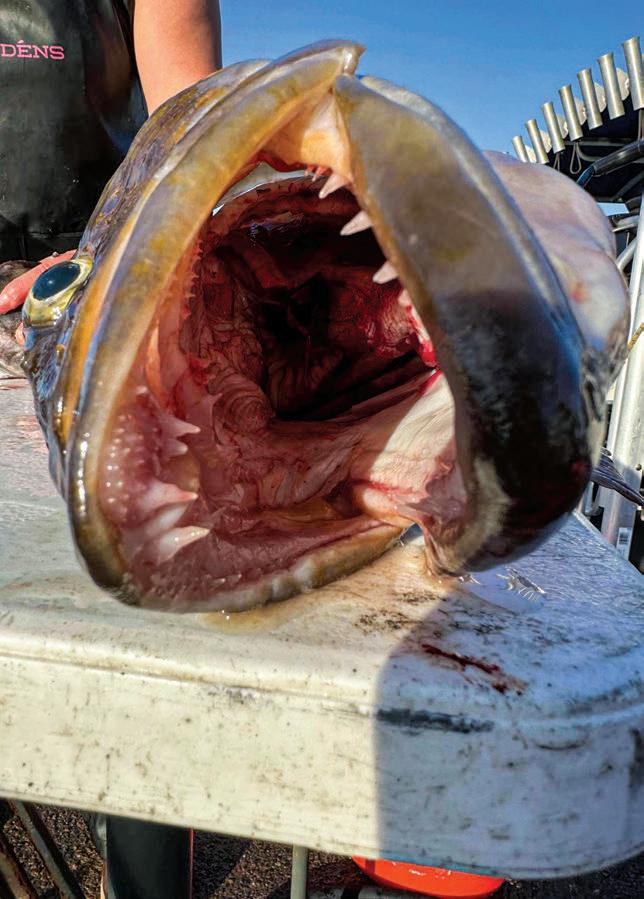
Open wide! Bottomfish season off the Washington Coast begins Saturday, March 9, and Westport lingcod will be snappy after a 4 1/2-month closure to protect their spawn. Even if the fishery didn’t close each fall, the rough waters of winter all but shut down the excellent angling. This toothy 15-pounder I caught last September on a halibut day is arguably the best eater-size fish in terms of balance between yield and meat quality. (JEFF HOLMES)
nwsportsmanmag.com | MARCH 2024 Northwest Sportsman 91 FISHING
Because my Sasquatch-sized self makes fish look small, I asked Captain Ben Overmars Jr. (left) and his buddy Paul Walser to hold this 30-pound halibut that bit my live sanddab at 780 feet. Overmars’ Tanacom electric reels were a great blessing on this day as we dropped baits to depths greater than 800 feet! That late September halibut day drew tons of boats to the edge of the continental shelf, but fishing was terrible for the fleet. I got lucky to bring this nice fish aboard, and fishing will be far better this spring when halibut reopens. We did well on other deepwater species, however. Overmars has the best playlist on the ocean and is a real pleasure to fish with. He books most of his trips by being contacted on Facebook. (JEFF HOLMES)

and private boat options. When the weather allows, many charter boats will shoot out over the bar and back onto the grounds after a 4 1/2-month layoff due to annual winter fishing closures. I will be one of those anglers, barring rough seas that keep crafts in the harbor.
Whether for bottomfish, salmon or tuna, I’ve turned my attention and love to Westport after straying to fish most of the Oregon ports, all of Washington’s ocean ports, and all of the ports on Vancouver Island. Westport is close, lucrative and also safe because of how well the charter and private boaters communicate to ensure each other’s success and safety. Meanwhile, the town itself has seen major improvements in terms of available lodging, food and charter options. The six-pack operators have increased in number and now work closely with the big party boats. Any lingering competition among operators has been replaced by a tight-knit community that is easy to hear on the water as boats share info and jokes throughout the day. It wasn’t always that way, but it is now.
LAST SUMMER WAS busy and distracting, and I put most of my ocean fishing eggs in one basket, a move I’d later regret, at first anyway. I did get out for one early-season tuna trip with a friend in a private boat, but I missed bottomfishing and ocean salmon charter opportunities. Thankfully, I had a late-September tuna trip on the books with some friends, fishing with Anglers Edge Sportfishing (anglersedgesportfishing.com). I saw a great opportunity to book a halibut date the day before our planned tuna trip when, in a rare move, leftover halibut quota was converted to September halibut opportunity during a very lucrative tuna season. At this same time, big, late coho were also returning to Grays Harbor, presenting for me the possibility of three consecutive ocean days of halibut, tuna and coho!
I had long admired the jokes and
92 Northwest Sportsman MARCH 2024 | nwsportsmanmag.com FISHING

FISHING

noncombative internet presence of Captain Ben Overmars Jr. of Overkill Sportfishing (253-224-5794) and figured he’d be fishing halibut the day before my tuna trip. I was right, and I booked a seat with him. Overmars is not into charter fishing for the money, but instead for the passion and joy of taking people fishing. As such, he only takes out four clients at a time to enhance the experience. I was excited to fish with him for halibut and a bonus limit, hopefully, of deepwater lingcod, so I booked with him for a second trip after my tuna day, chasing late-season ocean coho. I was hoping for a late-arriving tanker. Overmars is a cool dude from Tacoma with a beachhouse in Westport and
a consuming passion for fishing the waters off of Washington’s biggest and best fishing port.
I waited with anticipation for the end of summer and my three days of Westport fishing, booking at the Westport Marina Cottages (westportmarinacottages.com) and planning some seafood parties/ dinners with local friends in the Grays Harbor community. But as days wore on and my dates grew closer, the looming threat of bad weather increased. A couple days out from my trip to the coast, the forecast showed the possibility of a category 3 atmospheric river. Sh*t. It looked like my halibut day would be the calm before the storm, with the days
afterwards looking gruesome: up to 6 inches of rain, 40 mph sustained winds, and so on. I made the trip over for halibut and toted along a spinning rod and spinners for coho in the marina and a stout spinning rod and tangle gear for crabs as well in case one or more of my trips got canceled. Thankfully, the forecast for halibut looked great and would result in bluebird skies, no wind and temps near 70 degrees, even 35 to 40 miles offshore on the halibut grounds.
I MET UP with Overmars and a small crew at o’dark thirty to load gear onto the boat and wait for daylight to shine the way offshore. The jokes started immediately, and I felt comfortable
94 Northwest Sportsman MARCH 2024 | nwsportsmanmag.com
The view alone outside my cottage at Westport Marina Cottages offers plenty of testimony about why this is the best place to stay in Westport. The proximity to charter boats and restaurants and clean and comfortable interiors complete with full kitchens and a jacuzzi tub seal the deal. These cottages get my highest recommendation for Westport lodging, and I’ve stayed in a lot of places in Westport and nearby Grayland. (JEFF HOLMES)
with this new crew of anglers. As we got underway, we didn’t even notice the sometimes treacherous Westport Bar and glided swiftly to the sanddab grounds, where we would fill the bait tank with a day’s worth of the tiny flounders that halibut and lingcod gobble up like fat kids raid an unattended candy bowl. The sanddabs were uncharacteristically reluctant to bite, and we took a bit longer to load up than usual, but we got our bait.
We then continued the run on a flat ocean to the edge of the continental shelf and joined a big group of boats dropping deep onto the most lucrative halibut grounds within 40 miles of Westport. Overmars’ electronics showed we were hovering on a flat-
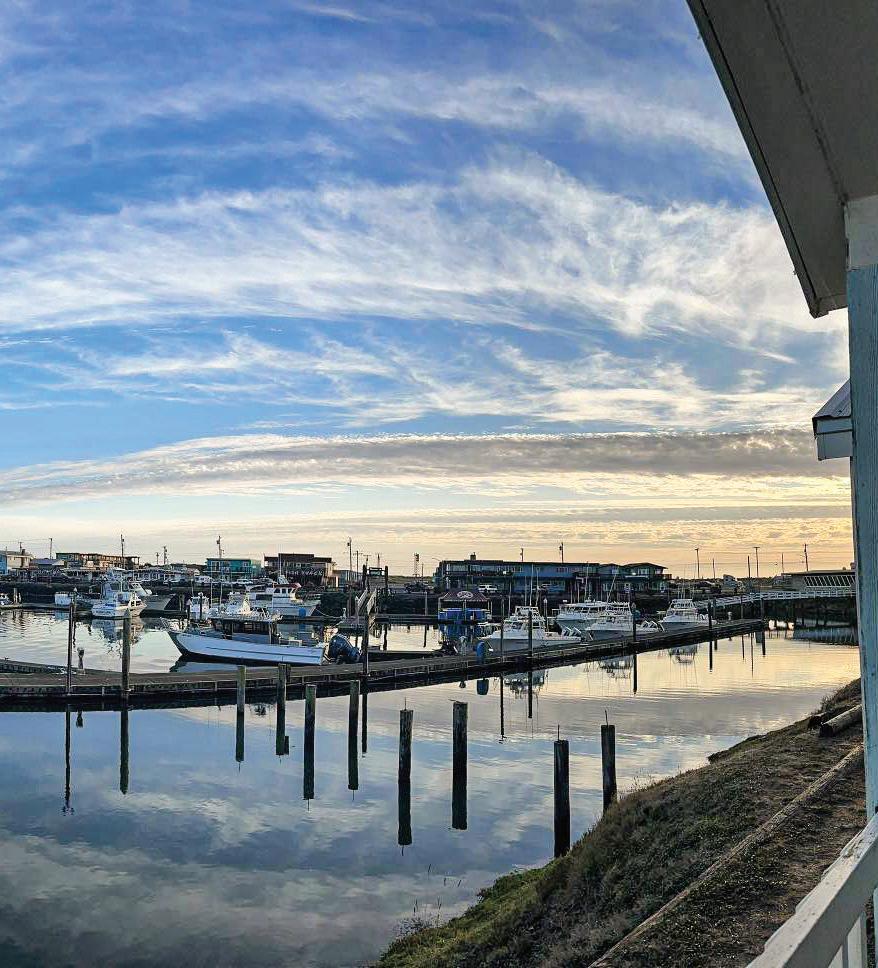
calm ocean over 780 feet of water with a crazy surface temperature of around 65 degrees! Of course, the temp down nearly 800 feet would not be nearly so warm, but the surface temp bore testament to the strong El Niño pattern and hinted at why just a scant further run offshore tuna boats were also picking up yellowtail jacks, bluefin, mahi mahi and other pelagic species that typically roam further south.
I’d fished in water this deep before, but never with the luxury of Tanacom electric reels, and I admit I was pretty excited. Given how slow fishing would be for the entire fleet, I ended up doubly excited that I didn’t need to reel up many times manually
nwsportsmanmag.com | MARCH 2024 Northwest Sportsman 95
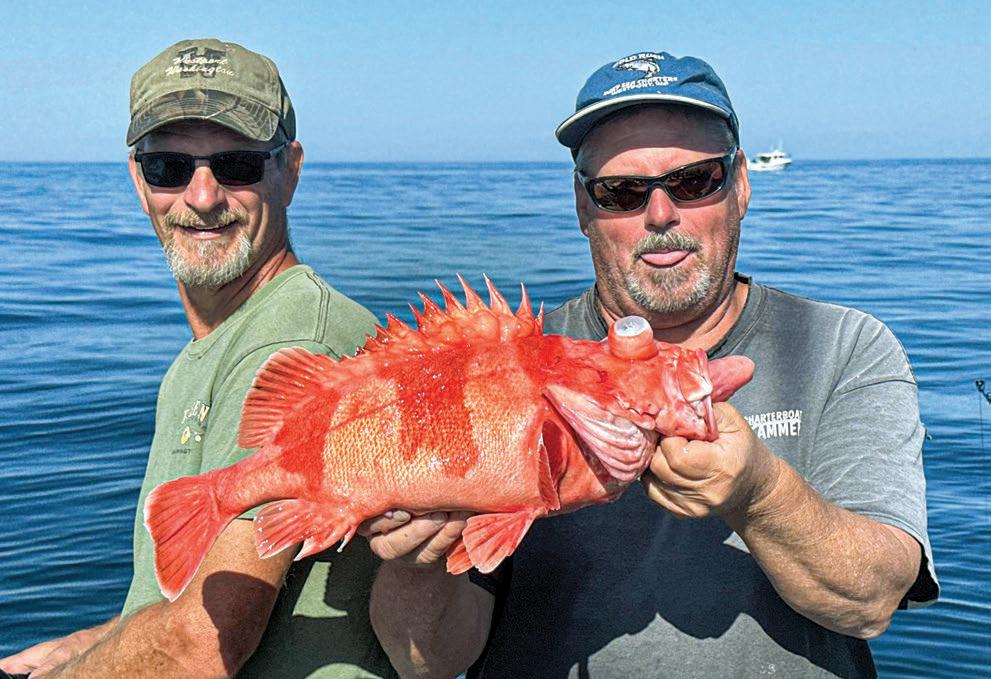
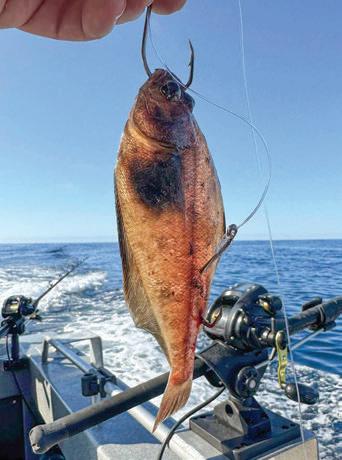
to check baits or to redrop. We would have to reel up a lot, but under the power of the Tanacoms, not my oldass wrists and shoulders. We started off the morning by putting several black cod, or sablefish, on the deck, a few rockfish, and a nice ling that fell for my sanddab. Halibut were not showing themselves, and based on the chatter on the radio between Overmars’ many private boater and charter buddies, halibut were lockjawed or elsewhere. Black cod kept biting, and blessedly for yours truly, I fluked into a 30-pounder on
a day when most boats went home blanked on ’buts. I also landed the biggest yellowtail rockfish I’ve ever seen while reeling up from the depths, followed by a large orange-banded rockfish, a new rockfish species for me, and my 15th overall!
Overall, our crew put a lot of fish on the deck and more halibut that other boats, but it was a mystery why the most lucrative halibut numbers did not produce for about 20 boats. Our crew nonetheless had a great day, framed by the soundtrack of Overmars’ ridiculously (and
Halibut and lingcod will bite many baits and lures, but most charter outfits out of Westport have moved to live sanddab because they are like candy bars to toothy bottomfish and generally outfish all other offerings. The program on most boats, including Overmars Jr.’s FV Overkill, is to run to the sanddab grounds and hand multihook rigs baited with razor clam necks or other small, tough baits to clients. It’s fun to pull one, two or even three sanddabs over the rail at a time. The little flounders are put into an aerated bait tank for the run to the lingcod or halibut grounds and are then deployed on a two-hook rig to the bottom. In the background of this picture, notice the electric reels. Electrics are a wonderful luxury when fishing at great depths. (JEFF HOLMES)
96 Northwest Sportsman MARCH 2024 | nwsportsmanmag.com FISHING
I caught this orange-banded rockfish 800 feet deep while pursuing halibut and asked Captain Overmars to hold it up for a picture. This makes 15 Pacific rockfish species I’ve landed – yes, I keep track – and I was very excited about the catch. I sampled it in a thin, crispy batter alongside a big yellowtail rockfish and some lingcod and found it to be excellent but not up to the level of the other two species. (JEFF HOLMES)



nwsportsmanmag.com | MARCH 2024 Northwest Sportsman 97
OF CHARTERS
BEST
unexpectedly) awesome playlist. We enjoyed a glassy ride into the dock when we were done, and our crew appreciated how long Overmars had grinded on great numbers to get us all good sacks of fish on a slow day.
That evening, the front end of the atmospheric river struck, hard. Tuna fishing was wisely canceled, and I spent the night with my good buddy and fellow tuna cancel-ee, Don McBride, tangling limits of Dungies in the dark on rod and reel in the sideways rain, drinking White Claws and Maker’s Mark and making the best out of the cancelation of a long-planned trip.
The next morning before heading home in driving wind and rain, I visited a float advertising tuna for sale and saw an amazing sign on a big boat offering not just flash-
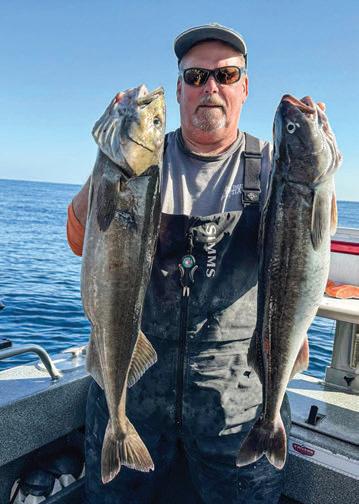

The remarkable Marina May of Westport met us at the dock and swiftly butchered and bagged our catch and offered cheer as we gawked at her fileting skills and swilled White Claws. It is always worth the money to have your catch cleaned and bagged by experts with the gear and know-how to get it done fast and well. The prices are dirt cheap, and this is especially apparent if you’ve ever butchered a bunch of saltwater fish. Generous tips for fish cleaners and deckhands are a no-brainer for those of us who understand how hard and essential the work is.
frozen sushi-grade albacore, but also Northwest-caught school-size bluefin tuna, skipjack tuna and yellowtail jacks. They had just sold out of mahi mahi! I bought a bluefin, a couple of yellowtail and a 28-pound albacore, all for great prices.
a
Granted, my three days of fishing did not go as planned, and halibut fishing was anything but fast and furious, but I ended up going home from Westport as usual with a smile on my face and coolers full of fish. When we got home, I headed to Don’s house and shared my bounty with him, sad that he hadn’t gotten out tuna fishing and fearful he’d had an unsatisfactory trip. Nope. Don, like me, and like most people who visit Westport, went home happy with a good stash of seafood.
ON MARCH 9, Westport’s long offshore season opens back up again for those seeking the riches of the deep. I can’t recommend enough booking trips out of Westport, whether it’s for rockfish and lingcod, halibut later in the spring, salmon during early summer, or albacore tuna, which show up in the high seas off our coast sometime between early and late July.
If you’re looking for reputable outfits I have fished with, I of course recommend Overmars’ Overkill Sportfishing for bottomfish and salmon, as well as Mark Coleman’s All Rivers and Saltwater Sportfishing (allriversguideservice.com) and Bill Cheser’s Anglers Edge Sportfishing for everything that swims off the Washington Coast. NS
98 Northwest Sportsman MARCH 2024 | nwsportsmanmag.com
FISHING
(JEFF HOLMES)
Black cod, also known as sablefish, are an emerging Washington Coast fishery. These tender, silky, super-oily fish are a delicacy in many preparations, including smoking. On that late September day, we landed quite
few, plus several rockfish and lingcod each, and a nice halibut for four anglers. Most other boats were not so lucky and wished they’d stuck with the steady tuna bite occurring at the same time. (JEFF HOLMES)




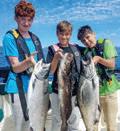
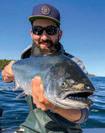
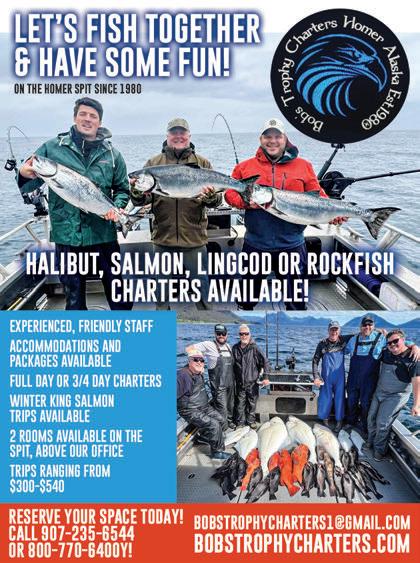
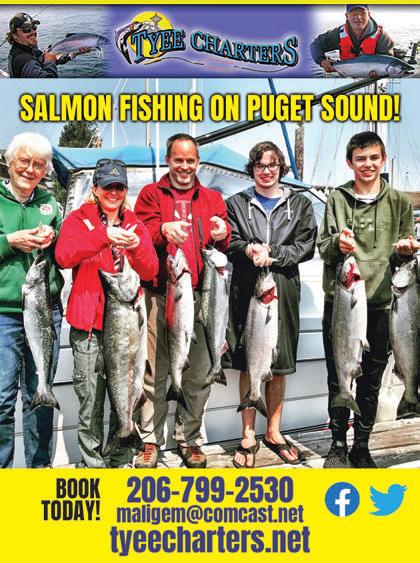

nwsportsmanmag.com | MARCH 2024 Northwest Sportsman 99 BEST OF CHARTERS Where Real Fishing Stories Begin FISHING THE RENOWNED WATERS OF NOOTKA SOUND AND ESPERANZA, VANCOUVER ISLAND’S PREMIER FISHING DESTINATION • Rated #1 On Trip Advisor • First Class Lodging And Gourmet Meals WWW.REELOBSESSION.CA TOLL FREE: 1-888-855-7335 Your premiere salmon and halibut fishing lodge, located on Vancouver Island • Luxurious waterfront accommodation • Locally sourced cuisine served up by our accredited chef • Exceptional value • An easy drive from anywhere in the Pacific Northwest • Float plane service from Lake Washington direct to the lodge


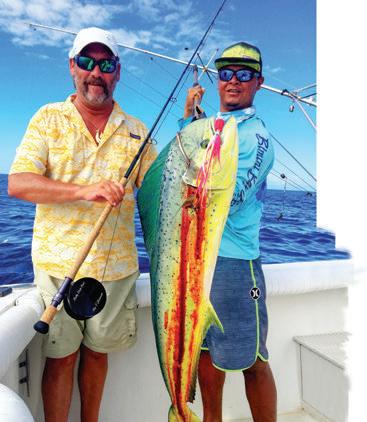


100 Northwest Sportsman MARCH 2024 | nwsportsmanmag.com WWW.CATCHFISHCOSTARICA.COM
Los
10 minutes
Mark & Merry Coleman US 425-736-8920 CR 506-4001-8430 SAILFISH MARLIN YELLOWFIN TUNA WAHOO DORADO ROOSTER FISH Family-Friendly Travel & Vacationing!
30’-40’ Sportfishing Cruisers
Sueños Marina
north of JACO, COSTA RICA
Prep Now For Kokanee Season
With the year-round fishery about to start ramping back up, it’s time to get ready.
By Tom Schnell
Although kokanee fishing is now recognized as a yearround fishery, this part of the calendar finds it a little slower. Inclement weather, seasonal lake closures, partially frozen waters, reservoir drawdowns, icy ramp conditions, hunting season’s last gasps – the list can go on and on as to why kokanee fishing early in the year is not as robust as during other seasons. But it’s a perfect time for maintenance.
Here are 17 things to do now before the fishery begins to really ramp back up in early spring.
1) CHECK YOUR MAIN LINE
Take the time to respool line on reels, or at least trim 10 to 20 feet off the end that might have seen the heaviest use and been subjected to nicks, abrasion and general wear and tear. When using 8- to 15-pound monofilament, or smaller diameter braid, any little abrasion can end in disastrous results. It’s bad enough losing a fish due to the line breaking, but watching all of your gear sink into oblivion can really hurt. Depending on how much you fish and the type of conditions you fish in, changing out your mono every year or two is fairly cheap insurance to make sure you don’t end up wishing you had done so.

nwsportsmanmag.com | MARCH 2024 Northwest Sportsman 101 FISHING
Taking time during the slower months of the year-round kokanee fishery to catch up on deferred maintenance can yield results later during peak season. Being able to maximize your time on the water, like Rhonna Schnell did on this trip, is what it’s all about. (TOM SCHNELL)

2) RETIE LEADERS
Some of your favorite lures that were producing last year may need some TLC. Go through your tackle and look for any hooks that need to be replaced or line that is all mangled up and needs replacing. The line between the front and trailing hook can see a lot of abuse and needs special inspection. I don’t know how often I have seen a fish break off because the line to the trailing hook had become twisted over time and finally stressed to the point of breaking. Kokanee are
Staying organized can reduce the frustration of not being able to find your favorite dodger, or finding that it was damaged because it was not stored properly. Although there are many options out there, author Tom Schnell and his wife have had great results with dodger protectors made by LureSafe. (TOM SCHNELL)
known to thrash and roll to the point of breaking line that has not been inspected properly and changed out.
Maybe a blade or clevis needs replacing too. Sometimes beads can get cracked or worn and need to be replaced. Leaders may need to be retied to lengthen them. It is easier to shorten leaders when needed than to try and lengthen them right in the middle of a hot bite.
3) TIE UP EXTRA LEADERS
We keep several leader boards with
pretied leaders in our tackle bags. Having pretied leaders onboard has been a lifesaver multiple times. Being out in the middle of the lake during a hot bite is not the optimal time to try and tie up a leader. Having pretied setups available makes it a simple task to change out the leader instead of trying to retie while navigating the boat, fighting fish and/or who knows what else.
Take the time now to be prepared. It is easier to tie leaders in a controlled environment like your home than it is out on a lake. Having to tie leaders out on the boat often results in dropped hooks and beads flying everywhere because of needing to grab a rod with a fish on it, or in my case more often than not, needing to grab the net to bring in my wife’s fish. It usually does not end well. Having pretied leaders has made it a lot less stressful when changing out a leader on a hot lure that is about to break because of all the fish it has caught.
4) ORGANIZE, INSPECT YOUR GEAR
There are many methods of organizing dodgers and lures, so find one that works for you. Pool noodles, Plano boxes and leader boards from FishEng (fisheng.com) are good options. We have found that storing our dodgers in dodger protectors like those made by Lure Safe (luresafe.com) help keep them organized and also protects them from being scratched and dinged up while fishing.
A general inspection of your tackle can provide insight into what dodgers and lures have been your top producers. Look for ones that aren’t being used and pare down the tackle you bring on your boat. This is a good opportunity to go out with the old and make room for the new. It is amazing how much fishing gear one can accumulate over time. Gear that seldom gets used takes up space. Know a kid or someone who is just getting into kokanee fishing? Think about donating some of your excess gear to help them get started if they don’t have the resources to do so.
102 Northwest Sportsman MARCH 2024 | nwsportsmanmag.com FISHING

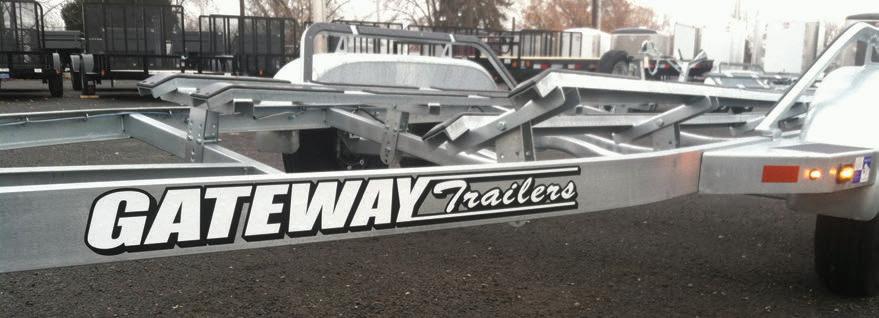

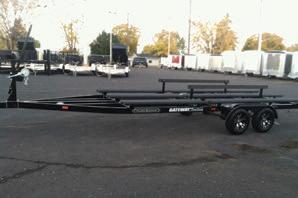
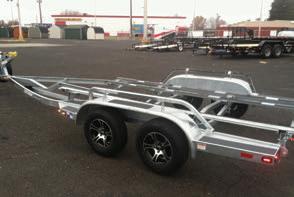


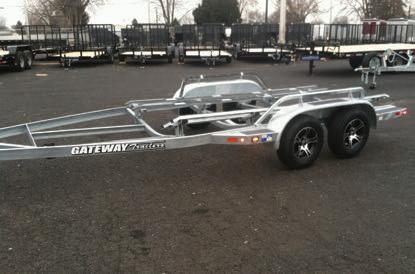
Reliable Quality Service & Craftsmanship For Over 50 Years! Custom Boat Trailers 343 Thain Rd., Lewiston, Idaho www.gateway-materials.com 208-743-0720 • NMMA Certified • All Steel Weld Frame, Fenders & Bunks • 2 YEAR WARRANTY
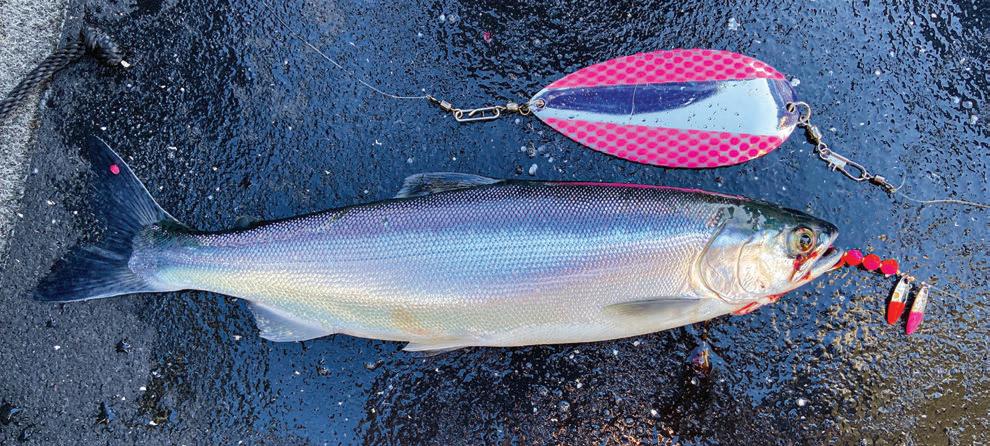
5) BREAK OUT THE LEMON JOY
Clean your terminal gear, both lures and dodgers. My wife is a fanatic when it comes to cleanliness. Every time we switch out gear, she gets out the Lemon Joy and a brush and thoroughly cleans and dries both the dodger and any tackle on the end of it. Does it make a difference? I think so.
When one considers that salmon, which kokanee are, can smell one part per million, it only seems logical to keep tackle clean of any substance that might trigger their sense of smell and persuade them not to hit your lure. Not only can grime build up, leaving a foul odor, but it can also dull the shininess of your dodger and lure. Over time, all of the scents, oils and other foreign substances used in fishing start to build up if not cleaned off.
Recently, I was given a very “old” dodger that looked pretty well used. I decided to clean it up before trying to retape it. What I found out was that it had layers of grime built up on it. Once I was able to cut through all of the nasty, sticky grime, what I had was a brand-new-looking dodger!
Although we hand-wash each of our dodgers after using them and before storing them, I have heard of people who will throw them in
their dishwasher to clean them. We have never tried this, but it may be an easy way to give your dodgers a quick cleaning. Try it with one or two dodgers before throwing in your whole batch, just in case it damages any of the paint or tape.
6) SNAPS NEED LOVE TOO
While cleaning and inspecting your terminal tackle, look for any swivels or snaps that need to be replaced. I have lost lures because the snap on the dodger had seen too much use and finally failed. It was frustrating enough to lose the fish, but my favorite lure too?!? All because I had not taken the time to swap out an old snap swivel for a new one. Lesson learned. I hope. I do not like repeating those types of errors.
7) REPAINT/RETAPE AGING DODGERS
Just because your favorite dodger has seen better days does not mean it needs to be thrown out or replaced. Learn how to spray paint, or do what we do and just retape them. Spray painting dodgers is an art in itself and I have seen some amazing work from some very talented individuals. I do not fit into that category, so I just do what I know, and that is use tape. I
have become a big fan of Hyper-Vis tape (hypervistape.com), as it is made here in the Pacific Northwest and adheres to things amazingly well.
It can also be fun to spruce up some of your dodgers and lures while you are at it. Maybe add a little accent to them or create your very own design. Putting some paint or tape on a lure blade for some added contrast can often help. The offseason is a great time to experiment with different ways to spruce up your existing inventory. Put some personalized bling on your gear. There is something about catching a fish on a dodger or lure that you designed that makes it that much more special.
8) SERVICE THOSE REELS
There is nothing more frustrating than a reel not working properly right in the middle of a fishing trip. Take the time now to get them serviced. It can be as simple as giving them a nice warm bath with some mild soap to get all of the fish scales and grime off, to taking them apart and relubing them. If you use a linecounter reel, now is the time to get it serviced if it has been sticking or just not working.
I have even changed out the handles if I find the existing one to
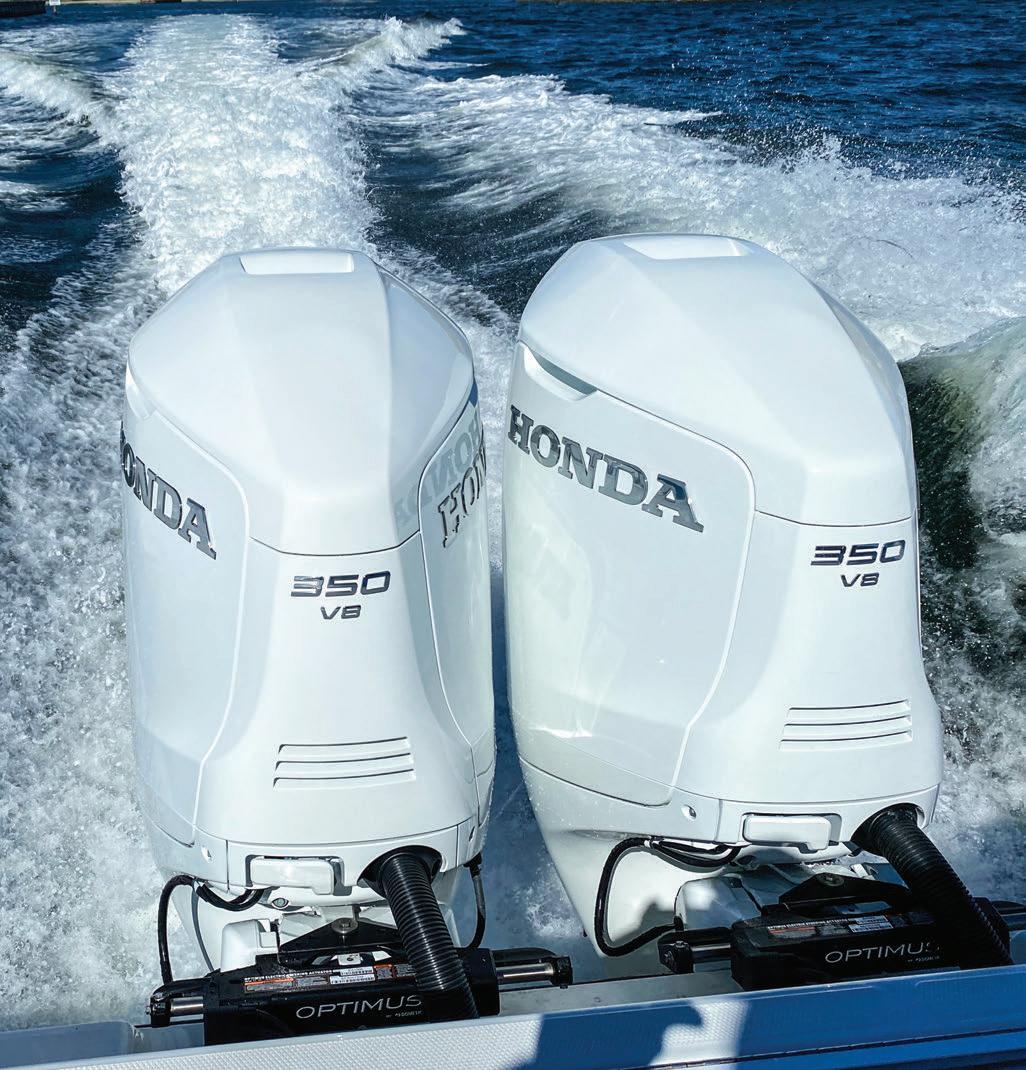
104 Northwest Sportsman MARCH 2024 | nwsportsmanmag.com FISHING
Fish slime and blood on the floor of your boat can be dangerous, as well as create a stink if left. Cleaning your boat and tackle may result in better results. (TOM SCHNELL)


9316 Portland Ave. E Tacoma, WA, 98445 253-301-4013 www.tacomaboatsales.com Always wear a personal flotation device while boating and read your owner’s manual. 2024 American Honda Motor Co., Inc. ® All boats powered by Honda Motors KICK ASS V-8 POWER!!
Taking the time to service your rods, reels, line and downriggers will prevent frustrating breakdowns later in the year. True fact: An ounce of prevention is worth about 20 pounds of kokanee. (TOM SCHNELL)

be uncomfortable. My wife does not like the power handles on some of the Okuma reels we use, so I changed them out to the smaller paddle handles that fit her hands better. If taken care of and maintained, reels can last a lifetime. If abused and not maintained, they can become a real headache and nightmare.
9) CHECK RODS FOR DAMAGE
I have found out the hard way that going over my rods and checking them for any wear and tear is a must. From broken eyelets to missing guide inserts to even having a rod snap on me because it had been stored improperly, I’ve seen it all. I now take
every rod and clean it thoroughly with hot water and soap. I check for any abrasion that could weaken the rod. I inspect the guides and eyelets to make sure they are all in good shape.
I also make sure the reel seat is still in good working order. If the rod handle is showing some wear and tear to it, I will cover it with X-Flock shrink wrap that I got on Amazon. I want my rods to last. I look at them as an investment, not just a disposable piece of equipment.
10) CLEAN. THE. DANG. BOAT.
I am shocked by the number of people who do not take the time to thoroughly clean their boat at season’s end. Over
time, your boat can accumulate a lot of nasty-smelling substances. From spills to oversprayed scents to fish blood and slime, it starts to add up.
We regularly give our boat a complete washdown and wax at least several times a year. After nine seasons, it still looks new. We paid too much for it to abuse it. We clean ours inside and out. Oil from scents, fish blood and slime on the floor can be dangerous if not cleaned up. Vacuum the floor and trays. Wipe down any electronics too. It is amazing how much gunk can accumulate on the screen.
And take time to wash the outside. I read once where a guide, who was always very successful fishing a certain spot, saw his catch ratio really start to suffer. After one particular outing he noticed that his boat had a pretty nasty scum line that had built up on it. He decided to clean his boat thoroughly thinking that maybe it was putting off an obnoxious scent trail in the water. His catch ratio immediately went back up. He now cleans his boat after every fishing trip. He is a strong believer that a clean boat is a fishy boat.
11) MAINTAIN THE ENGINE, ELECTRONICS
Speaking of the boat, have the oil and all filters changed. Maybe a tuneup or new spark plugs are in order. Time to have the impellers changed out? Do it. Along with the motors, get your electronics ready for the season. Take the time to download the latest software update on your electronics if your unit allows for it. Don’t let a fishing trip get ruined because you did not take the time to do the proper maintenance and upkeep on your boat. A lot of the general maintenance can be done yourself. If you are not comfortable or able to do it, though, find a good mechanic. The winter season is often a slow time for them.
12) TROUBLESHOOT ’RIGGERS, NETS
Wait, service nets?!? Yep. Remember that sticky extender handle? Clean it and add a little lubricant to get it working properly again. Check your net basket for tears and possibly
106 Northwest Sportsman MARCH 2024 | nwsportsmanmag.com FISHING
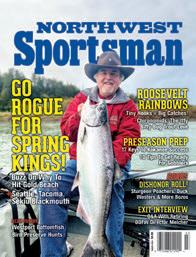
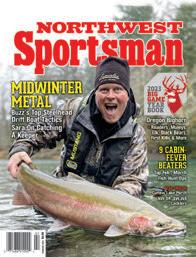



nwsportsmanmag.com | MARCH 2024 Northwest Sportsman 107 SUBSCRIBE TODAY! NWSPORTSMANMAG.COM 206-382-9220 NWSPORTSMANMAG.COM FISHING • HUNTING • NEWS FISHING • HUNTING • NEWS NWSPORTSMANMAG.COM NWSPORTSMANMAG.COM NORTHWEST FLY FISHING Special Advertising FOCUS
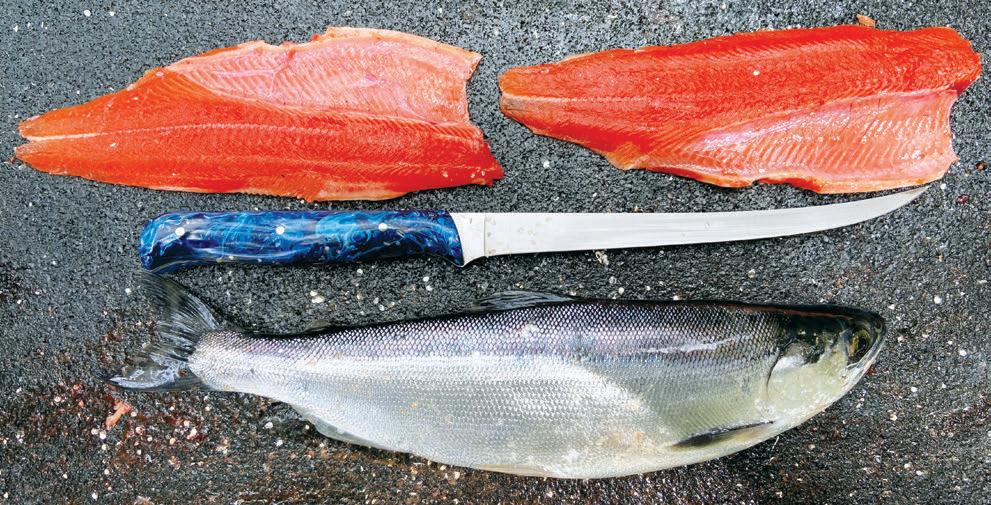
upgrade to a rubber one if you have not done so already.
Also clean and service your downriggers. Clutches/brakes can start sticking or slipping. Clean and scour them per manufacturer directions to get them back to optimal performance. Clean the plug outlets of any corrosion. Check the cable for any nicks or kinks. Maybe it’s time to switch out to braid. Although we have not done so, many people prefer braid over cable. As with other servicing, if you are not comfortable or able to do it yourself, there are repair shops that can do it for you. Just make sure they have experience and are certified to work on your brand of downrigger.
13) SHARPEN YOUR FILET KNIVES
Now is a great time to get your knives razor-sharp. Why butcher those delicate kokanee filets when a sharp knife could have given you a beautiful cut instead? As my wife can attest, I am a fanatic for sharp knives. I cannot stand a dull knife. Period. I will take all of the knives out of the boat and my fishing bags and make sure they have a sharp blade to them.
I use a variety of methods to sharpen them, but usually start off with a hand-held V-hone to make sure the blade is straight by repairing and reshaping it back to its original form. From there I run it through my WorkSharp power tool to give it the final sharpness that I am looking for. During the year, I use a sharpening steel to quickly dress an edge. Check out WorkSharp’s website (worksharptools.com) for some great videos on how to properly sharpen your knives.
14) GATHER INTEL
Read articles in Northwest Sportsman (nwsportsmanmag.com) like this one and watch YouTube videos. If the weather outside is frightful and the fire inside is so delightful, since you have no place to go, grab some of your back issues and a cup of joe. Read up on some of the past kokanee articles that have been featured in this magazine.
Now is also a good time to catch the latest YouTube videos on your favorite lake or learn new techniques for catching kokanee. Never jigged for
them before? Read up or watch videos on how to do it. Want to learn a new lake or a new technique on how to catch them? There is probably a YouTube video for that too. Some other helpful sites I’ve found for how-to-videos and articles include: kokaneekidfishing. com/you-tube; deadly-venom-tackle. myshopify.com/pages/videos; and poulsencascadetackle.com/kokaneetrout-trolling. There are many other good ones out there too. With time on your hands, grab your favorite beverage and kick back in the easy chair and learn something new.
Check out new lakes. Read up on and study new fishing opportunities. With today’s social media, it does not take a lot of time to find out how to fish a new lake. In doing so, balance it with information that can be obtained from local tackle stores and sources as well. A lot of YouTube videos are done by “influencers” who are simply trying to get you to buy something. The same can be said about tackle stores too, though, so do your research and pair it all together.
Get a map of the new lake. Drive to it to make sure you know where
108 Northwest Sportsman MARCH 2024 | nwsportsmanmag.com FISHING
Make sure to sharpen your filet knives. A razorsharp hone results in cleaner cuts and makes fileting kokanee go faster. (TOM SCHNELL)


nwsportsmanmag.com | MARCH 2024 Northwest Sportsman 109
the boat ramps, docks and what the access to it is.
15) BOOK IT
Don’t be afraid to book a trip with a guide either. Last year, we wanted to try a new-to-us lake, Wallowa Lake in Northeast Oregon, so we booked a trip with Kevin Anderson of Next Level Guide Service (541-974-1135). I will confess, I have not been a fan of guided trips in the past, but Kevin changed that quickly. He was more than willing to show us how and where to fish the lake and before we knew it, we both were very comfortable fishing water we had never been on before. We have made it a goal of ours to try and fish a new body of water every year now.
16) HIT THE SPORTSMEN’S SHOWS
Most sportsmen’s shows held around the Northwest offer a variety of seminars, including how to fish for kokanee. I have found such seminars help me with one of three things:
1) Confirm what I already know; 2) Add to what I know; 3) Teach me something I did not already know.
Too often I hear people say that a seminar was a waste of time because they already knew what was being taught. I look at it differently. I see it as reaffirming what I already know. It tells me I am on the right track. I also find that if I go in with an open mind, I do take something away. I am one who is always wanting to learn and grow.
Sportsmen’s shows are also a great

place to meet tackle manufacturers. They often are an invaluable source of knowledge and information, since they live and breath this stuff. They can show you tips and tricks on using tackle that you might not have known otherwise. I have made some longtime friends simply by taking the time to talk to some of them. True, they are there to sell you stuff, and that brings up another reason to attend the shows: Stock up on supplies! This is a great time to get all types of tackle and gear on sale. It is also a time to see what the latest and greatest is out there, since many tackle manufactures roll out their newest offerings at the shows.
Another benefit of attending the shows? You never know who will be there! We have run into some old friends we had not seen in years. We often walk away having made new friends too. Yes, the crowds can be a little daunting sometimes, so we try to go at midweek to avoid the masses.
17) AND FINALLY, JUST GO FISHING!
Just because it is not peak season does not mean kokanee are not available. Some of the best fishing we have experienced has come in late winter. It can be a tad bit chilly, so dress and prepare accordingly.
Another benefit of going now? Smaller crowds on the lake. You don’t have the weekend warriors and all of the other watersports enthusiasts, aka jet skiers and wakeboarders, out there. Some of our most amazing days have come when the weather broke and temperatures rose to a tolerable level. After all, this is what it is all about – preparing to be out on the water fishing. All the preparation in the world is pointless if you don’t get out on the water and fish.
Good luck. Tight lines and fish on! NS
Editor’s note: Tom Schnell is an avid outdoorsman who lives with his wife Rhonna in Central Oregon. He is a past board member of Kokanee Power of Oregon and a past local Ducks Unlimited and Oregon Hunters Association president.



110 Northwest Sportsman MARCH 2024 | nwsportsmanmag.com
FISHING
When fishing a new lake for the first time, hiring a guide can be invaluable. Make sure you hire one who you connect with and who fishes the body of water often that you are wanting to learn. Now’s also a good time to research techniques, fisheries and more via this magazine, the internet, tackle stores and sportsmen’s shows. (TOM SCHNELL)








14900 SE STARK ST. • PORTLAND, OR 97233 HOURS: MON-FRI 8AM-6PM • SAT 9AM-3PM MOTORS MUST BE CAPABLE OF ACCEPTING JOYSTICK APPLICATION. CERTAIN LIMITATIONS APPLY. 503-255-8487 • CascadeMarineCenter.com Good Used Boats, Repair Parts, Quality Service, Knowlegeable Staff SALES • SERVICE • ENGINES 8hp and 9.9hp, and Joystick in stock. Call now! Docking and maneuvering your boat in high winds has never been so easy. Let the Joy Stick do it for you. GPS position hold and heading hold is included. Seastar Solutions Optimus EPS steering Subject to approval by Mercury and dealer. Subject to terms. See dealer for details. NO SALES TAX IN OREGON Mercury Marine Outboard Promotion HorsepowerConsumer Rebate 9.9 Pro Kicker $100 15 Pro Kicker $150 40 & 40 Jet $200 50 $250 60 & 65 Jet $400 75 & 80 Jet $500 90 $600 115 & 115 ProXS$1,000 150 $1,250 150 ProXS $1,500 350 $2,000 400 $2,250 GETTING YOU THE RIGHT PART THE FIRST TIME
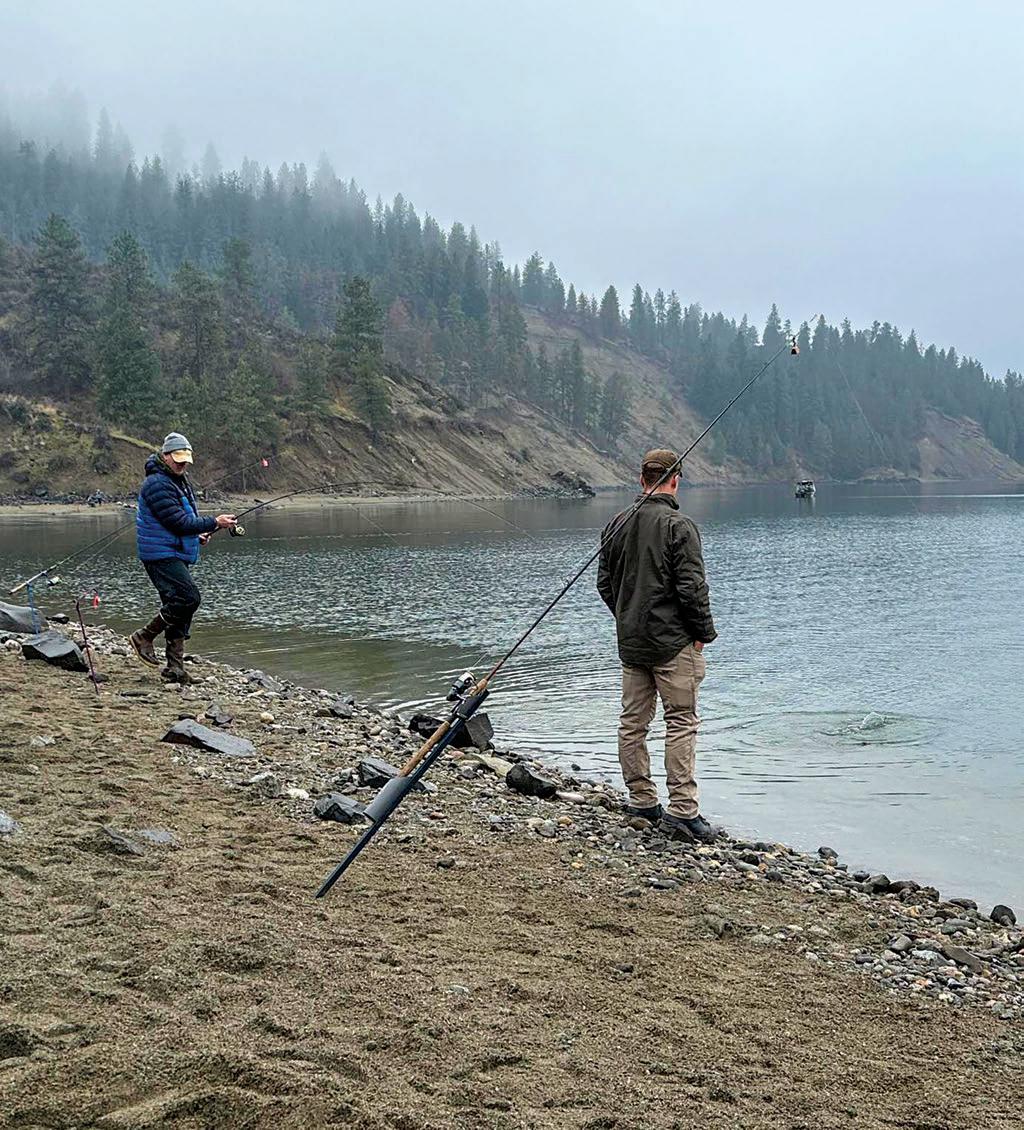
112 Northwest Sportsman MARCH 2024 | nwsportsmanmag.com
A couple days on this prime point near Lake Roosevelt’s Fort Spokane yielded four daily limits for a buddy and for me, 20 obese, plankton-fed triploid rainbows averaging 18 inches and weighing a combined 47 pounds. At least seven other anglers pulled their daily limits off this small point in that same two-day span. That’s a lot of fish in one spot. (JEFF HOLMES)

Seriously, You Need To Fish Roosevelt!
The huge Upper Columbia reservoir’s plentiful triploid rainbows are partial to tiny trebles baited with dough, and here’s how to land limits off the shore.
Story and captions by Jeff Holmes
No matter where you live in Washington, or the Northwest for that matter, if you love to catch big fat trout with the highest possible quality meat and you like the laid-back beach fishing lifestyle, a trip to Lake Roosevelt is worth your time this late winter, spring and even early summer. I routinely make day trips from my home in Tri-Cities despite it being two and a half to three hours each way to my favorite beaches, but it’s a stretch. For folks in the Spokane area, the trip is a lot closer and day trips are a no-brainer.
But for anglers like me and from even further flung locales like Western Washington and Oregon, multiday trips make a lot of sense. I’ve made a couple of overnight trips this winter, staying in the town of Wilbur south of the Upper Columbia reservoir both times and having a blast. Those trips have resulted in
great times at campfires, sitting in chairs, listening for ringing bells as rods go off, catching limits of large fish, and stuffing a fridge and freezer full of excellent smoked rainbows. I’ve been smoking trout since the age of 10 and will reveal my basic brine and approach at the end of the article. I have got Roosevelt plunking dialed in as well as smoking its bounty, and I like to share. There should be no secrets with this many trout and this much access available. Sooooo many people fish Roosevelt, yet it is still an underutilized gem.
THE EXTREMELY LOW snowpack in the upper Columbia Basin’s mountain ranges may spell bad times later in the year and for future cohorts of coldwater fish, but the dimly lit bright side is even greater fishing at Roosevelt. Every year the risk exists of the Bureau of Reclamation dropping the reservoir level sharply to accommodate coming runoff, such
nwsportsmanmag.com | MARCH 2024 Northwest Sportsman 113 FISHING
that rainbows galore get washed out of the reservoir over or through Grand Coulee Dam. This phenomenon, known as “entrainment,” is not going to be a factor this year. As such the reservoir will remain utterly stuffed with obese 16- to 23-inch trout – some much larger – through 2025. Moreover, because dam operators were still raising the water level at the
time of this writing in mid-February, a typically unheard of thing, the normal drawdown of the reservoir had still not pulled the lake’s vast food supply of zooplankton down toward the dam. Fish are scattered everywhere along the shorelines and dropoffs of the lower half of the lake right now. This will result in great fishing from Hunters down to the dam, meaning
I hate to admit that my friend Chris Donley, a regional Fish Program manager at the Washington Department of Fish and Wildlife, is somewhat of a fishing mentor to me, but he is. I was tickled flamingo pink that my size 18 trebles outfished his offerings on this day almost 2:1 and that he adapted my approach by borrowing hooks and then buying his own. Donley is a fantastic angler and biologist and as true and effective an advocate for sportsmen as exists at the agency. He is one of the original architects and nurturers of Roosevelt’s amazing rainbow fishery and a frequent angler at the big reservoir. He catches the heck out of kokanee and rainbows in his Bloodsworth sled, but, like me, he loves not trailering a boat and instead lobbing a bait off the beach. (JEFF HOLMES)
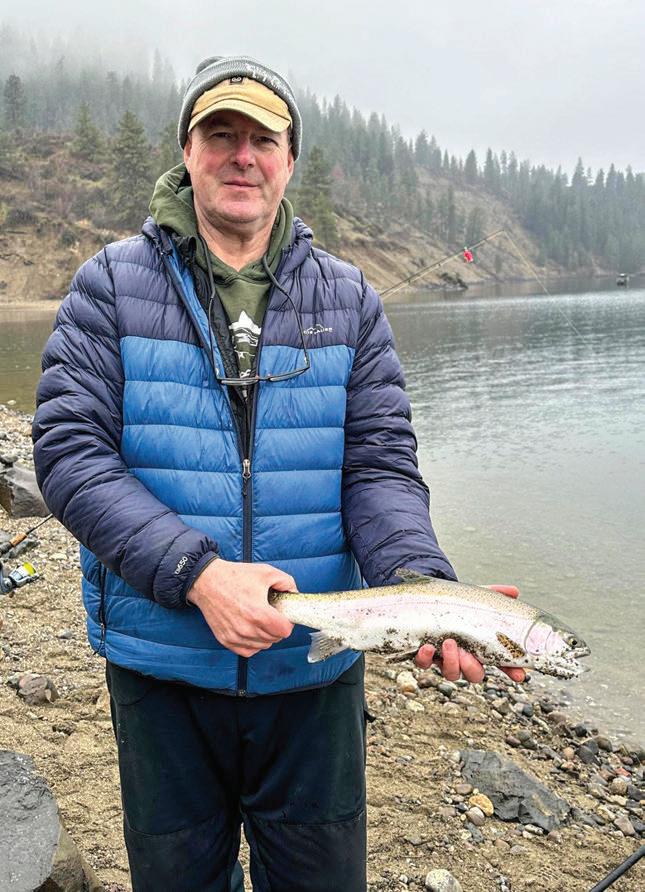
excellent angling at all of the popular locations like the Spokane Arm, Fort Spokane, Seven Bays, Lincoln, Hanson Harbor, Keller Ferry, Spring Canyon and everywhere in between until meaningful drawdowns occur. When that happens, fishing will likely pick up lower in the reservoir and slow slightly further up Roosevelt.
Fishing has been amazing this winter, and that excellent angling will continue well into June and perhaps July, depending on weather. Huge numbers of rainbows cruise the reservoir’s shorelines until the heat of summer drives them deep, and the outlook for angling this March and beyond is excellent. The robust netpen rearing system up and down the lake’s length annually accounts for the release of approximately 750,000 catchablesized rainbow planters, all of which are triploids that quicky grow fat and oily by gorging on the lake’s abundant population of daphnia, also known as copepods, aka freshwater plankton. Several years ago the Roosevelt trout program switched to sterilized triploid rainbows, and the result has been a slightly larger and fatter average rainbows and occasional fish pushing 30 inches and topping 10 pounds. I have never seen Roosevelt more stuffed with trout, nor have I ever seen trout at the level of quality as those available in this 150-mile-long reservoir now. I’m greedy for their flesh.
IT WAS THIS greed for smoked rainbows and for the smell of pines and sage and woodsmoke that has drawn me to Roosevelt’s beaches several times this winter, each trip resulting in limits for me and for friends. Watchable wildlife we’ve seen include turkeys, mule deer, bighorns, eagles, otters, mink and flopping hatchery rainbows covered in beach sand.
I’ve had great luck and have witnessed plenty of others catching impressive stringers, but I’ve not seen anyone catch fish at the clip that I have and it’s not because I’m a great angler. I’m a good angler and
114 Northwest Sportsman MARCH 2024 | nwsportsmanmag.com
FISHING

To rod tip

36 inches
6- to 8-pound fluorocarbon or monofilament leader
We ran this simple rig this past winter in one of my articles, and I insisted the editor run it again, so effective is it. It’s a standard trout fishing rig for many, but where it differs from most inland trout plunking setups is 1) the use of a bell to signal strikes, and 2) most importantly, the use of a tiny, laser-sharp treble hook that definitely triggers more bites from trout. I recommend combing the internet for size 18 and even size 20 trebles. Your bite rate will increase, your hook-up ratio will increase dramatically, your landing rate will increase as fish swallow these tiny offerings, and you will outperform other anglers including on days when the bite slows down. You will also use way less PowerBait. By the way, use corn-flavored PowerBait. Trust me. (JEFF HOLMES)
a great interviewer, and for years I’ve dialed in my game by asking others about their successes. I went from zero to hero at Roosevelt by not getting stuck in a rut and adapting my approach. I wrote about my favorite rig earlier this winter, but I’m sharing
again because it’s just that good and I don’t think there’s a reason to keep secrets about Roosevelt. There are more miles of good beaches and more hatchery trout available here than at all of Eastern Washington’s prime trout lakes combined. And
ONE MAN’S OPINION ON SMOKING RAINBOWS (OR ANY FISH)
After trying nearly every possible brining technique and many, many different smokers, I’ve come to two conclusions. 1) Boiled brines comprised of way more sugar than salt are superior to any other brining approach, leaving dry brines way behind. 2) The old-school Little Chief and Big Chief electric smokers kick ass. Hurray for simplicity and relatively low prices!
For every gallon of filtered water, I like 6 cups of light brown sugar and 1 cup of white sugar to one cup of sea salt. I like to boil this mixture for a couple minutes max, adding black and red pepper, garlic and onion powder. I’ll add a range of other flavors depending on mood, including wild stuff like vanilla or garam masala, but always sticking with the core of sugars, salt, peppers, and onion and garlic. Of course, it is critical to let this mixture cool before adding fish, and I like to refrigerate it before adding the meat.
After a 24-hour brine time, I will wipe dry all filets or chunks with paper towels and put the fish on racks with a fan blowing gently on the fish until the meat develops a pellicle. Next comes the smoker and several pans of a mix of alder and hickory chips (or just alder). The amount of smoke and time depends on humidity and outdoor temperature. If it’s too cold outside, after adding a sufficient amount of smoke, I will briefly finish fish in a 225-degree oven, checking frequently to avoid overcooking. To save money and get better results, I skip the Smokehouse Products wood chips and use pellets intended for pellet smokers. For trout, I like to smoke filets with skin on, and for salmon and steelhead, I skin my filets. –JH
none of those lakes’ rainbows touch Roosevelt’s for food quality. Here’s a list of tips for success at Roosevelt that I can guarantee will help you to catch more fish.
1) Look at the picture of the plunking rig included in this article, and copy it. Using a 1-ounce sinker helps to enable smooth, long casts and keeps your rig affixed to the bottom, even in windy conditions. A light, 2- to 3-foot leader keeps your bait well above bottom and in eyesight of cruising trout.
Using absurdly small trebles –which you will have to find online – is the biggest key of this rig. Tiny-profiled baits draw more strikes. You’ll use less bait and get more bites, and 80 percent of your strikes will result in hooked fish. Eighty percent of those hooked fish will swallow your bait. Wild redband rainbows with intact adipose fins must be released, so eyeball every fish in the clear water as you get it close to the shoreline, and carefully release wild fish by cutting the line right in front of their snouts. Do not drag them onto the beach and cover them in sand, and don’t try to remove your tiny treble. You’ll kill them.
2) You should bring an assortment of PowerBait, but honestly, I almost never stray from good ol’ cornflavored PowerBait. It always seems to outfish other kinds, but experiment as makes you happy. Certainly worms and marshmallows catch fish, as do any standard trout baits you can float 2 to 3 feet above the bottom. Slip bobbers work too, but I greatly prefer plunking with a bell.
3) Fish small points and experiment with the distance you lob your baits. Every beach is different, and dropoffs and cruising lanes vary in terms of their distance from the shoreline. Sometimes, short casts win the day; sometimes, you need to make a decent cast. PowerBait clings dutifully to tiny trebles, but be careful not to throw the bait off your hook making Herculean casts.
4) Be patient. Sometimes, the bites
116 Northwest Sportsman MARCH 2024 | nwsportsmanmag.com FISHING

OREGON
MEDFORD
CRATER CHAINSAW
1321 North Riverside
(541) 772-7538
www.craterchainsaw.net
nwsportsmanmag.com | MARCH 2024 Northwest Sportsman 117
FISHING
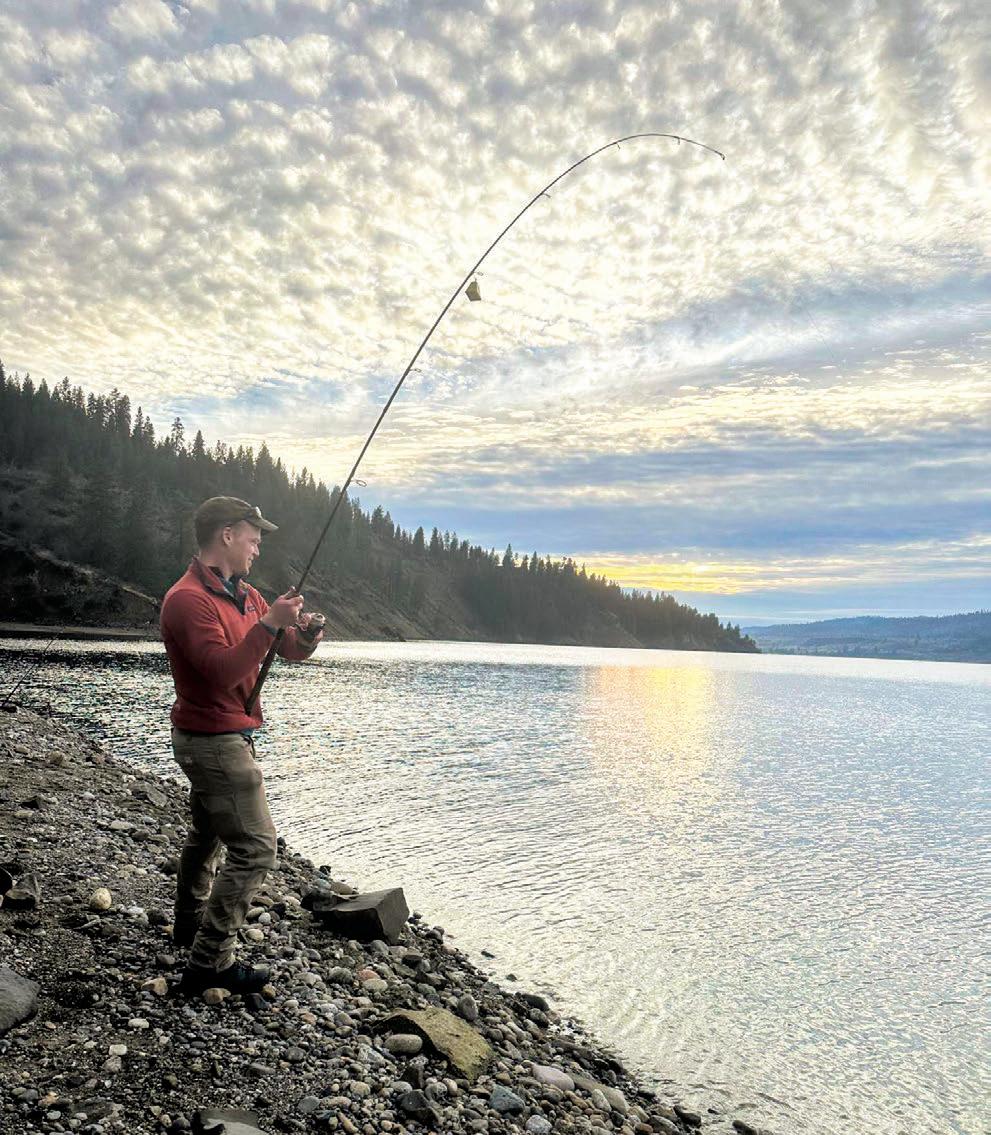
come in crazy waves. Twice this year a friend and I, each fishing two rods, have had four fish on simultaneously.
Other times we’ve gone two hours between bites, although this has been rare. Patience is key, but don’t be afraid to make a move down the beach or to a different spot altogether.
That’s one of the advantages of multiday trips. If things are slow at one location, experiment and try a new beach altogether on day two.
5) Come prepared to stay warm,
After we put a second day’s limits from this prime beach on the stringer, some pushy but friendly Slavic folk who were illegally chumming the waters down the beach with whole kernel corn came running. Their giant cocktails of shrimp, corn, doughbait and some other unidentified bait drew strikes but at a much slower pace than our tiny PowerBait offerings. Later that night while fileting our combined 20 fish, I cut open stomachs of a few to reveal as much as a quarter cup of corn. One obese rainbow had eight individual globs and four different colors of PowerBait in its gut. (JEFF HOLMES)
This graph demonstrates what an anomalous year we are facing. With little snow in the mountains of Eastern Washington, North Idaho, Montana and especially British Columbia, water levels were actually rising on Lake Roosevelt at the time of this writing. Usually they are dropping steeply to accommodate the flood waters to come during late spring and early summer. The reservoir’s immense amount of water supplies irrigators throughout the Columbia Basin. To ensure there is plenty of water, the Bureau of Reclamation is wisely being stingy. Water levels have a major impact on the lake’s forage base of daphnia and thus on the fishery. Rainbows are spread out and are in greater numbers further up the lake than normal this time of year. (BUREAU OF RECLAMATION)

118 Northwest Sportsman MARCH 2024 | nwsportsmanmag.com









nwsportsmanmag.com | MARCH 2024 Northwest Sportsman 119 WHEN PROTECTION MATTERS MOST, LINE-X IT. BEDLINERS | ACCESSORIES PROTECTIVE COATINGS Washington Line-X Plus 3508 C St NE Auburn, WA 98002 (253) 735-1220 www.linexofauburn.com
FISHING

Roosevelt is packed full of beach-cruising trout in 2024, and those fish will continue to feed along the shores through June before descending to the lake’s thermocline to ride out the summer and early fall. When you have a bite dialed in here, it’s a great time for a quick follow-up trip with kids. Keep them warm and dry and occupied, and there’s a great chance they will hook some jumbo trout. That increases the odds you’ll hook them as anglers.
(CHRIS WHITE)
dry, fed and hydrated. Bring a cart or an ice fishing sled like I do and drag along chairs, a little firewood, rain gear, beverages and food. Get comfortable and settled in and hope your location pays off. If it doesn’t, use that cart, sled or backpack and move around. If you see someone killing it and leaving with limits, get there! Don’t crowd people, but notice where the bites are hot and get there if you can.
6) And finally, use plunking rodholders, use two rods per angler, and spread rods out until you find hotspots. Then cluster your rods and go into harvest mode. Per the diagram of my favored plunking rig, put bells on every rod. This allows you to not have to stare at rod tips while continuously monitoring rods and spacing them out. NS
WHERE TO STAY, EAT
If you want a surplus of the best smoked fish around, consider a multiday trip to Lake Roosevelt. Stay in Spokane, at Airway Height’s Northern Quest Casino, at campgrounds along the lake, or in small towns close to great beaches. My favorite place to stay is at the Willows Motel (willowsmotel.net) in Wilbur. The rooms are super clean, have an old-school vibe that I like and feature throwback prices.
Just down the road is iconic Billy Burgers, which has been in operation since 1955 and is the best mom-andpop burger place I know, with other great food choices, great shakes and an impressive assortment of kooky salt and pepper shakers. Down the road is Doxie’s café, which opens early and offers homemade breakfasts. You can’t go wrong with a multiday trip at Roosevelt; staying in tiny and friendly Wilbur just happens to be one of my favorite activities that reminds me of being a kid. And no fishing reminds me more of my youth than staking out a spot on a beach, getting comfortable, and lobbing bait for big rainbows. –JH
120 Northwest Sportsman MARCH 2024 | nwsportsmanmag.com

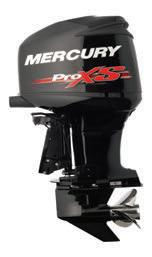
Connor’s and O’Brien Marina Pawcatuck, CT connorsandobrien.com
Defender Industries Inc. Waterford, CT defender.com O’Hara’s Landing Salisbury, CT oharaslanding.com
MASSACHUSETTS
Action Marine & Watersports Inc. Holyoke, MA actionmarineholyoke.com
Bill’s Outboard Motor Service Hingham, MA billsoutboard.com

Captain Bub’s Marine Inc. Lakeville, MA captainbubsmarine.com
Doug Russell Marine Worcester, MA WorcesterBoating.com
Essex Marina LLC. Essex, MA essexmarinallc.com
McLellan Brothers Inc. Everett, MA mclellanbrosinc.com
Merrimac Marine Supply Methuen, MA merrimacmarine.com
Nauset Marine-Orleans Orleans, MA nausetmarine.com
Obsession Boats East Falmouth, MA capecodboatcenter.com
Portside Marine Danvers, MA portsidemarine.us
Riverfront Marine Sports Inc. Salisbury, MA riverfrontmarine.com
South Attleboro Marine North Attleboro, MA www.sammarine.com
Wareham Boat Yard W. Wareham, MA wareham-boatyard-marina.com
Dover Marine Dover, NH dovermarine.com
Winnisquam Marine Belmont, NH winnisquammarine.com
RHODE ISLAND
Billington Cove Marina Inc. Wakefield, RI bcoveyc.com
Jamestown Distributors Bristol, RI jamestowndistributors.com

nwsportsmanmag.com | MARCH 2024 Northwest Sportsman 121 THEY WRITE COUNTRY SONGS ABOUT MORNINGS LIKE THIS.
you
Learn more at
your
It’s a glorious sunrise, viewed in fast forward thanks to the power of your 250 ProXS. Because
need to get there while the fish are still eating breakfast.
mercurymarine.com or visit
local dealer, today. CONNECTICUT
NEW HAMPSHIRE
BUT AT 70 MPH YOU CAN’T HEAR THEM. Master Marine Boat Center, Inc. 503 Jacks Lane Mt Vernon, WA 98273 (360) 336-2176 www.mastermarine.com Everett Bayside Marine 1111 Craftsman Way Everett, WA 98201 (425) 252-3088 www.baysidemarine.com


122 Northwest Sportsman MARCH 2024 | nwsportsmanmag.com

It might challenge your eyesight to tie on a size 10 to 20 chironomid, and fishing them can be like watching paint dry, but these little midge larvae imitations can be a productive fly to try for trout in early spring. (JASON BROOKS)
Chironomids, The Tiny Bug Trout Love
 By Jason Brooks
By Jason Brooks
Making my way down the steep embankment to the shoreline of Central Washington’s famed Lake Lenore one mid-March day, I was
surprised to see a ring of shelf ice still clinging to the rocks. An older gentleman was there and had kicked holes in the ice to wade out into the lake. Following suit, I made a bit of a ruckus trying to get to the open water too and apologized for my splashing and the noise otherwise disrupting the peaceful morning there in
lower Grand Coulee.
Trying not to encroach on his fishing, I began to cast out and strip in the black leech pattern that most anglers used in the shallows at the north end’s state access site. Lenore, which opens to angling March 1, has no outlet and its waters are highly alkaline, common in arid
nwsportsmanmag.com | MARCH 2024 Northwest Sportsman 123 COLUMN
NW PURSUITS
areas east of the Cascades in Washington and Oregon. This part of the lake is a wellknown spot for large Lahontan cutthroat in early spring. The trout cruise through the shallows, which feature a thick mud bottom, in search of aquatic insects emerging after months of dormancy.
This particular March day’s unusually cold morning meant no hatch would be occurring and my leech pattern mimicked
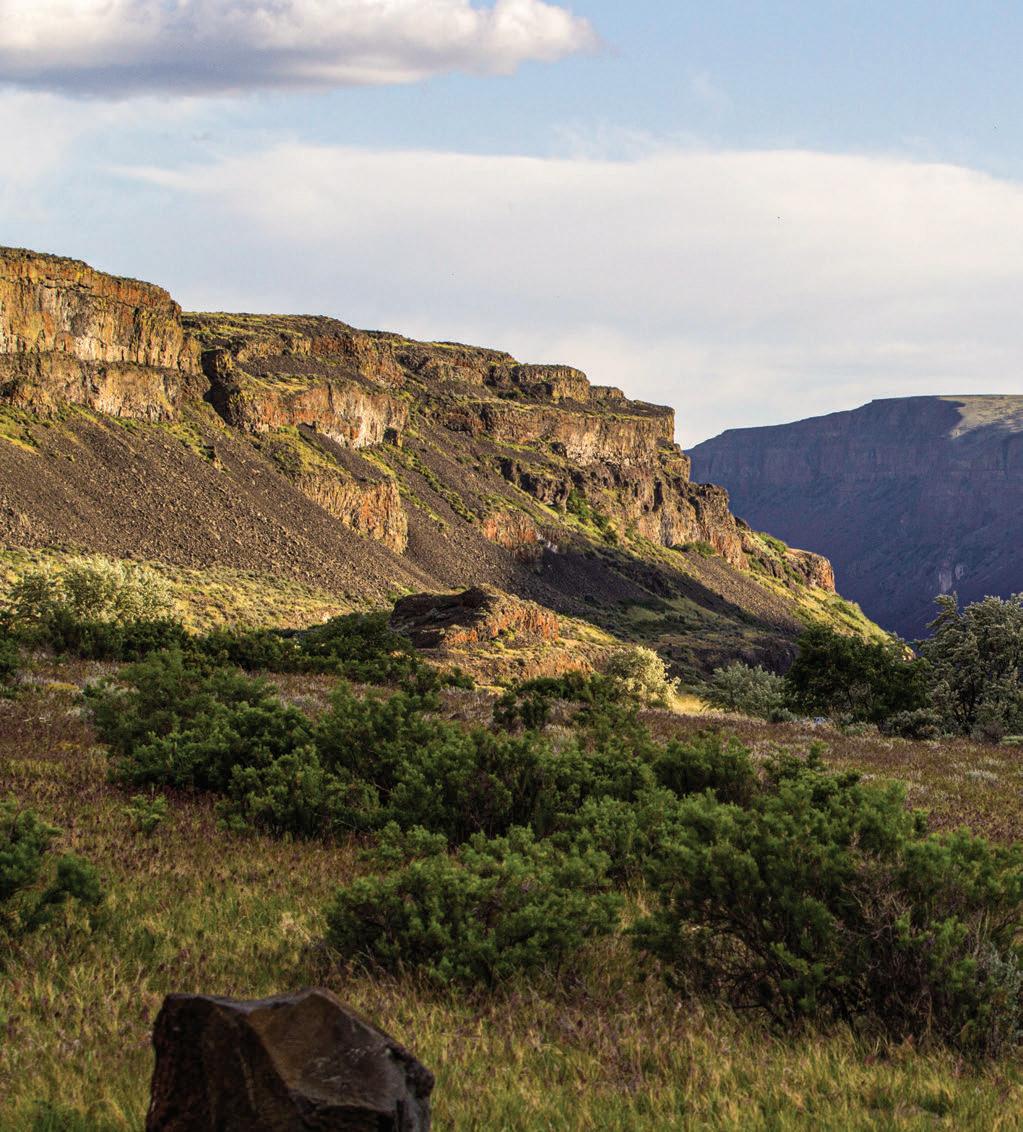
more of a damselfly nymph, or even a polliwog, than an actual leech, though it wouldn’t surprise me if any of the bloodsuckers did live in the lake.
The elderly man next to me soon hooked a fish and fought it to his handheld net. After releasing the cutt, he was soon casting his 5-weight fly rod again. I tucked my rod under my arm and watched him for a while, noting how he would cast and
then let the line sit on top of the water before eventually taking a small handful of line and creeping it in, inches or less at a time. It felt like a single cast lasted for hours, but a quick lift of the rod told me he had hooked another fish.
This time when he dropped the net I asked the telltale question in hopes he would be kind enough to let me know what fly he was using.
124 Northwest Sportsman MARCH 2024 | nwsportsmanmag.com COLUMN
Chironomids are strongly associated with Central Washington’s Lake Lenore and other alkaline waters, where Lahontan cutthroat cruise the shores in early spring looking for wriggling chironomids as they emerge from the mud. But the patterns can be effective at many other trout waters too. (TIFFANY VON ARNIM, FLICKR, CC BY 2.0)
The simple reply: “Black size 10 chironomid.”
Apparently the look on my face said more than the word I muttered –“Chironomid?!” He sidestepped over to my spot and showed me the most simple of flies, a black size 10 chironomid, which is a hook wrapped in black thread with a small white tuft near the eye and a single strand of white spiraled towards the point.
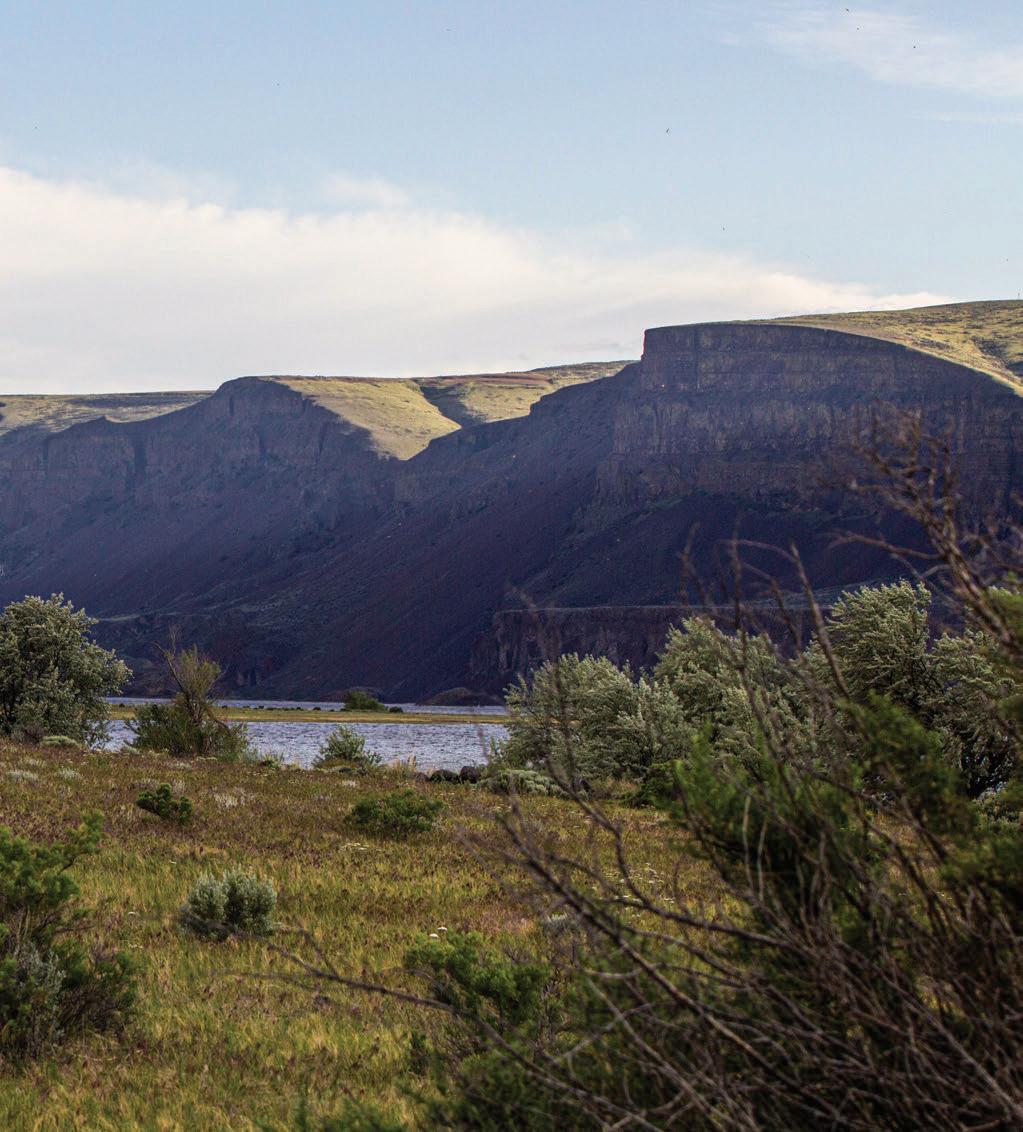
THIS BUG OF sorts is one of an estimated 10,000 varieties of midge larvae found all around the world, the adult stage of which looks a lot like a mosquito but it doesn’t bite or cause annoyingly itchy welts. When asking around fly shops about midges, you will get different answers based on what part of the country or even state where you are fishing. This is because in North America, there are about 1,100 different
bugs in the midge family, all of which start out as a chironomid in the larvae stage. This is also why it is important to know what size and color the fish are biting on a given day, as it all depends on which midge is in the water you are fishing.
Trout love chironomids and if you catch a fish and can examine its stomach contents, this will tell you what they are feeding on, including the size and color of
nwsportsmanmag.com | MARCH 2024 Northwest Sportsman 125
the chironomid to use.
Arid regions, where cattle ranches reach the shorelines and hard minerals are prevalent, make for a perfect environment for the lifecycle of a chironomid. The same goes for most lakes next to developments, where runoff creates not so clean water. Aquatic bugs prefer algae and bacteria, as this is what they feed on. Lahontan cutts thrive in these waters, but lakes where other trout species are common also have chironomids. This is what makes them a top food source and why you should be mimicking them, especially in early spring
as the fish cruise along looking for midge larvae emerging from the mud.
BACK TO THE shores of Lake Lenore, where I learned to fish chironomid patterns. The water is clear enough to see the Lahontans swimming along, especially if you stand still long enough that they get used to you. The telltale sign of a passing fish is a flash of the white flesh inside their mouth. Fish swimming by often open their jaws wide to scoop up chironomids. This behavior provides insight to the angler on how to present their flies properly.
The life of a chironomid is boring. It basically wiggles its way out of the mud, then floats suspended in the water, wriggling around a bit but pretty much letting the currents, often powered by springtime winds, push them around. They can live in the larvae stage for up to three years, but once they become adult midges flying away, they only live a few weeks.
Since chironomids just suspend, the fly pattern must be fished the same way. It can be very boring – well, unless you find hungry fish. Years ago, while trout fishing on a lowland lakes general opener in late

126 Northwest Sportsman MARCH 2024 | nwsportsmanmag.com COLUMN
The secret to working a chironomid pattern is to use a very … very … very slow retrieve, pulling in or reeling up just inches of line at a time. The flies are typically used with a strike indicator on the upper leader. (JASON BROOKS)


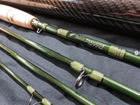
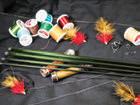
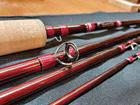


nwsportsmanmag.com | MARCH 2024 Northwest Sportsman 127 Handcrafted in Colorado yellowfinrods.com
April, we watched a guy in a bass boat go flying by. He cruised quickly to a shallow cove and once stopped, he broke out a fly rod. We trolled by him several times, noting that the flat-decked bass boat actually was the perfect platform to fly fish from. His need for speed apparently was to offset his style of fishing, which was to cast out a chironomid on a floating line with a strike indicator – a fancy way to say a small foam bobber – and let it sit. But each time we passed by he was fighting a fish. Once you find where the trout are feeding on chironomids, it can be one of the most productive ways to catch them.
MOST CHIRONOMIDS ARE fished using a fly rod with floating line or a very slow sinking line, depending on the depth of the lake. If legal to do so, you can increase your catch rate by using a surgeon’s knot and running a long dropper line to a second chironomid, doubling the flies on your line. For fishing deep water, anglers
often use a pattern that is a bit heavier, such as ones tied with a beadhead or that use wire instead of thread to make the body segment pattern, which is often a contrasting color stripe.
If you don’t have a fly rod, you can still cast chironomids with a light spinning outfit using a sliding float and a weight or a few split shot, but keep in mind that trout feed on chironomids by scooping them with their mouth. It is not a grab-and-gotype bite like when using traditional baits such as eggs, worms or PowerBait, or even other flies like the leech I had been trying that cold March day.
Chironomids are one of the best ways to get into fly fishing. You only cast when you get bored of watching the indicator or if a breeze blows your line off course, so it is not like you need to cast every few seconds like you would when fishing a stream and your fly has passed through the drift.
The patterns are small, making them a challenge to tie on a small hook and lash to your tippet, or leader. The size 10 black
pattern used all those years ago is the simplest and largest one you will probably need. Most diehard chironomid anglers have boxes of them tied in sizes from 10 down to 20 or smaller. I can’t see well enough to tie a size 20 hook to my tippet, so most of mine are larger. If you have a handful in sizes 12 to 16 and in various colors, you will do well.
While there are thousands of different midge species, red is a very popular color and anglers often use a “blood worm,” a type of chironomid that should not to be confused with the San Juan Worm pattern, which is of the worm or parasite family. When you find the color and size of chironomid that works, expect to catch fish.
THE SMALL LARVAE with the funny long name is a top natural food source for trout. With March waters still being cold, fish will be looking for an easy meal to fill their stomachs. Be sure to give the chironomid a try and while at it, practice a few fly casts too. NS
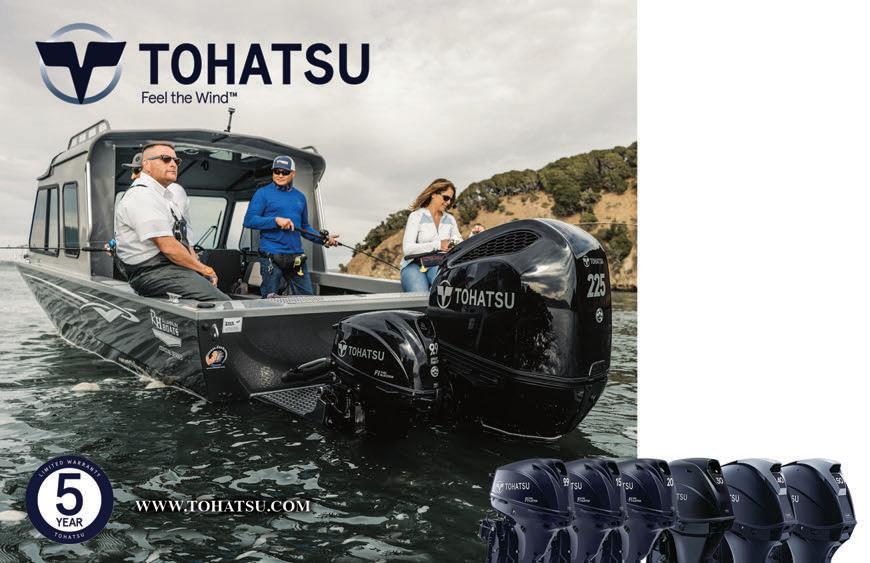
OREGON
EUGENE
Maxxum Marine
(541) 686-3572
1700 State Highway 99 N www.maxxummarine.com
128 Northwest Sportsman MARCH 2024 | nwsportsmanmag.com COLUMN
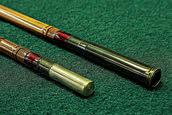

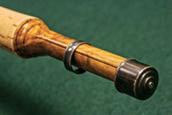

Randy Schneider

HIGH PLAINS RODS
FINE HANDCRAFTED BAMBOO FLY RODS

“We look at Sweetgrass Rods as our opportunity to contribute to the fine tradition of bamboo fly rod building as well as to share our beliefs in what can be accomplished if we all work together for a common good.”
GLENN BRACKETT FOUNDER / MASTER CRAFTSMAN
CUSTOM & STOCK RODS
highplainsrods@aol.com
(719) 331-9017
highplainsrods.com
(406) 782-5552
Sweetgrassrods@gmail.com
sweetgrassrods.com


nwsportsmanmag.com | MARCH 2024 Northwest Sportsman 129
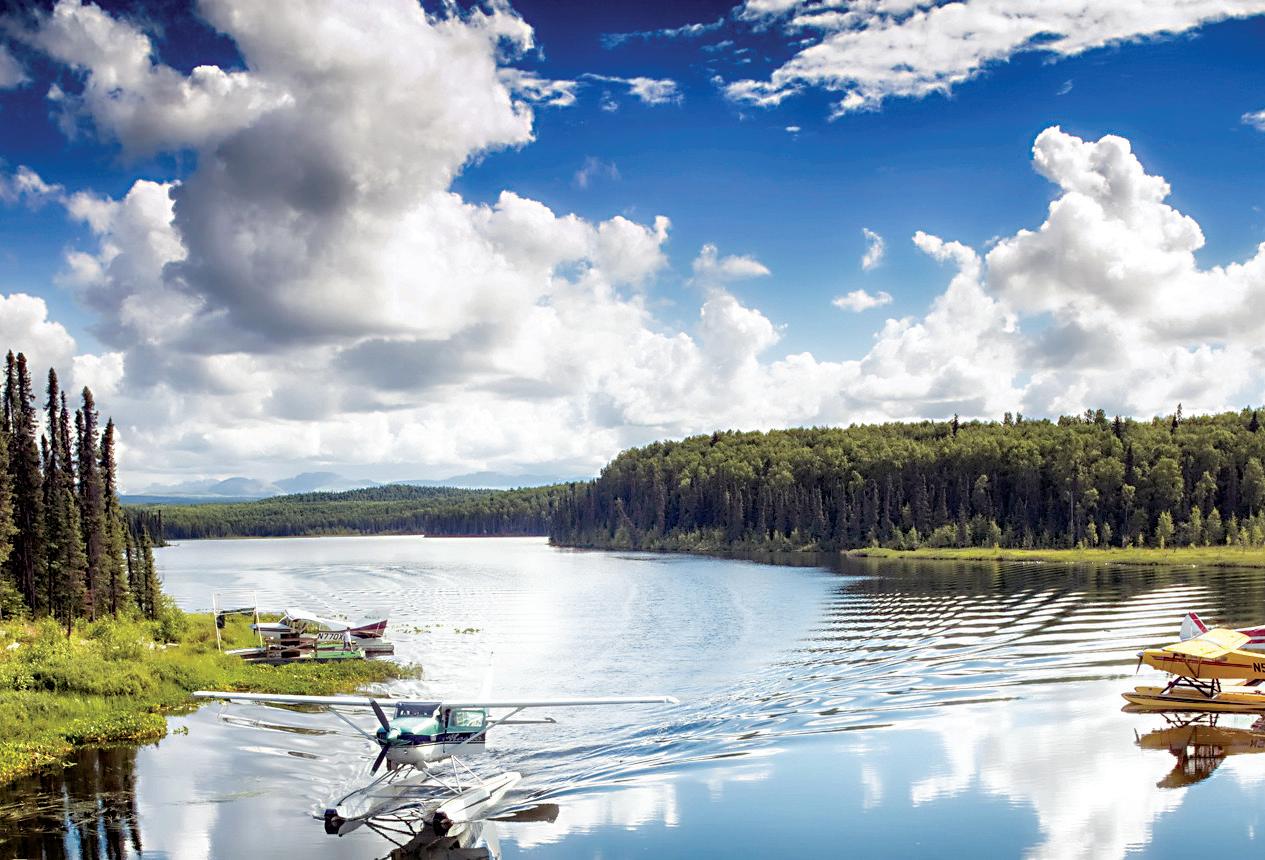

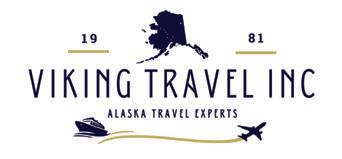

OF ALASKA LODGES/ CHARTERS 800-327-2571 • AlaskaFerry.com Viking Travel is a full-service travel agency that has been around for 42 years. We are here to help you with your Alaskan Adventure. Alaska is big and can be confusing to navigate, so let us alleviate the stress that comes along with planning your fishing, hunting or sightseeing trip to Alaska!
BEST
DESTINATION ALASKA


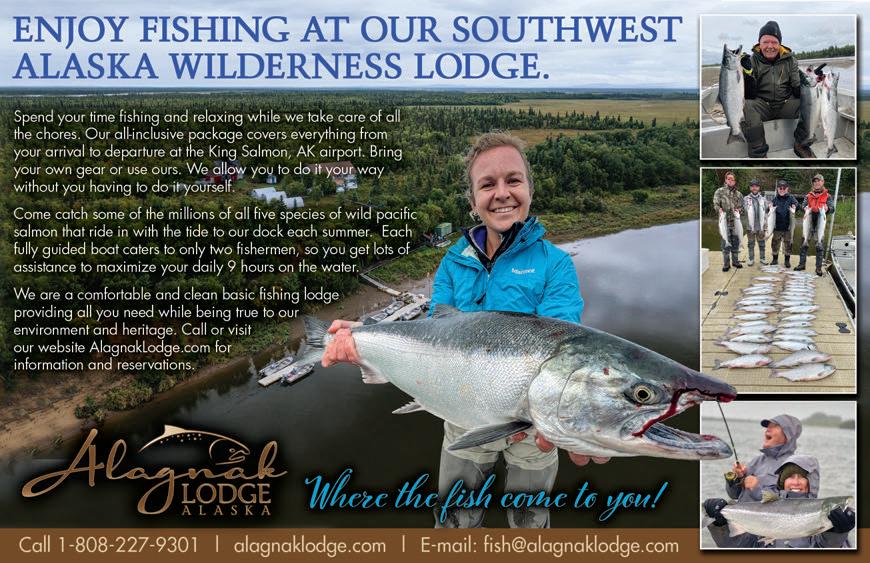



DESTINATION ALASKA
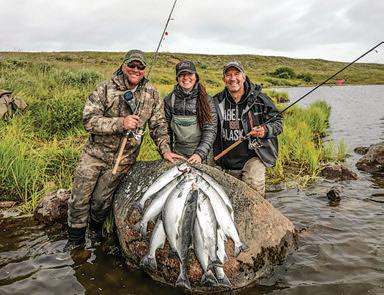

Remote, Comfortable & Affordable
Our remote Alaskan fishing lodge is situated on the upper stretches of the beautiful Egegik River. You’ll watch some of Alaska’s most stunning sunrises, complete with a distant, active volcano. We are a fishing camp specializing in coho fishing, brown bear viewing, and flyout fishing adventures to even more remote destinations in the Last Frontier.
Coho Fishing The Egegik River
The Egegik River is touted by many experienced anglers as the best silver salmon stream in all of Alaska. Becharof Lodge On The Egegik River was the first fishing lodge to become established on the breathtaking Egegik River, and is less than a 5 minute boat ride from some of the best fishing holes on the entire river.
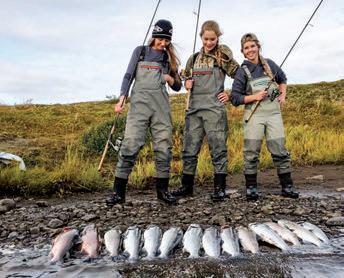

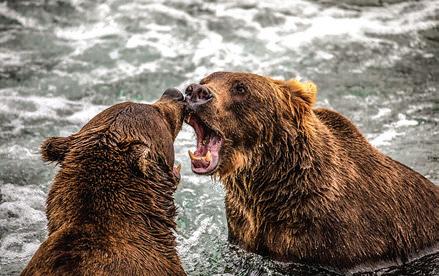
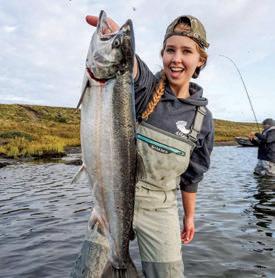
Now Booking for 2024 Coho Fishing Trips Included in your fishing trip:
5 days fishing/5 nights stay in camp
Experienced, fully guided fishing.
Comfortable cabins furnished with beds, cozy comforters & bedding.
Home cooked meals, snacks, and nonalcoholic beverages.
Transportation from the lodge to prime fishing holes on the Egegik River.
Freezing and vacuum sealing of your fish, up to 50 lbs., per angler. $4,850per person Includes round trip charter from King Salmon. Call for more details. becharoflodgefishing.com Book Your Trip Today! Mark Korpi: 503-741-1333 or 503 298 9686 George Joy: 360-562-7701 Email: becharoffishing@gmail.com
•
•
•
•
•
•



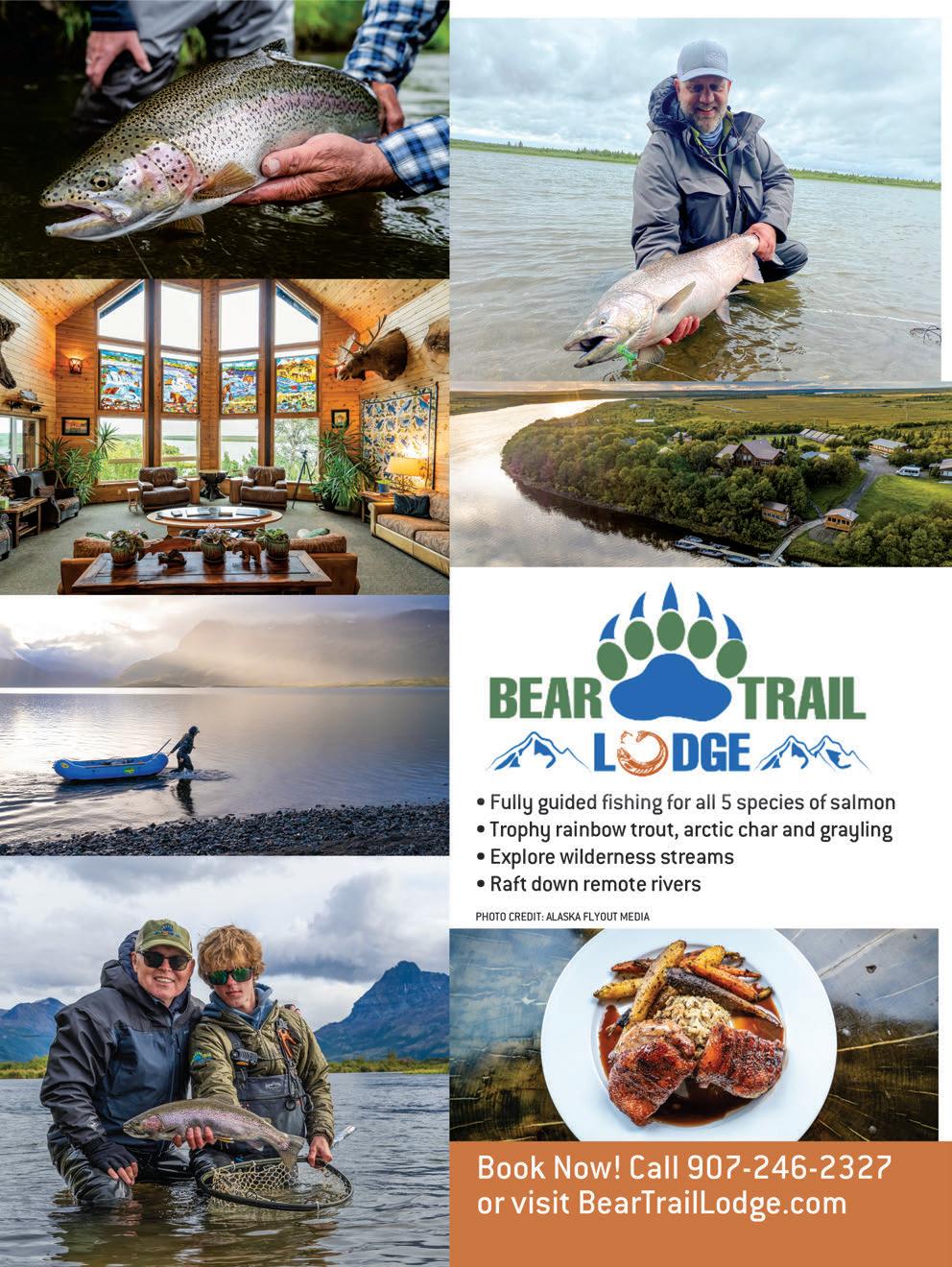


DESTINATION ALASKA
THE PREMIER SPORTING GOODS STORE ON PRINCE OF WALES ISLAND FOR ALL YOUR FISHING, HUNTING, AND CAMPING NEEDS!
KNOWLEDGEABLE STAFF WILL LET YOU KNOW WHERE, WHEN AND HOW!

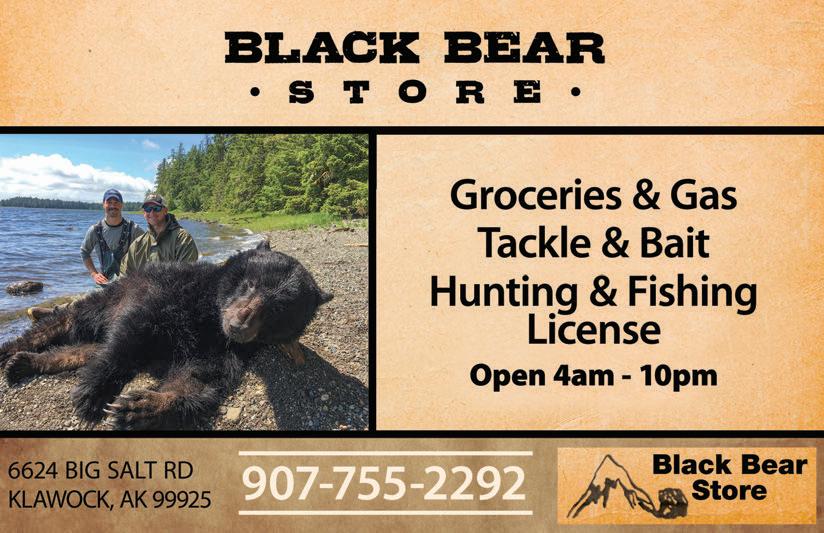

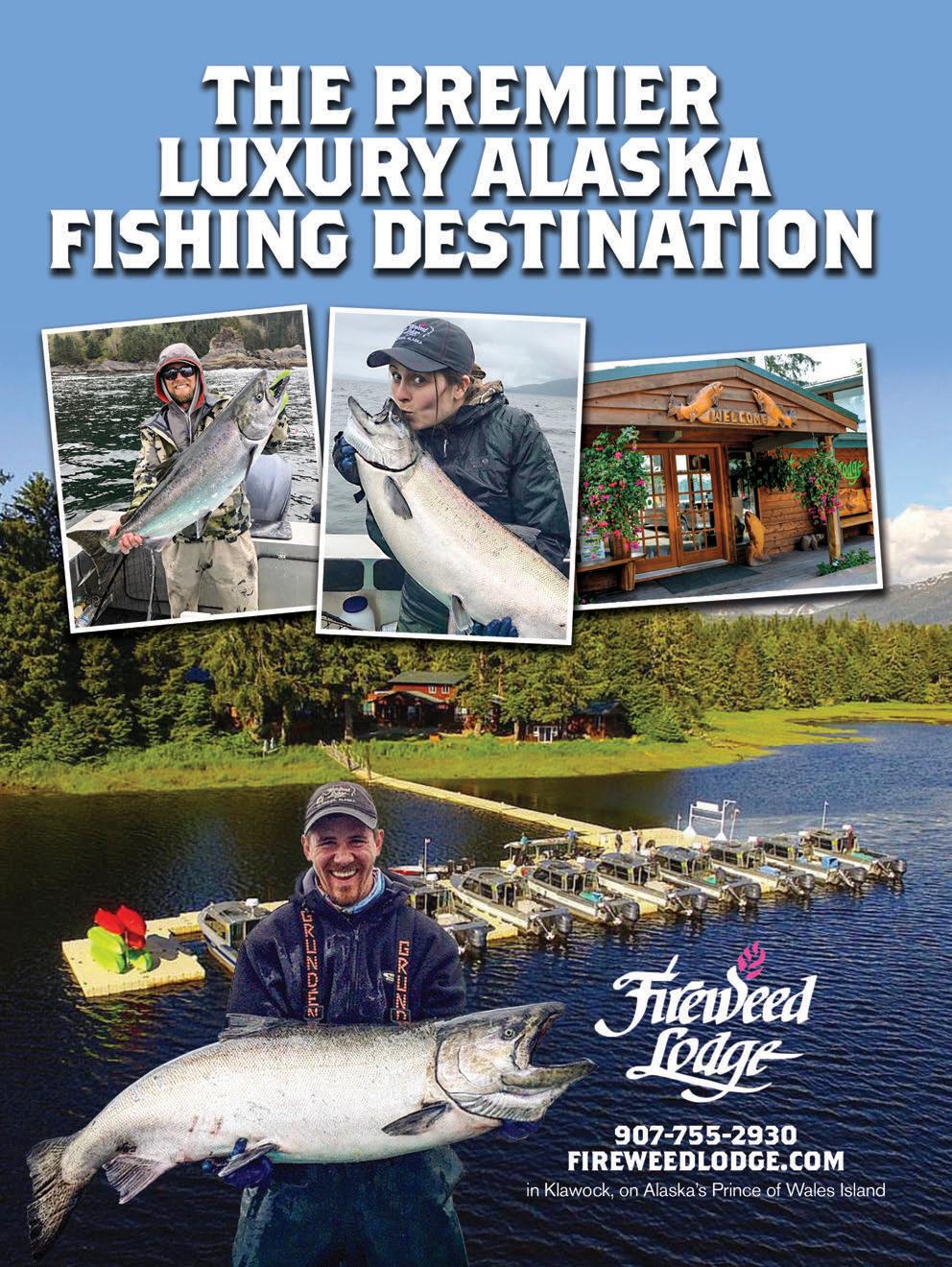
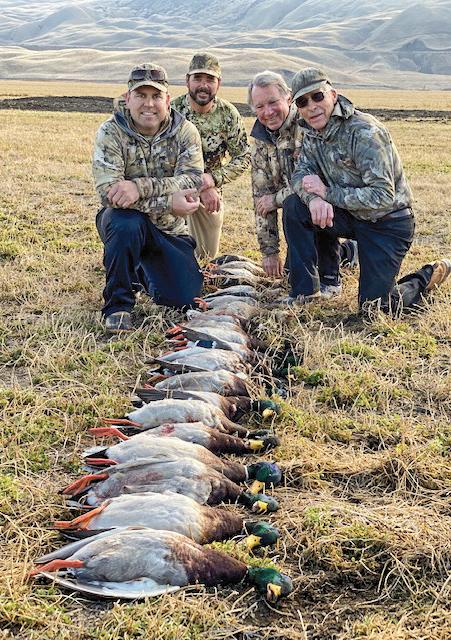
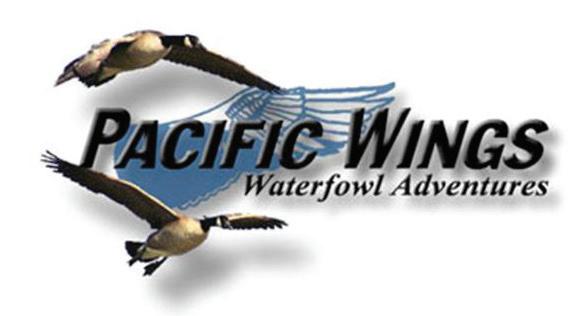

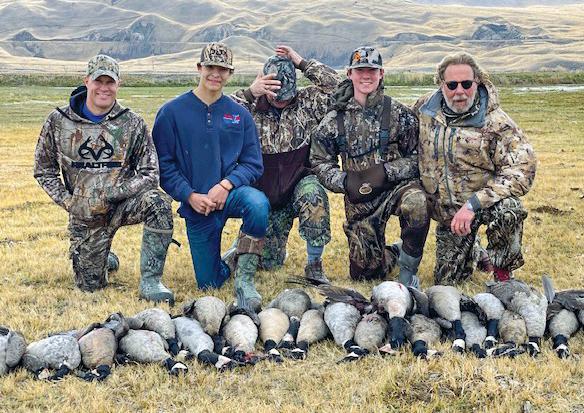
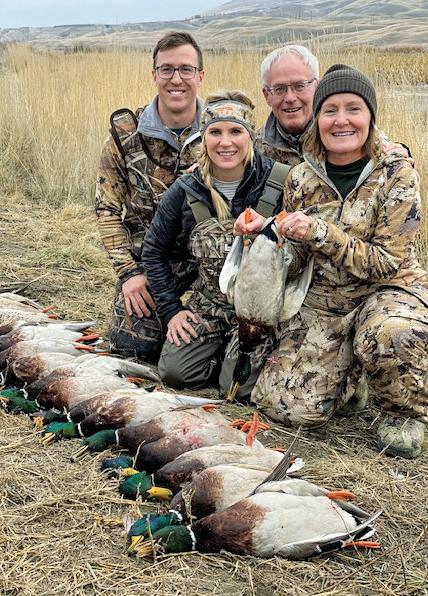




Also Available: Hunts in Saskatchewan, Canada! • Mallard Corn Pond Hunting — Total of 75 acres of flooded corn ponds for the 24-25 season in addition to our many other flooded ponds • Freeze Up No Problem! Aerators & Springs in Most Ponds E. Washington Tri-Cities • 509-967-2303 • pacific-wings.net See our videos on YouTube @PacificWingsHunting and Jay Goble Check Us Out On We normally average 6 ducks per person during a season


Upland Estate Hunts: What They Have To Offer
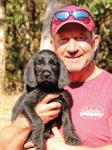
FGUN DOGGIN’ 101
By Scott Haugen
or many of us, there’s a threestage progression to the end of bird hunting season. It starts with the final days of upland bird and duck hunting in January. If you’re a waterfowl hunter, late winter and early spring goose hunts buy you a bit more time. But for some of us, the end of this month brings a third and final close to the trigger-pulling fun with our canine hunting companions, and that’s upland bird hunting on private-land preserves.
Preserves, estate hunts, private sanctuaries – whatever you want to call them, they have a lot to offer, and hunting on them lasts until the end of March in many states. I have several friends who detest hunting on preserves for fear it will ruin their dogs. I know of other seasoned hunters who love this month for the added joy estate hunts lend. “I love chukar hunting more than anything, but my dog and I always have a good time on a couple low-key preserve hunts every March before the season closes,” shared one buddy. “We just go and have fun, just her and I.”
IT REALLY COMES down to what you want from the experience. Early last fall, a buddy invited me on a preserve hunt. His goal was to handle his English pointer pup while I shot birds. If the dog did its job holding point, I shot. If the dog got antsy and broke, I didn’t shoot – that’s what my buddy was trying to fix. By him controlling the dog and constantly communicating with it while on point as I closed in, my friend was able to calm his pup and attain the desired behavior within a few short hours. By the end of the day he was wielding a gun and his pup was hunting wonderfully.

nwsportsmanmag.com | MARCH 2024 Northwest Sportsman 137
COLUMN
Hunting on an upland bird preserve guarantees encounters, meaning if you need some one-on-one time to fix something with your dog, or work with two dogs at the same time, this could be the place. (SCOTT HAUGEN)
COLUMN
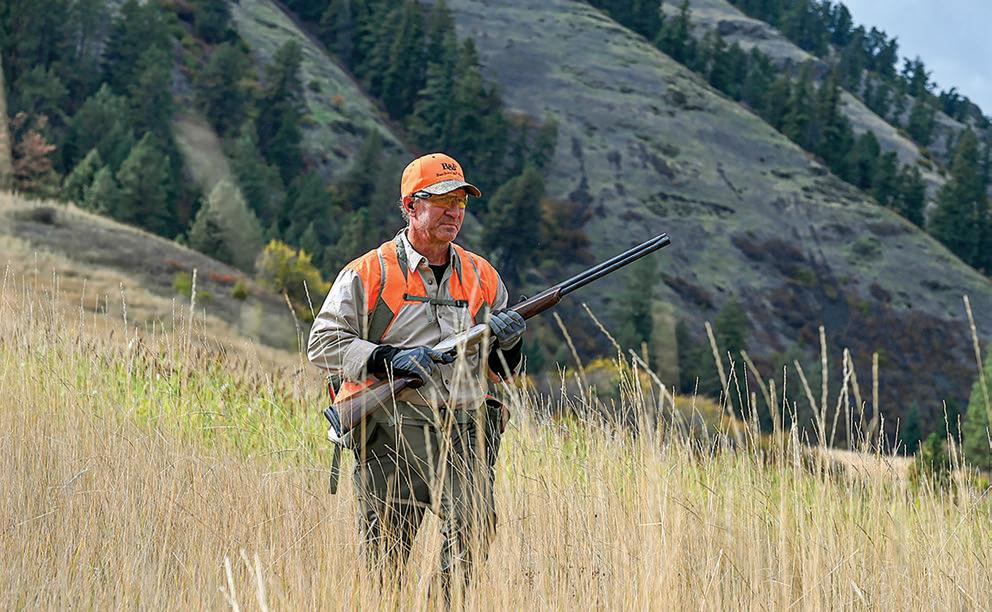
One day of hunting on a preserve can lead to more shot opportunities than an entire season on public lands. Author Scott Haugen was more than impressed with this Benelli 828U and Baschieri & Pellagri upland loads he used on both preserves and more challenging hunts. (SCOTT HAUGEN)
My friend’s pup was highly competitive when with other dogs. To fix it, he knew it had to be just the two of them working together on a hunt, which is where I came in as the shooter. He’d tried planting birds to fix his dog, but it didn’t work. He needed a real hunting situation where the dog was intense, where someone else was pulling the trigger and there was lots of repetition. The preserve delivered just what he’d hoped.
I hunted with another friend last fall who worked his two dogs. The older dog was 10 and the other one was an 8-monthold pup it had sired. On this hunt, my friend’s goal was to use the older dog to teach the pup.
“I’m a firm believer dogs learn so much by simply watching one another,” said my buddy. “A pup from a good bloodline will watch and mimic what an older dog is doing, and if I can get my old dog to do his thing, the pup will quickly learn what I expect. The fact I can go on a preserve a few times a year and have 20 or more encounters each day greatly flattens the learning curve for us and
allows me to reinforce the behaviors I want to see in my dogs.”
PRESERVES ARE IDEAL for trying out a new dog vest or e-collar. You’ll learn rather quickly how pieces of gear fit and how functional they are, and not just for your dog, but for you too.
Last fall, I tried a new pair of hiking boots and some clothes on a preserve hunt. I’ve worn Meindl boots for years and their new EuroLight Hunter was better than I even imagined. I wore the uninsulated boots and they were comfy and durable right out of the box. Very little break-in was needed and I wore them on multiple hunts from Oregon to Nebraska.
I’d never worn Orvis hunting clothes until last season. I was in need of a new hunting vest and chose their Pro LT, which rocked. It’s so easy to custom fit, has multiple pockets with quick access and it held more gear and birds than I thought it would. I used it on multiple hunts and I’ll be taking it to Alaska with me next fall on a
ptarmigan hunting adventure.
I also wore Orvis’s Pro Upland Brush Pant and Midweight Shooting Shirt and loved their comfort and functionality. I hunted in them in the chukar hills, pheasant flats, grouse prairies and deciduous habitats of the Pacific Northwest for quail and grouse, and they lived up to the hype.
Estate hunts are also a good place to try guns and loads. While photographing elk last September, I shredded one of my rotator cuffs. With bird season in full swing, I delayed the surgery. For the first few weeks after the injury, I couldn’t shoulder a gun using both hands. This meant I had to find something I could shoulder, swing and shoot with one hand. Enter Benelli’s 828U in 20-gauge, which I tried on an estate hunt because it gave me lots of repetition at every angle. I loved this gun from the start because its low-profile, ergonomic fit felt like an extension of my hand. It was fast-handling and easy to manipulate, shoot and follow through with.
Looking for a lighter-recoil load, I shot
138 Northwest Sportsman MARCH 2024 | nwsportsmanmag.com

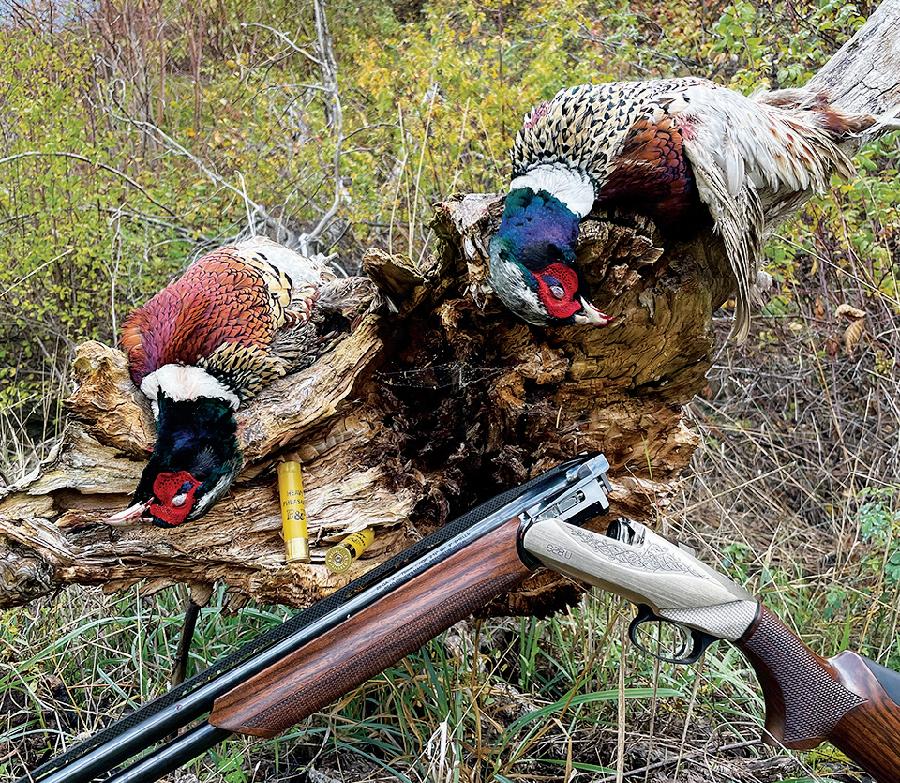
Baschieri & Pellagri 21/2-inch 12-gauge loads. I used these in an old shotgun that’s been in the family since the early 1900s because I feared a magnum load might cause damage to the already-stressed gun. I was so taken by the loads that I then tried B&P’s 2¾-inch shell featuring 11/2 ounces of size 5 shot and stuck with that the rest of upland season. These shells shot smoothly and the 100-percent biodegradable wad held a tight pattern, which I loved.
IF YOU’RE LOOKING for an excuse to extend your upland hunting season, preserves may hold the answer. While estate bird hunts might not be for everyone, it’s easy to come up with at least one reason to try them. Who knows, you and your pup may come away with more than just valuable training. You might just have a fun time chasing lots of birds. NS
Editor’s note: Scott Haugen is a full-time writer. See his puppy training videos and learn more about his many books at scotthaugen.com and follow him on Instagram and Facebook.
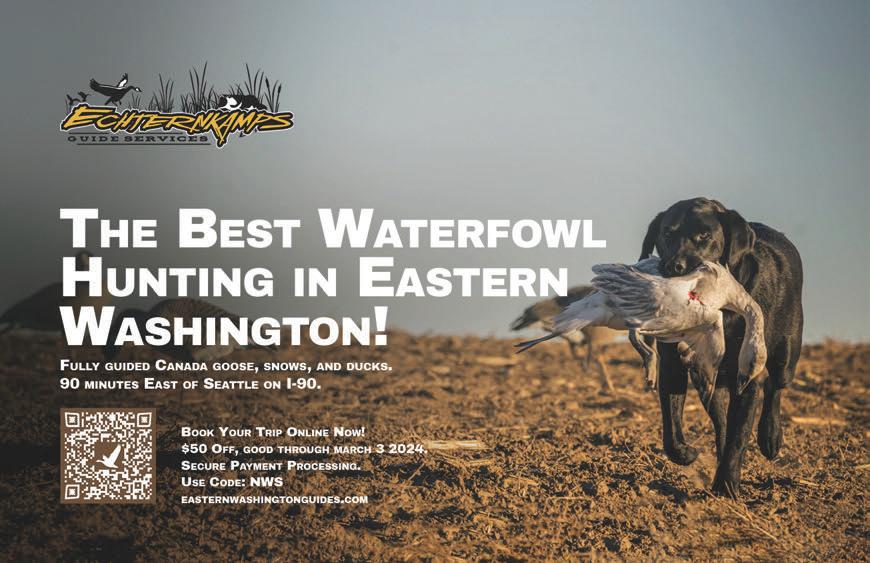
140 Northwest Sportsman MARCH 2024 | nwsportsmanmag.com
COLUMN
Upland bird hunting on private estates provides a good opportunity to not only test dog gear, but also gear you want to try out, be it clothes, gun loads, or ear and eye protection. (SCOTT HAUGEN)
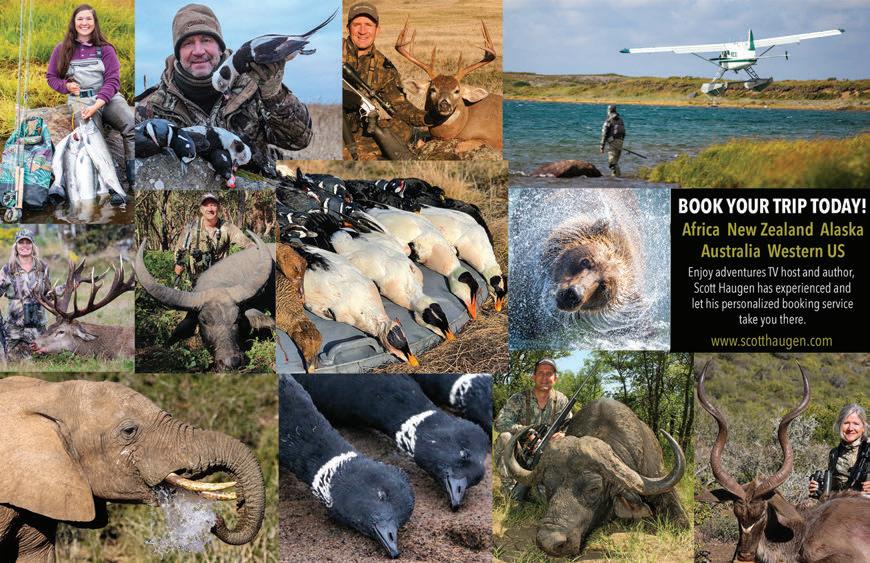

nwsportsmanmag.com | MARCH 2024 Northwest Sportsman 141


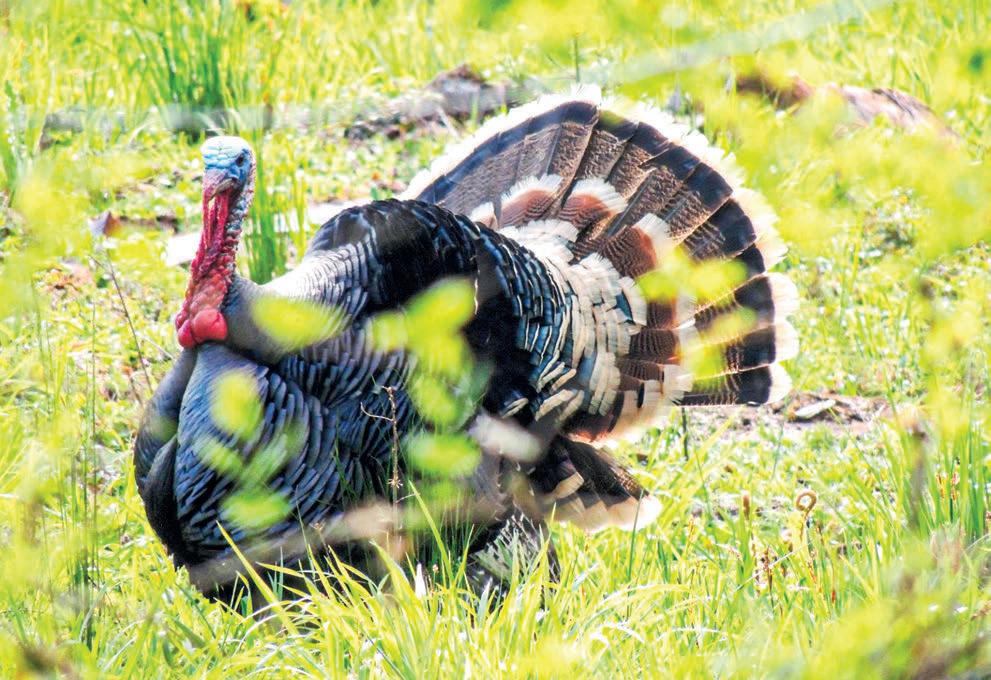
10 Tips For Spring Turkey Success
April’s openers will be here before you know it, so now’s the time to scout, make backup plans, prepare your gear and more.
By Troy Rodakowski
They don’t call me “Turkey Troy” for nothing. Spring is almost here and toms will soon be filling the oak savannahs, pastures, hills and mountains with gobbles as
they search for hens. Yes, it’s time to prepare to board the turkey train for yet another adventurous season! I’ve hunted turkeys for 30-plus years with great success and have found that just a few simple tips will greatly improve your odds and make your
hunts even more enjoyable.
1) HEAD AFIELD TO SCOUT NOW
No matter where you choose to hunt this spring, make sure to scout as much as you can prior to the season. Time in the field is priceless and necessary, so
nwsportsmanmag.com | MARCH 2024 Northwest Sportsman 143 HUNTING
Preparing for gobbler season now will go a long way toward success come next month's youth and general seasons. (TROY RODAKOWSKI)
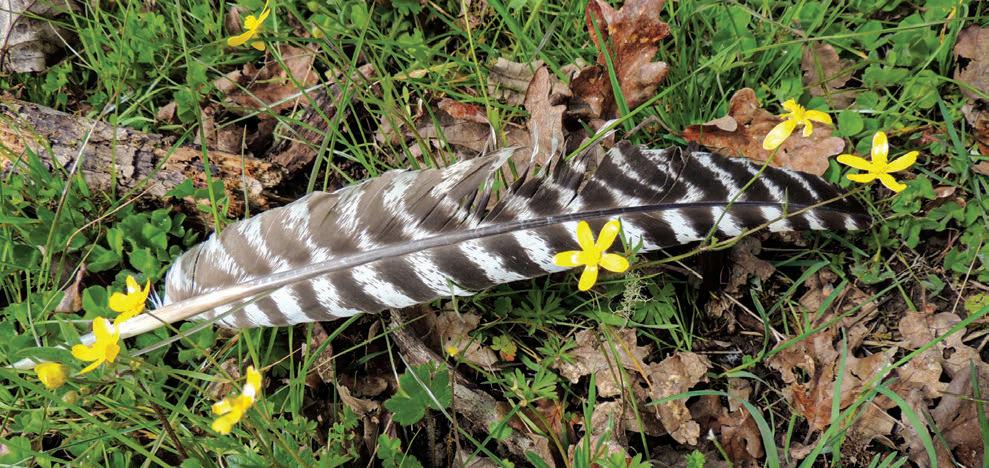
setting aside some days ahead of the opener will only benefit you in the planning of your coming hunt. There is a reason this is No. 1 on my list!
2) SCOUT OTHER WAYS TOO
Talk to biologists; research with maps, Google Earth and onX Maps; knock on doors and spend time out and about surveying the land you plan to hunt. Most people are willing to help give ideas of where they have seen birds and where you might want to look. Landowners with too many turkeys are usually more than happy to let you in on places birds like to frequent, or at least point you in the right direction. Biologists can give you excellent starting points, especially if you plan on hunting birds in the more mountainous regions of the Pacific Northwest.
3)
GET THE GEAR & PRACTICE WITH IT
Invest in some good decoys and calls, and make sure to practice as much as possible prior to season. Listen to seminars, YouTube videos, radio and TV shows, and podcasts to learn how to call and set up your decoys. You don’t have to be an expert caller to have success. I know several hunters
who don’t sound too great but manage to kill birds every season. Just taking a little time to practice can be the difference between notching a tag or going home empty-handed.
4) CAMO UP
Get ahold of some good camouflage. Turkeys’ top defense is their keen eyesight, so blending in is essential for success, whether you are a runand-gunner or a blind dweller. Turkeys can pick out movement or out-of-place objects over several hundred yards away, so using camo that blends in to your surroundings and minimizing your movements are key ingredients to success.
5) BUILD A BLIND EARLY
If you plan to hunt from a blind, make sure to get it set up well in advance of season, if possible. Turkeys oftentimes get into routines and if your blind becomes familiar scenery, you won’t have spooky birds to deal with. Also, make sure to use a blind that is easy to relocate, unless you feel like you have a good area to permanently work. Turkeys may change their patterns during the season, so being able to relocate is very important.
6) PLAN OUT PLANS B, C & D
Have options. I like to have at least three hunting options at my fingertips, since things can change in a hurry with other hunters, weather and accessibility. Bottom line: Do not be one of those folks asking for “spots” right before or during season. In the past, I have had locations secured on both private and public land that didn’t pan out due to the landowner allowing other hunters in or running equipment, logging, performing brush removal during season, etc., illustrating why backup plans are key.
7) PATIENCE IS CRITICAL
Make sure to pack plenty of patience and don’t give up too quickly on a situation with gobbling birds. Oftentimes, turkeys will come in silently or very slow. Birds that are “henned up” will tend to those hens and calling at the hens will occasionally bring in a longbeard in tow. Turkey hunting is not a sport of instant gratification; it takes work and time in order to find regular success.
8) GET IN SHAPE
Those mountain birds take work and lots of miles burning boot leather.
144 Northwest Sportsman MARCH 2024 | nwsportsmanmag.com HUNTING
Focus on finding turkey sign such as feathers, droppings, tracks in mud and other clues that the big birds are frequenting an area. (TROY RODAKOWSKI)

Don’t expect to be hiking those Pacific Northwest hills and canyons with ease if you don’t have your lungs and legs in at least decent shape. The worst feeling in the world is being out of breath, especially when hunting. Pace yourself and make sure to try and exercise prior to season.
9) PATTERN YOUR WEAPON
Whether it’s a gun or bow, you better practice and make sure you are proficient at putting enough pellets in the kill zone or broadheads through the vitals prior to hitting the woods. You may be shooting the same gun with the same loads or same bow

with the same broadheads as last year, but take a few shots to reconfirm that you are still in the kill zone. And if you happen to be using new ammo, a new gun, new bow, etc., know that it will take time to identify your effective range. Make sure to shoot enough to be comfortable with it.
10) ORGANIZE YOUR TURKEY VEST/GEAR
Dig out that vest, empty the pockets, run it through the wash and then go through your equipment. Make sure to repack gloves, extra shells, a face net and box chalk for your call. I like to have extra and various mouth diaphragms and a slate call as well. Additionally, I bring a crow call, owl hooter, water canteen, extra dry shirt, pair of pruners and a bird carrier. Don’t forget panty hose. Yes, panty hose, to drop that mounter bird in so its feathers stay in place. And remember bug spray! Ticks, mosquitos and biting flies can be almost unbearable in spring.
Yes, my vest weighs in around 30 pounds when carrying decoys, but it’s a small price to pay for success.
FINAL THOUGHTS
Doing your homework now will make your ride on the turkey train a lot smoother this spring. Believe me, I have had some rough seasons over the last 30-plus years and learned some valuable lessons. Regardless of what we already know, these smart birds always seem to teach us something new and find ways to humble us. But following these 10 simple tips will get you to where you need to be in order to find greater success this spring and beyond.
If you find yourself in a situation where you just don’t have time to scout or prepare, I suggest looking into hiring a guide. There are many guides who provide turkey hunts and are very successful. Going with a guide or another experienced hunter is also a great way to learn a few of the basics, especially if you are new to turkey hunting. NS
146 Northwest Sportsman MARCH 2024 | nwsportsmanmag.com HUNTING HUNTING
Longbeards are cautious characters, so taking up “Turkey Troy’s” 10 preseason pointers is a good start to outfoxing toms during the general spring hunt, which opens April 15, earlier for youth hunters. (TROY RODAKOWSKI)


nwsportsmanmag.com | MARCH 2024 Northwest Sportsman 147

Spring Turkey Nears And New Shotguns Are Ready

ON TARGET
By Dave Workman
The 2024 Shooting, Hunting and Outdoor Trade Show in January provided details that many a Northwest wild turkey hunter will find interesting, and Mossberg has announced several new shotguns to put longbeards in the bag.
The lineup seems to have something for just about any turkey hunter, young or old, big or small. I’ve got a bit of experience with Mossberg smoothbores. My Model 500 pumpgun has been a bird buster for decades and my Model 935 semiauto with the camo finish has proven itself up to any challenge.
But new this year from the legendary company are several models deserving of attention, and there are also some new Benelli semiautos that might draw your eye. Let’s look at them one by one.
THE MODEL 835 Ulti-Mag Turkey OpticReady Holosun combo 12-gauge is chambered for 3.5-inch magnums. This pump action shotgun has a 20-inch overbored barrel for dense patterns, and it is threaded for use with AccuMag choke tubes. The gun comes with an extended Ulti-Full choke tube and factory-mounted Holosun HS407K micro dot sight.
The MSRP is $895.
Next up is a shotgun for young hunters, the Model 500 Turkey Optic-Ready combo in .410 bore. It is chambered for 3-inch shells, has a 20-inch vent rib barrel compatible with the AccuChoke and it comes with an extended X-Full choke tube. There’s a factory-mounted Holosun HS407K micro dot sight.
MSRP is $844.
Mossberg’s 500 Super Bantam Turkey Optic-Ready Holosun combo 20-gauge has an adjustable length-of-pull stock,

nwsportsmanmag.com | MARCH 2024 Northwest Sportsman 149 COLUMN
If you’re in the market for a new gobbler gun to put down longbeards like this beautiful bird Samantha Gaudette bagged last season, Dave Workman has some ideas from SHOT Show. (KNIFE PHOTO CONTEST)


featuring 1-inch spacers to let the gun either grow with the user or be adjustable for several different users. It is chambered for 3-inch 20-gauge shells and has a 20inch vent rib AccuChoke-compatible barrel, which comes with an extended X-Full choke tube. This one has a full camo finish and comes from the factory with the Holosun HS407K micro dot sight already mounted.
It also has an MSRP of $844.
Another pump-action is the Model 500 Turkey Optic-Ready Holosun combo 20-gauge. Also chambered for 3-inch shells, this one has the 20-inch vent rib barrel with extended X-Factor Ported Choke Tube. The Holosun micro dot sight comes with the gun, which has the same MSRP as the Bantam model.
For semiauto fans, Mossberg’s Model 940 Pro Turkey Holosun Micro Dot combo should find a quick following. This 12-gauge self-loader wears a full camo finish, it features sling swivel studs and is drilled and tapped on the receiver. It comes from the box with the Holosun HS407K micro dot sight, and the 18.5-
inch barrel is fitted with a front fiber optic sight. The shotgun is supplied with a ported X-Factor XX-Full choke tube and is compatible with other AccuChoke tubes.
The MSRP is $1,406.
The Model 940 features a gas system capable of firing up to 1,500 rounds between cleanings and it is chambered for 3-inch magnums launching a shot charge weighing at least 1¹/8 ounces, which is generally what most turkey gunners use.
The Holosun Micro Dot sight has a 6 MOA dot reticle and 12 brightness levels. It offers unlimited eye relief and can operate up to 50,000 hours before a battery change.
Prefer double-barrel shotguns? Mossberg International has announced a trio of Silver Reserve Eventide Turkey guns, in 12-, 20- and 28-gauge with 3-inch chambers and 20-inch vent rib stack barrels. They are finished in Mossy Oak Greenleaf camo and wear tough synthetic stocks and forends. Each gun has a 14-inch length-of-pull and fiber optic front sights.
The Silver Reserve 12-gauge can accommodate 3.5-inch shells and the barrels are threaded for choke tubes. The gun comes with two extended tubes. The 20- and 28-gauge models feature 3-inch chambers and they come with extended choke tubes and front fiber optic sights.
MSRP on all three models is $927.
MOSSBERG ISN’T THE only outfit with new shotguns. Benelli announced a Super Black Eagle 3 Compact, with a 26-inch Crio-treated barrel. The SBE 3 is offered in 12-, 20- and 28-gauge versions, chambered for 2.75- and 3-inch shells. They all come with black synthetic stocks and they are designed around Benelli’s proven Inertia Driven system.
Benelli provides extended improved cylinder and modified choke tubes and flush cylinder, improved modified and full Crio choke tubes. They are fitted with Comfort Tech 3 recoil pads and come with drop and cast sim kits, and a customfitted hard case.
All models have an MSRP of $1,949.
Hunters might also want to check out

150 Northwest Sportsman MARCH 2024 | nwsportsmanmag.com COLUMN
Mossberg Model 835 Ulti-Mag Turkey Optic-Ready Holosun combo 12-gauge pump shotgun. (MOSSBERG)
Mossberg Model 500 Super Bantam Turkey Optic-Ready Holosun combo 20-gauge pump shotgun. (MOSSBERG)


nwsportsmanmag.com | MARCH 2024 Northwest Sportsman 151
the new Finisher Custom Cut gloves from Blocker Outdoors. They feature either Mossy Oak Greenleaf or Mossy Oak Bottomland camo. Made from breathable polyester, they have silicone printed palms for a firm grip, and an S3 anti-microbial finish to prevent odors.
These gloves feature unique stitching lines that allow the user to actually cut the tips off the fingers to allow exposure of your gun hand fingers. These gloves are available in medium, large and extralarge sizes.
They have an MSRP of $24.95.
AS FOR TURKEYS themselves, the general spring season in Washington, Oregon and Idaho opens April 15. Between now and then, hunters will have a chance to do some scouting, and I’ll share a couple bits of intel I came across last fall.
On the south side of Central Washington’s South Cle Elum Ridge, along the road that follows the upper reaches of Taneum Creek all the way
down to the junction with the main road at Taneum Campground, I ran into several groups of turkeys.
Also, I saw a lot of turkeys along the nearby upper Teanaway River valley, and serious turkey hunters just might want to scout those areas over the next few weeks to see how and where those birds wintered and what they’re up to now.
In the meantime, now would be a good time to have a rifle along on your travels just in case you run into a coyote, and if you’re interested in conking a few yodel dogs, get them before elk and deer start giving birth to their calves and fawns. Spring starts later this month, and with it will come the young ones upon which ’yotes prey.
And don’t forget that Washington rabbit hunting wraps up March 15. I often have a .22-caliber pistol handy in the truck “just in case.”
As the weather improves and one can get back outside in more pleasant conditions, it’s a good time to be visiting
the range. Get into the habit of shooting at least once each month through spring, with its extended daylight hours.
ALSO, REMEMBER THAT Washington multiseason deer and elk tag applications may be submitted until March 31.
The state Department of Fish and Wildlife started encouraging hunters to apply back in early February. They remind hunters, “If selected for the 2024 Multiseason tag, you can hunt in any open unit during all general seasons starting with archery, then muzzleloader, and finally modern firearm, to get in more hunting days and increase your odds of success.”
And lastly, WDFW has been reminding hunters that special hunt permit applications may be submitted until May 24. These are offered for deer, elk, mountain goat, bighorn, moose and turkey. According to WDFW, “there are nearly 900 special hunts to choose from.” That’s a lot of potential opportunity, and opportunity is what it’s all about. NS

152 Northwest Sportsman MARCH 2024 | nwsportsmanmag.com COLUMN


nwsportsmanmag.com | MARCH 2024 Northwest Sportsman 153
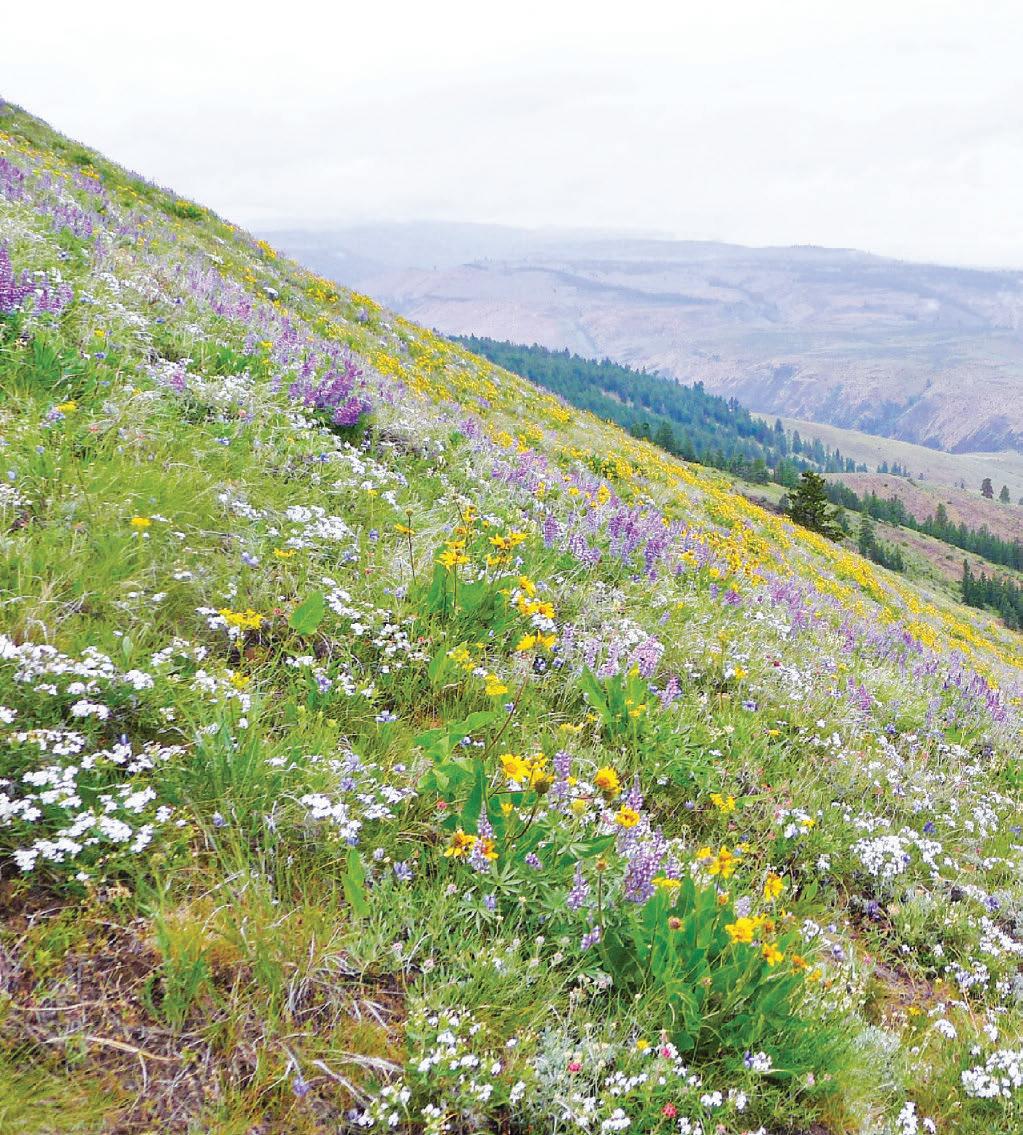
Where The Wild Things Grow
154 Northwest Sportsman MARCH 2024 | nwsportsmanmag.com
CHEF IN THE WILD

 IBy Randy King
IBy Randy King
like to blame my fascination with wild plants on turkeys, bears and onions. Specifically, a hillside in northcentral Idaho in turkey season back in the 1990s with my father. While on that hike, I could smell onions, but it made no sense to me. Was it my breath? My shirt? Was breakfast clinging to me that much? Why did this wet hillside smell like chives?
Then we saw a bear at work digging up a bright-green slope. My father and I instinctively crouched and found cover. We watched as the bear dug, flipped rocks and consumed green onions. We could smell
the onions even more strongly from where we were sitting as the cool spring breeze carried the scent our way. We watched the bear for over half an hour before the wind changed and he caught our human stink. (Bear tags in this unit are draw only, so the animal was never going to be harmed.)
We made our way to where the bear had been digging and Dad produced a dime-sized bulb from the ground. He brushed off the dirt, smashed it and had me smell the onion stank on his fingers. It was powerful, like a normal onion but somehow more alive, more intense. Then he ate it. I smiled, did a little rooting myself, and found a bulb. I peeled it and ate it. And man, what a rush of flavor. It was onion, but somehow it was spicy too.
Mind = blown.
Since then, I’ve been on a journey of discovery with wild plants, berries and fungus. I try to learn more and more each year, but I think some years I forget more than I learn. I go on sprints of book-buying that teach me more about gathering plants in various climates. At this point, I have books for Idaho, Alaska, California, Coastal Oregon, the Rocky Mountains and Minnesota.
Ahem, some of those are a lot more useful than others.
Some years I just go forage salad greens from the river near my house. But I will always stop and eat a wild onion in spring turkey season.
Always. NS
nwsportsmanmag.com | MARCH 2024 Northwest Sportsman 155 COLUMN
Wild onions pepper a spring slope carpeted with arrowleaf balsamroot, lupine and other plants. Foragers can find plenty of greens in spring, but just as with mushrooms, being able to identify edible from nonedible plants is critical. Wild onion looks like death camas, but can be differentiated by smell and other attributes. (UPUPA4ME, FLICKR, CC BY-SA 2.0)

EASY SPRING SALAD GREENS
Afew years back, I took a reporter on a walk down the greenbelt in my hometown of Nampa, Idaho. The goal was to count the number of wild plants and edibles I could find in an hour. Then I was going to go back to my house and make a meal for her. It was a fun Tuesday.
We walked the greenbelt and I found no less than 19 different plants that we could eat. We did not harvest all of them, as I had a menu in mind and did not need them all, but my point is that wild food surrounds us. So much so that it can be hard for those who don’t know about wild foods to even get started.
Naturally, people have concerns around the safety of ingesting plants –is it poisonous? What about pesticides?
Did a dog pee on it? All those questions and more may rattle around your head while eyeing up wild plants for harvest. And some are absolutely valid – I know of a plant that if you rub the white ooze that leaks out when you pick it into your eyes, you can go blind. And yep, dogs pee on stuff. So you do need to use common sense about where you harvest, and you absolutely want to wash all of your wild plants before consumption.
I suggest picking a few wild greens that you can identify easily and know are safe, and beginning the process there. They might even be in your lawn!
DANDELIONS ARE TASTY and you should eat them. They are not a weed, as has
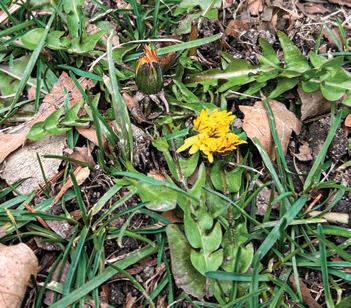
Dandelion might be one of the most ubiquitous edibles. While considered a weed and the bane of lawn lovers, multiple parts of the plant are edible. (RANDY KING)
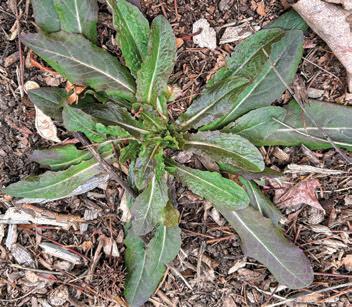
been decided by Big Lawncare, but are in fact a triumph of deliciousness.
The leaves taste better than arugula. The roots are awesome in salads or cooked in stir-fry. The flowers make great garnishes and salad additions. The unopened bulbs make killer “pickles” when done right.
The dandelion was brought over on the Mayflower (yes, that Mayflower) for medicinal and food use. It is not a weed, though your HOA might not agree.
Go pick a few leaves from a safe spot, wash them, then toss them into a spring green salad. You won’t even notice they are in the mix. The dandelion will blend right in with the rest of the greens.
There’s a reason dandelion is first on my list: It will open the wild plant door for you and soon you will be picking onions in the hills while chasing gobblers.
MALLOW, ALSO KNOWN as buttonweed,
156 Northwest Sportsman MARCH 2024 | nwsportsmanmag.com COLUMN
No need to head for the hills for salad greens – a lot of wild food just ain’t that far away. A stroll along a sidewalk might turn up mallow, the leaves of which can be used in salad or help thicken a soup, depending on growth stage. (RANDY KING)
Edible weeds like dock often green up way before native plants or gardens begin to produce. (RANDY KING)

is another garden “weed” that has lots of different culinary uses. The leaves of the plant are great in salads when young. When the leaves are older and cooked, they can help thicken up a soup like okra.
Mallow gets its name from a variety that grows in marshy regions and the roots, when boiled, create a viscous extract that can be whipped into a meringuetype dessert. That’s right – marshmallows get their name from a type of this plant. The weed in your garden!
DOCK IS A leafy green that goes well when raw or cooked. The leaves have a citrus twang to them when raw. They are a great substitute for collard greens when the leaves are mature.
Also nonnative to the US, having come over in feed and animal coats from its native North Africa and Europe, dock is a perennial, so if you find a good plant or stand of them, you can pick from them year after year.
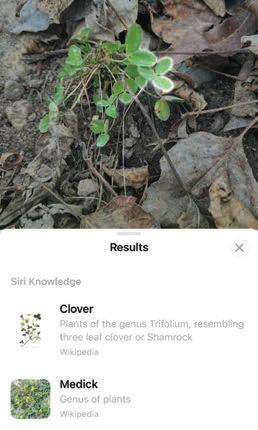
Got a phone? You’ve got a salad shooter – or at least a camera and an app or two that can help identify what you’re looking at, in this case clover.
(RANDY KING)
ANOTHER EUROPEAN TRANSPLANT, clover is typically known as a “cover” crop, but it is a tasty little treat in salads. The flowers are very pretty too for garnish. As a wild spring crop, they are easy to identify and a fun little trail snack.
A GREAT DEVELOPMENT in recent years is the creation of simple plant identification apps. My iPhone, for example, has a builtin app. I simply take a photo of a plant, then hit the button below the picture. This will take me to a web description of the plant I’m looking at. It’s perfect, and it actually identified a plant that I thought was dock but was primrose. Both look very similar at early stages and the app changed my mind. Other apps like Plantify, Plant Identifier and PlantIn all do a good job of helping you identify edible wild plants.
Start with the “weeds” in your garden, then branch out to the riverbeds and parks near your house. Then, soon enough, you will be picking wild onions glassing bears and hunting turkeys. –RK

158 Northwest Sportsman MARCH 2024 | nwsportsmanmag.com COLUMN
CUMBERLAND’S NORTHWEST TRAPPERS SUPPLY
Hide Tan Formula has been used successfully by thousands of hunters and trappers across the U.S. and Canada. No more waiting several months for tanning. Now, you can tan your own hides and furs at home in less than a week, at a fraction of the normal cost. Our Hide Formula tans deer hides either hair-on for a rug or mount, or hair-off for buckskin leather. Tans all fur skins – muskrat, mink, beaver, fox, coyote, raccoon, squirrel, rabbit, etc. It also applies to bear, elk, moose, cowhide, sheep and even snakeskin. Hide Tan Formula is premixed and ready to use and produces a soft, supple Indian-style tan in five to seven days.
One 8-ounce bottle will tan one deer hide in two medium-sized fur skins. Bear, elk, moose and caribou require three to six bottles. Complete instructions are included. You’ll be amazed how easy it is!
Tanned hides and furs are great to decorate your home or camp and also to sell for extra income. Tanned hides and furs are in demand by black powder enthusiasts, American Indian traders, fly tyers, country trading posts and many crafters. Our products are proudly produced and bottled in the U.S. for over 20 years.
Available at Cumberland’s Northwest Trappers Supply in Owatonna, Minnesota.
Call (507) 451-7607 or email trapper@nwtrappers.com. nwtrappers.com
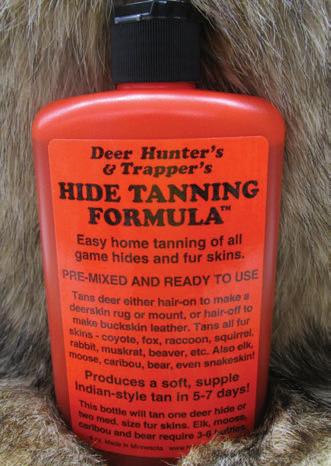

Cumberland’s Northwest Trappers Supply is your one-stop trapping supply headquarters, featuring one of the largest inventories







nwsportsmanmag.com | MARCH 2024 Northwest Sportsman 159
Cumberland’s Northwest Trappers Supply, Inc. P.O. Box 408, Owatonna, Minnesota 55060 • (507) 451-7607 trapper@nwtrappers.com • www.nwtrappers.com Over 50 Years Of Service To The Trap & Fur Industry
friendly
Request A Catalog Or Place An Order By Phone, Mail Or On Our Website “Trappers Hide Tanning Formula” in the bright orange bottle. Retail & dealer inquiries are welcome. If you get in the area, visit our store!
in the U.S. We are factory direct distributors on all brands of traps and equipment which allows us to offer competitive prices. Give us a try. Our fast,
service will keep you coming back.
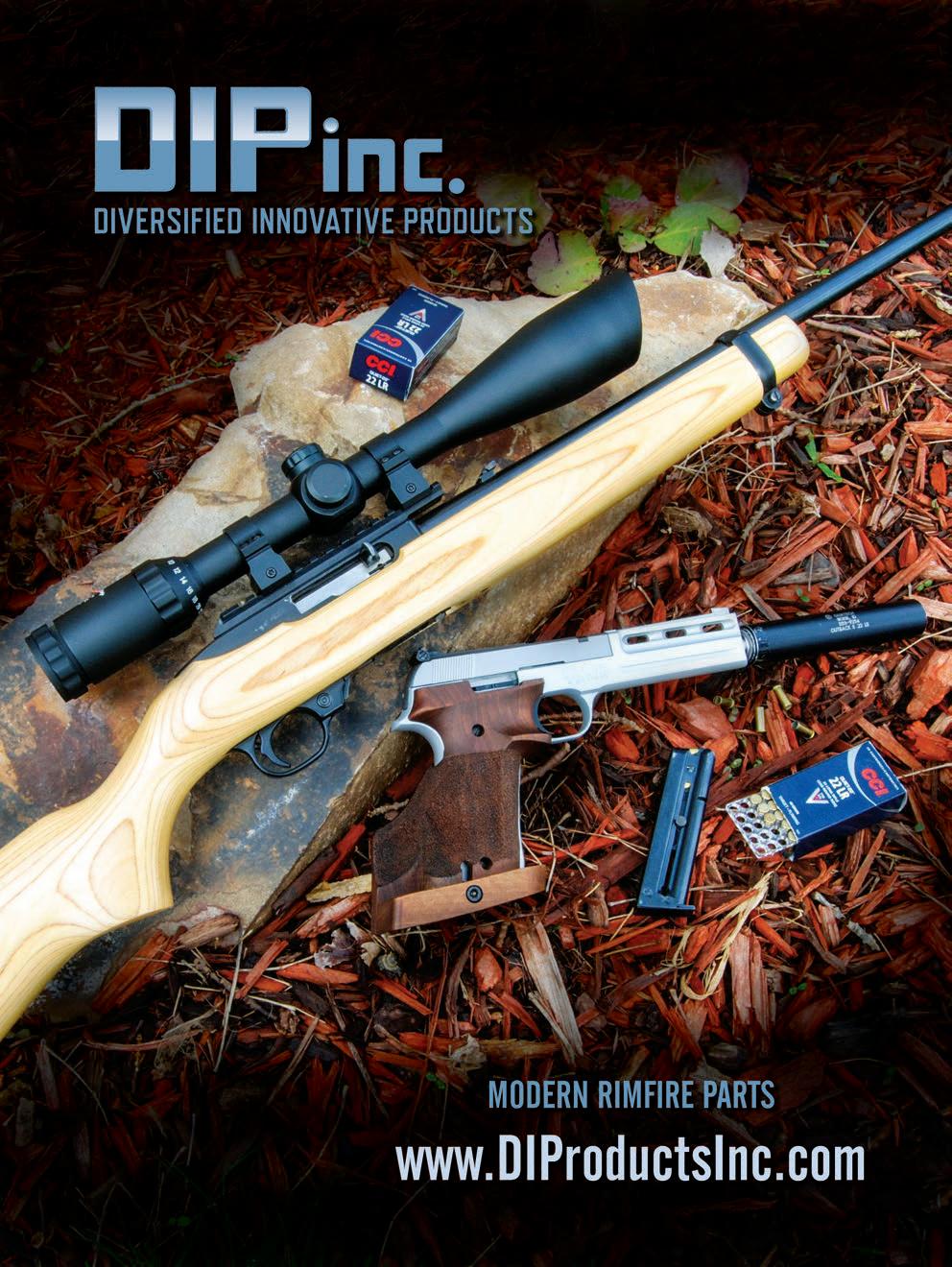
Overcoming The Comparison Trap

NBECOMING A HUNTER
By Dave Anderson
ot long ago I was listening to a podcast and someone made the comment that “comparison is the thief of joy.” The statement stuck with me for not only being a powerful sentiment, but one to which I could easily relate. It is so true when it comes to hunting and fishing.
When I was younger, my dad and I would submit fishing pictures to the local bait shop in Spirit Lake, Iowa. The pictures of the fish we caught would sometimes be entered into their contest or end up being printed in the local newspaper. They called it the brag board. Flash forward to the present and we now have social media like Facebook, Instagram and YouTube to thank for an unlimited supply of brag boards for posting pictures or videos of your harvests on land or sea.
It is easy to get caught up in all these photos, wishing that you had a chance to get out and harvest that huge six-point bull, that giant four-by-four mule deer or a 30-pound Chinook. Just looking at pictures can really get a person wrapped around the axle and feel like their experiences are not quite the same or not as good as what they see others post. I’ll even admit I have been in
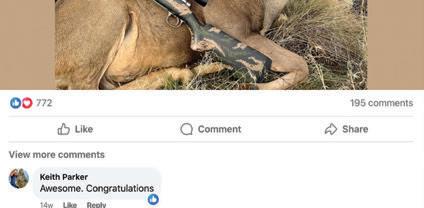
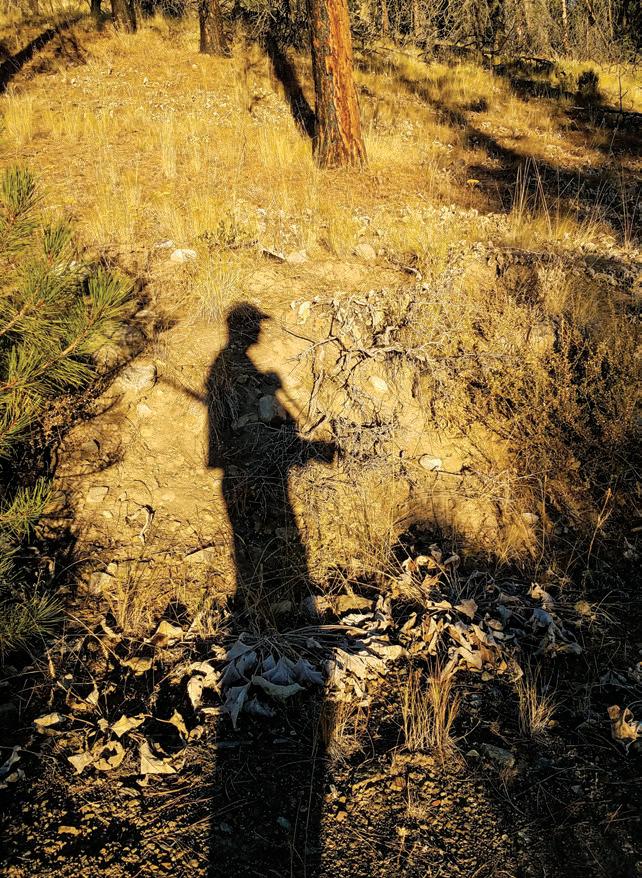
nwsportsmanmag.com | MARCH 2024 Northwest Sportsman 161
COLUMN
The success of others (left) can cast a very long shadow for beginning hunters, but comparing yourself to those who may have far more experience just isn’t fair. Seek out happiness in your own hunts and time outdoors. (ANDY WALGAMOTT)
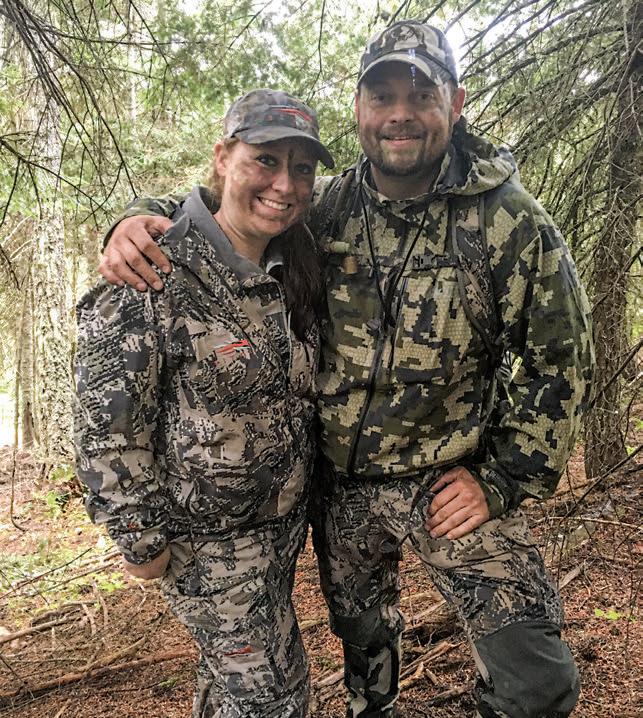
this situation in the past after seeing pics of my peers harvesting giant bulls and massive bucks as I sat on a plane or traveled for work.
FOR BEGINNING HUNTERS, what you see on social media versus the reality of what you see in the field is going to be different anywhere you go. Maybe you are fortunate to have access to some awesome private land, where wildlife is abundant. Perhaps you are hunting public land, where there are more people getting out into the woods and the pressure on animals is higher. I have also received some reports from outfitters and friends of mine seeing people in backcountry places they’ve never seen anyone before. We can give thanks for part of this to YouTube for showing everyone how “easy” it is to get further back and spend days in the mountains away from everyone. But
this is not true in every area and there are still some hidden gems where you can get away from folks. My point is that your expectations may be very different from reality once you are out in the mountains experiencing the hunt firsthand.
When I first started hunting the mountains of Idaho, Montana and Wyoming in the early 2000s, I was able to experience some truly world-class hunting. Most of the areas I guided, you were almost guaranteed to kill a bull on a seven-day backcountry hunt and deer were plentiful. I still visit some of those areas, but feel that the quality of hunting has significantly declined due to the introduction of wolves. However, the one good thing that we as hunters have available to us are websites like GoHunt, Eastman’s TagHub and Huntin’ Fool, which will point you in the right direction to let you
know what your odds are and statistics for years past. If you are not part of one of these websites, I would highly recommend it.
I have been extremely lucky to have had some epic adventures and harvests without putting in a ton of time. Part of this is my knowledge through reading, listening to others and my in-field life experiences that have helped me to be successful. I know where to look and, depending on the time of year, what areas will hold wild game. I know that if I put in more time during the summer, camping, hiking and exploring the areas I plan to hunt that fall, my odds of success will be much higher than if I do not.
I ALSO BELIEVE in the statement that there is a season for everything, and seasons change. At some point down the road, I will be able to dedicate more time to hunting and the outdoors, but the season of life I have been in the past few years has included a lot more dedication to my wife Kristina and our two young boys, Ryland, age 6, and Barrett, age 4. I have chosen to commit more time to being with my family instead of spending time hunting in the field. As our sons have gotten older, we have started to bring them along on hunts and scouting trips. I would love to hunt every weekend and every free moment I get, but with my job it is hard to be away during the week and leave my family on the weekends too. I consistently try and remember how lucky I am to have two strong-willed, healthy and energetic boys who love the outdoors as much as my wife and I do. And as our seasons of life change, I am super excited to start including them more on different hunts so I can continue to pass down the traditions that Kristina and I have enjoyed together since we met.
If you’re just getting into hunting and have unlimited free time without any obligations to family, I recommend making the most of it. Get out there now and spend as much time afield as you can. It will pay dividends down the road, giving you the knowledge of what to look for so that when you do get to the point where you do not have much free time, you can still be successful based off your past experiences.
COMING BACK TO the statement, comparison is the thief of joy, it is super easy to get caught up in all the pictures and videos and

162 Northwest Sportsman MARCH 2024 | nwsportsmanmag.com COLUMN
A key realization that author Dave Anderson has made is that there’s a season for everything. The time he once had to give his all to hunting isn’t available right now as he and wife Kristina raise two young sons, so of course buddies are probably going to be able to achieve bigger and better results, but it doesn’t make him any less of a sportsman. (DAVE ANDERSON)

trying to figure out how in the world these people find the time and support to get away for weeks at a time from children or other obligations they may have. It is easy to get wrapped up in different thoughts and perhaps disappointment thinking about how awesome it would be to have that kind of time to get out and be alone. But in reality, when we compare ourselves and our situations to others, we only reap feelings of inferiority, which is not healthy. Rather than turning to comparison and getting down on how good others have it while wishing you
had the same, look at all the good things you do have. Even though your time in the woods may be brief, look at the fun experiences you do get to engage in.
In the end, life is what you make of it. Don’t compare yourself and your hunting experiences to others. Also, do not hate or spread hate. Be happy for other people’s success. Hunters need to stand up for one another and support each other. Instead of talking negatively about someone, look at things you could take away from their success and add it to your playbook.
Most people are so quick to judge. Many of the sponsored hunters have worked extremely hard to get to where they are. They have earned the opportunities to hunt private land and go on epic guided adventures, and a lot of them started at ground zero. Through dedication and strong will they have gotten themselves to where they are today. You could be that person 10 to 20 years down the road if you really want to. Some of it is luck, but there is no competing with persistent hard work, commitment and dedication. NS
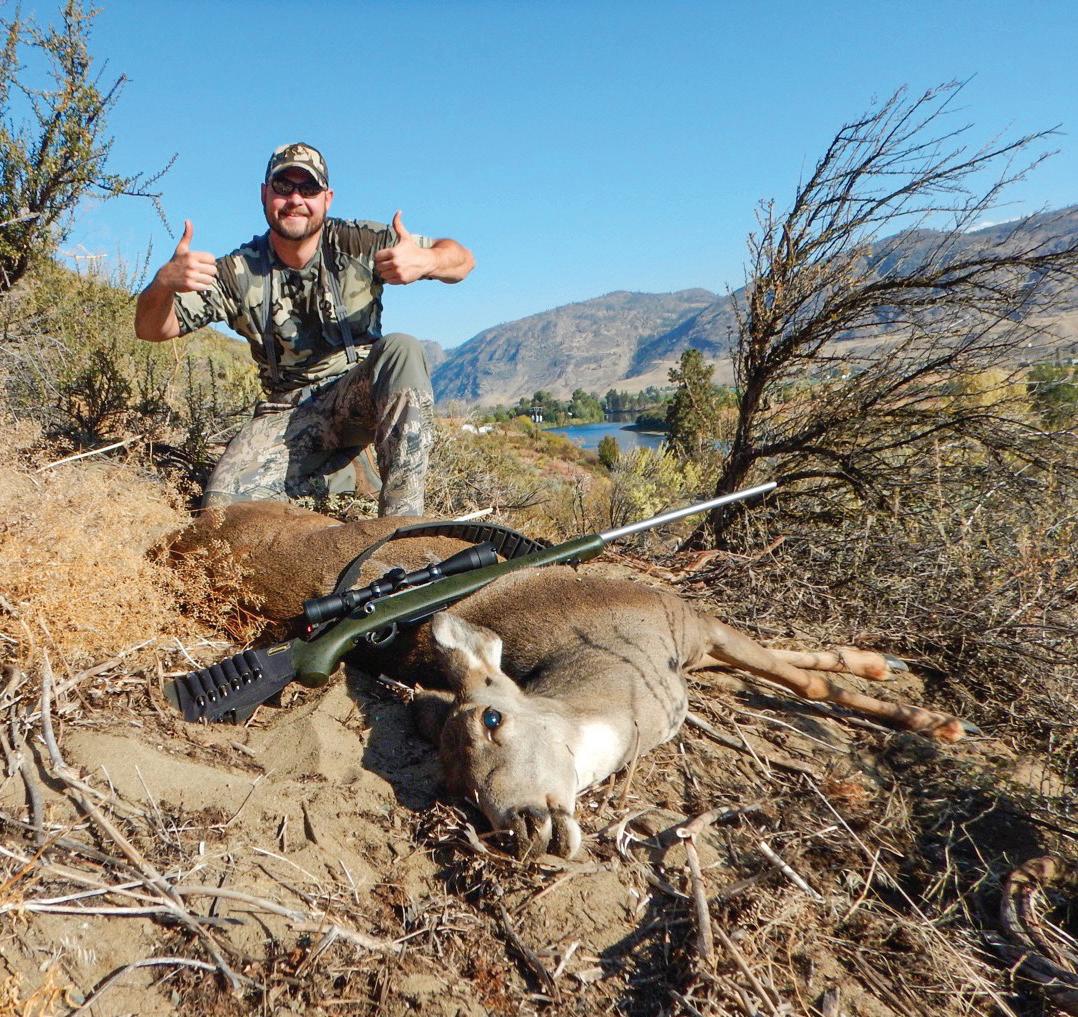
164 Northwest Sportsman MARCH 2024 | nwsportsmanmag.com COLUMN
“Be happy for other people’s success. Hunters need to stand up for one another and support each other,” urges Anderson. (DAVE ANDERSON)
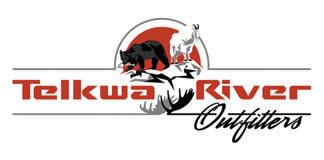


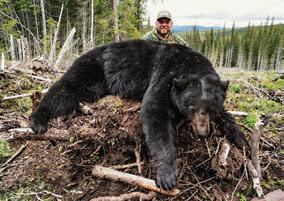
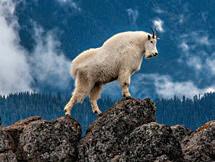


CUMBERLAND’S NORTHWEST TRAPPERS SUPPLY
Hide Tan Formula has been used successfully by thousands of hunters and trappers across the U.S. and Canada. No more waiting several months for tanning. Now, you can tan your own hides and furs at home in less than a week, at a fraction of the normal cost. Our Hide Formula tans deer hides either hair-on for a rug or mount, or hair-off for buckskin leather. Tans all fur skins – muskrat, mink, beaver, fox, coyote, raccoon, squirrel, rabbit, etc. It also applies to bear, elk, moose, cowhide, sheep and even snakeskin. Hide Tan Formula is premixed and ready to use and produces a soft, supple Indian-style tan in five to seven days.
One 8-ounce bottle will tan one deer hide in two medium-sized fur skins. Bear, elk, moose and caribou require three to six bottles. Complete instructions are included. You’ll be amazed how easy it is!
Tanned hides and furs are great to decorate your home or camp and also to sell for extra income. Tanned hides and furs are in demand by black powder enthusiasts, American Indian traders, fly tyers, country trading posts and many crafters. Our products are proudly produced and bottled in the U.S. for over 20 years.
Available at Cumberland’s Northwest Trappers Supply in Owatonna, Minnesota.
Call (507) 451-7607 or email trapper@nwtrappers.com. nwtrappers.com
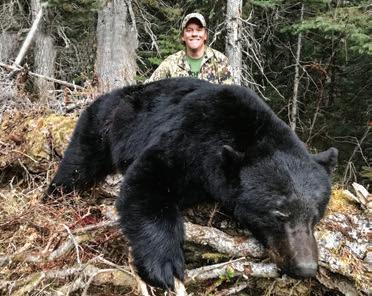

nwsportsmanmag.com | MARCH 2024 Northwest Sportsman 165 250-644-0081 • telkwariveroutfitters@gmail.com • telkwariveroutfitters.com HUNTING IN B.C. BLACK BEAR MOUNTAIN GOAT LYNX WOLF MOOSE Contact
To Start
Us
Your Hunting Adventure



Choose quality Alaskan-made gear when planning your next adventure. GUN SCABBARD waterproof gun bag Homer, Alaska • 800-478-8364 • nomaralaska.com ATTENTION NORTHWEST SPORTSMAN READERS Mention this ad for a FREE carry strap with purchase of the gun scabbard. Shop nomaralaska.com to see all the gear we make for outdoor adventures.







































































































































































































































 Antares 7 Fishing
Antares 7 Fishing














































































































































 By Jason Brooks
By Jason Brooks












































































 IBy Randy King
IBy Randy King






























